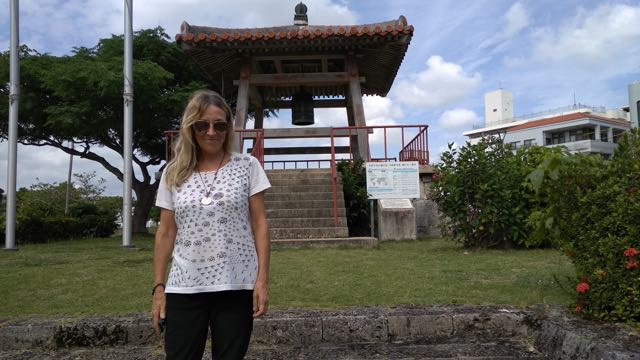When I was a kid, my parents always said if you have a problem when out and about, ask a bobby, that’s a policeman for those outside of the UK, or not born mid last century! This might have been partly because my dad was a bobby for most of his working life, and any bobby I asked for help, was likely to know him, and might even know me from the police Christmas parties, or the various police cricket / sport activities I was dragged along to as a kid. However I would not offer such advice to anyone in Japan.
Why? well our plans are evolving, and right now the typhoon season has brought strong winds that has affected our departure date and location, rather than heading towards Tokyo and checking out of Japan there, or in Coshi, East of Tokyo on the coast, we may well leave from here, Kushimoto. We have everything we need for the passage now and the supermarkets are great, so we can stock up on fresh products without any issue. However Kushimoto lacks an Immigration and Customs office, so I need to find the nearest one, get a train there and get our passports stamped with an exit visa and get customs clearance so we can check into the USA. So how to find out where the office is, the Internet was no use, everything led me back to a number in Osaka I should phone, but I was reluctant to try this as they probably won’t speak English, and we don’t have a phone, so it would have to be on Skype. I asked at the tourist office, where the lady spoke great english, but she could only guess that the next big city might have one. So I thought the police might know, they have a big office here and must have relations with immigration so they should have some idea.
So I popped into the local station, telling Kathy I would be back in a few minutes so we could head off on our bikes and explore the promontory which is the most southern point on Honshu Island, more on that later. The police in the station spoke no English, so we were off to a bad start, after a lot of gesturing I thought I had got my point over, but they didn’t seem to have any ideas, I tried to leave but they asked me to stay, I had shown them my passport, and explained I needed a stamp, fairly easy to do on the gesture front, fairly easy to misunderstand as well, it seemed, as another officer, there were now 6 on the case arrived and took my passport, he seemed to be quite excited about this, and all 6 were on their mobile phones. I pronounced that I had to leave and not to worry, but they wouldn’t let me go. After an hour of them calling people, I was handed a mobile phone and spoke to a translator they had enlisted. He needed me to answer questions, how had I arrived in the country, was I alone, where was my wife, how much money had I brought into the country etc etc. I was a bit pissed off by now and asked why he needed to know, but the phone was taken off me and I was told to wait; another 30 minutes of watching them all phone people, more questions about my status as a traveller, then somebody shouted July, July , No June. At this point most of the police disappeared, leaving this younger detective to call the translator, who explained to me that in fact I hadn’t overstayed and everything would be ok as long as I applied for an extension before the end of July, another month away!
It appears they had misread my visa as expiring in June, not July and had me down as a criminal for overstaying my visa, given the state of crime here, I might have been the biggest criminal they had encountered in some time, and this would surely make the 6 o’clock news! Once it became apparent they couldn’t read a visa stamp properly, and to be fair June/July are western words, but to be fair to me, it was a Japanese immigration office stamp, so they should be able to work with the police to get a system that works, they all looked a bit embarrassed and most of them snuck away, leaving the young detective to ask me to wait a bit longer. I wasn’t really in a good mood at this point, it felt like I had been there for hours, but knowing how hot they are on manners, I waited a bit longer, only to be rewarded with the number for the Osaka branch, which I already had, and a request to call them on Monday when they were open!
I returned to Kathy, with one of my better excuses for being late!
So tomorrow I will phone Osaka, and I expect we will be told to visit the office in Wakayama City, a couple of hours on the train, but probably a nice day out.
Weather Fax (WEFAX)
Just a bit of info on Weather fax, forecasting and typhoons.
Right now we are ready to leave, with good winds from the right direction, we should reach the Juan de Fuca strait in the USA within six weeks, but we could be out there for longer if we don’t get the wind. At this time of the year we have two main concerns, one is leaving Japan, as typhoons (the Asian name for Hurricanes) arrive frequently, this is perhaps the worst area in the world for typhoons, and combined with strong ocean currents from the Kuro-shio current, we have to time our departure so we can get a few hundred miles offshore, and as far East and North as possible to escape the typhoon area and get into the favourable currents. The other concern then is to get the right course for the wind. In the North Pacific, much as in the North Atlantic, the weather consists of a series of low pressure systems travelling from West to East. These are sandwiched between high pressure systems on the artic and equatorial sides. The trick is to ride along the bottom of the lows around about 35-40deg N, then halfway across, head NE to our destination. Wander towards the centre of the low, and the wind may be too strong, wander into the highs and the wind disappears. If you end up at the top of a low you will have strong headwinds and an uncomfortable ride. Things are running a little late this year and the lows and highs aren’t where we want them to be, but the typhoons are around, we have had two since the end of the rally. Once we leave we won’t have internet, just a very basic email connection via our sat-phone. We can download weather forecasts and try to steer based on that, but we also have weather fax, which we can get over the HF SSB Radio.
I have included some pictures below that we receive. 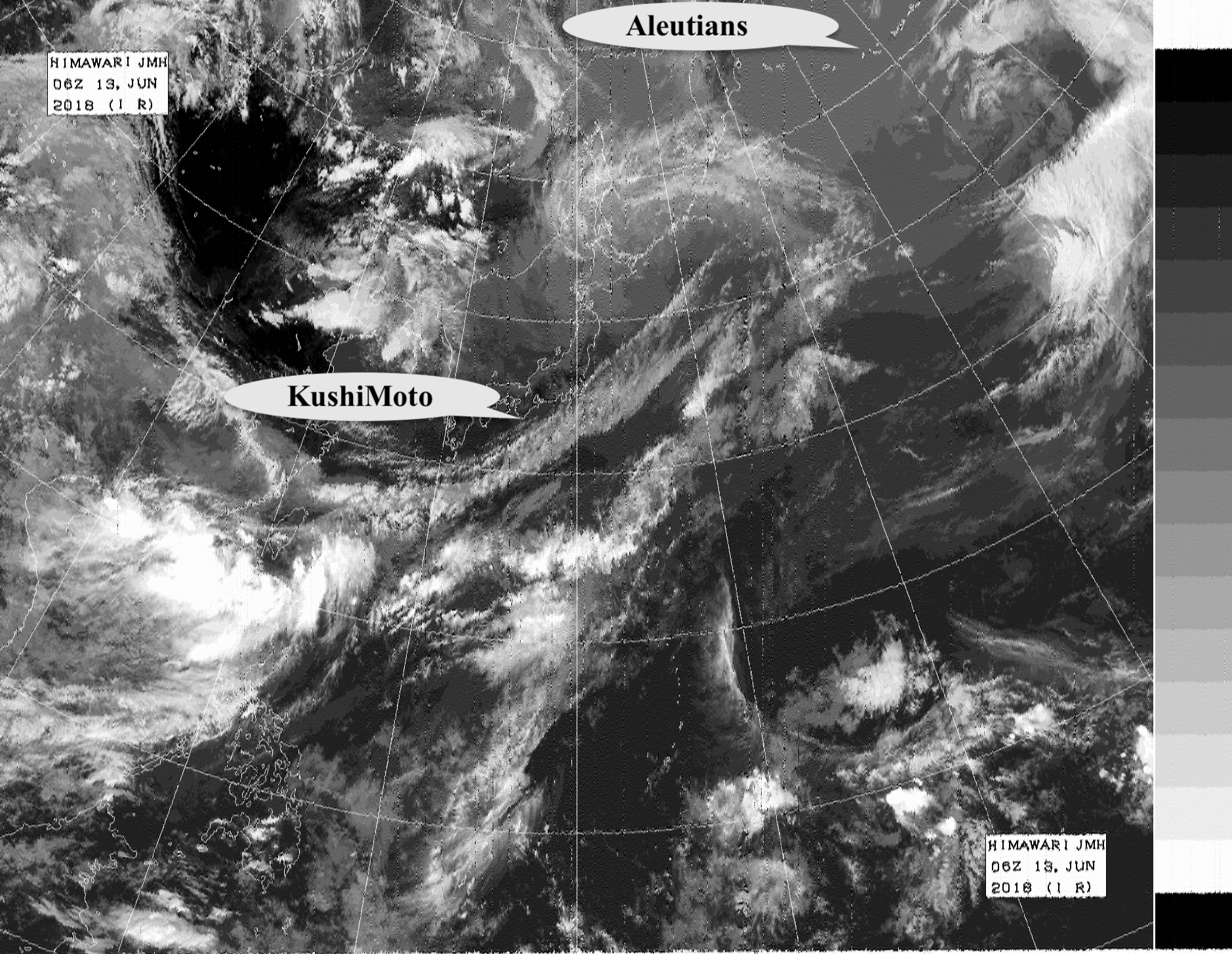
The above pic is annotated by me to show our location.
Below is the path of the Typhoon that is now downgraded and passing us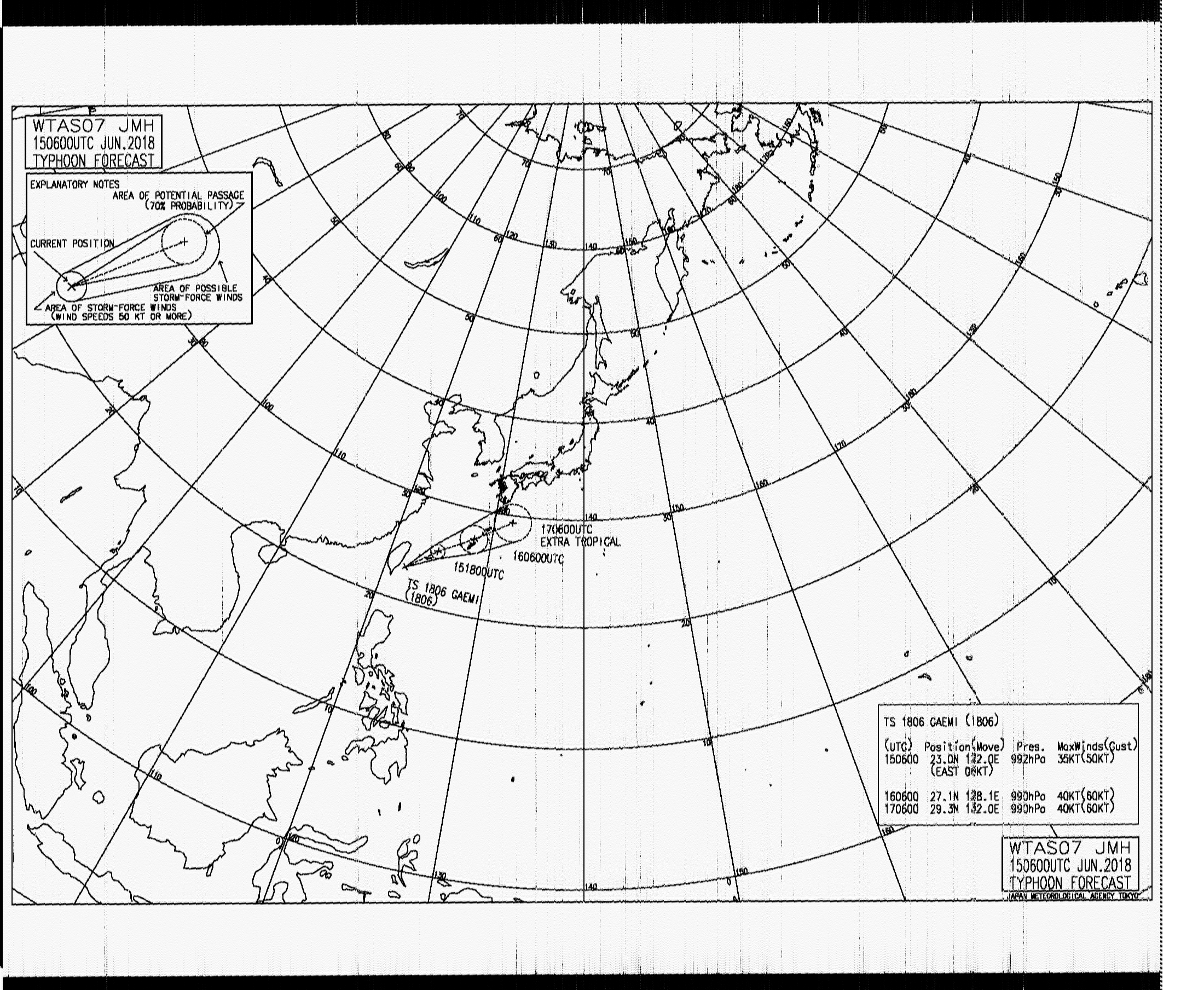
Here you can see the typhoon has become a normal low, still with strong winds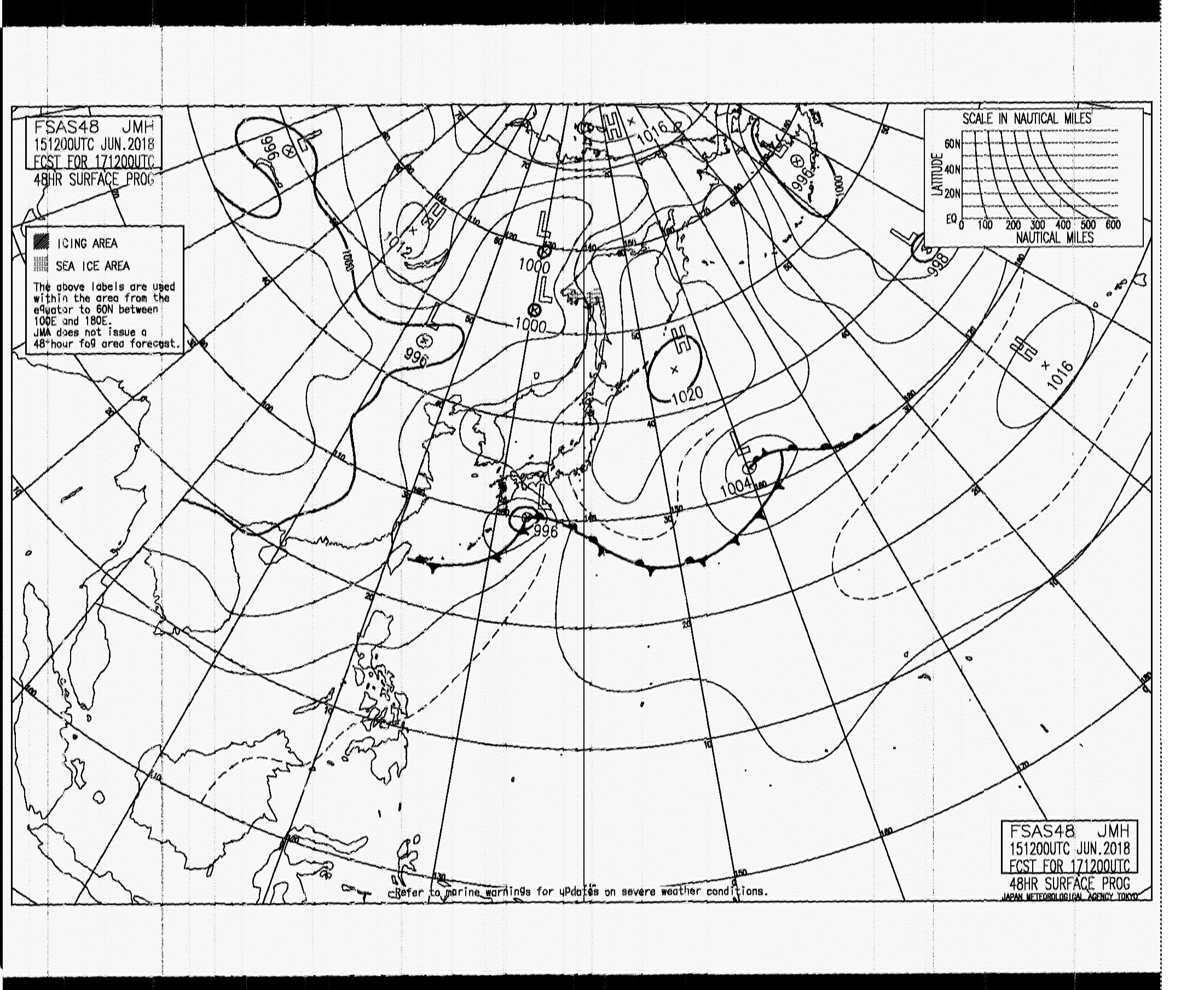
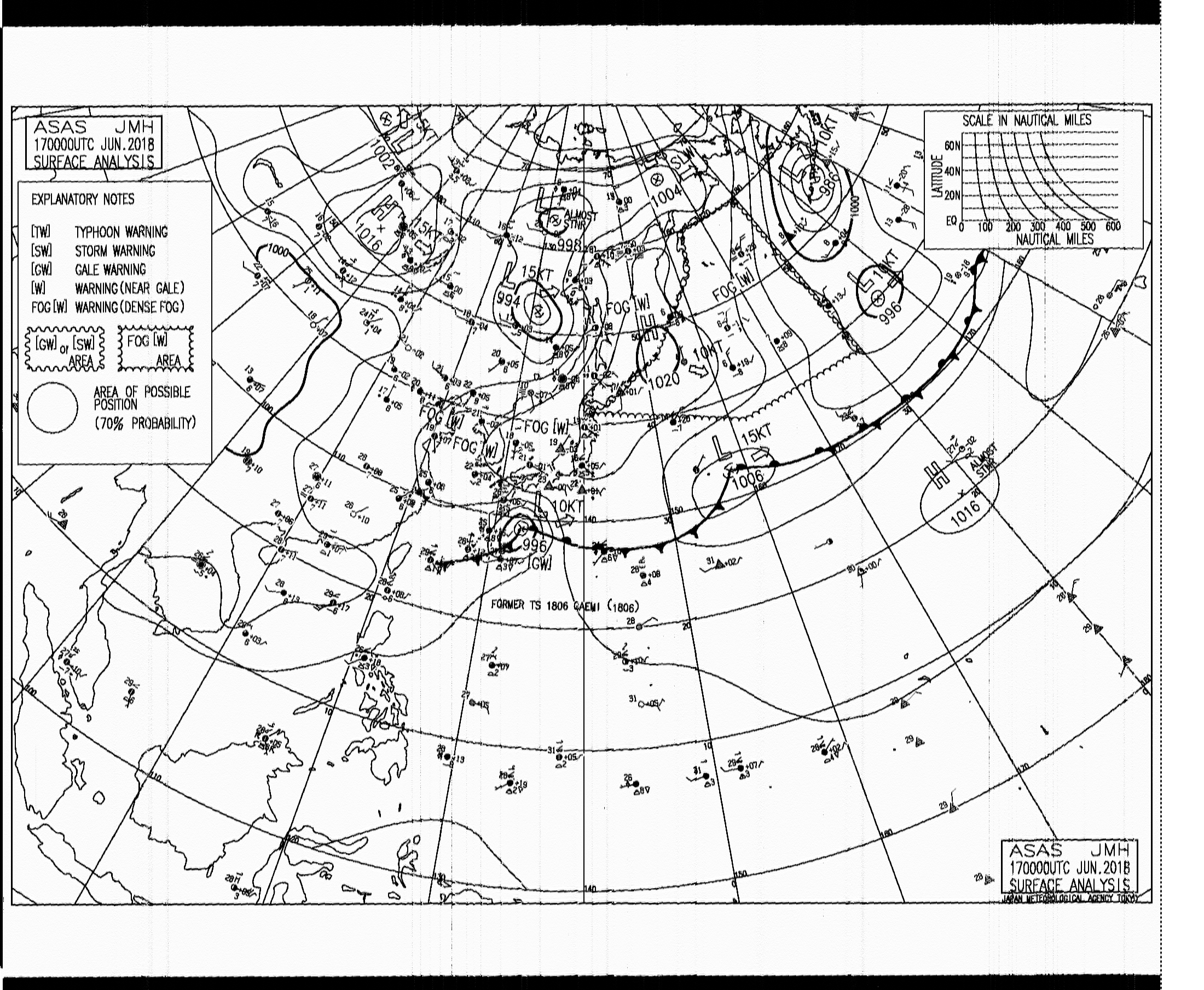
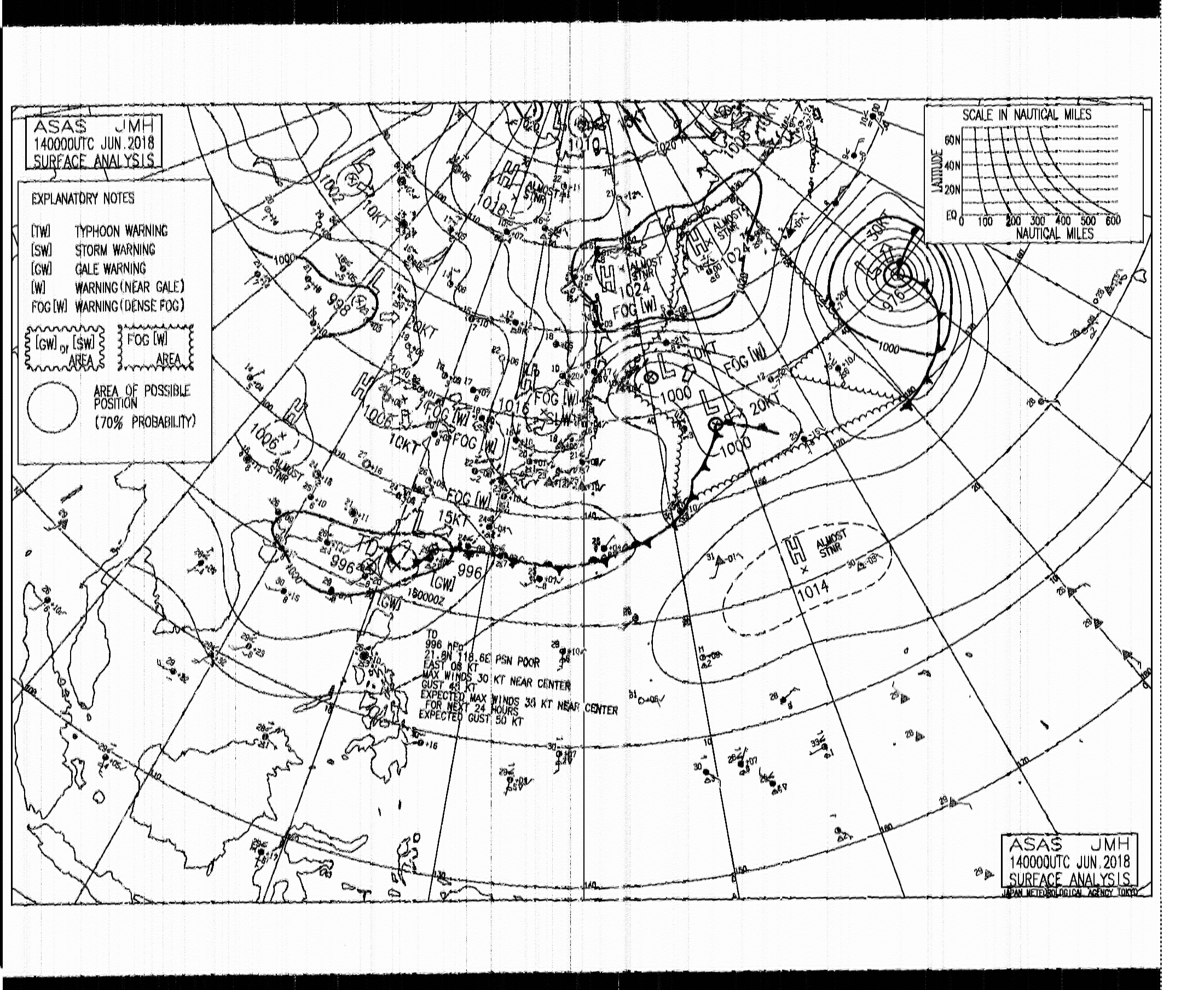
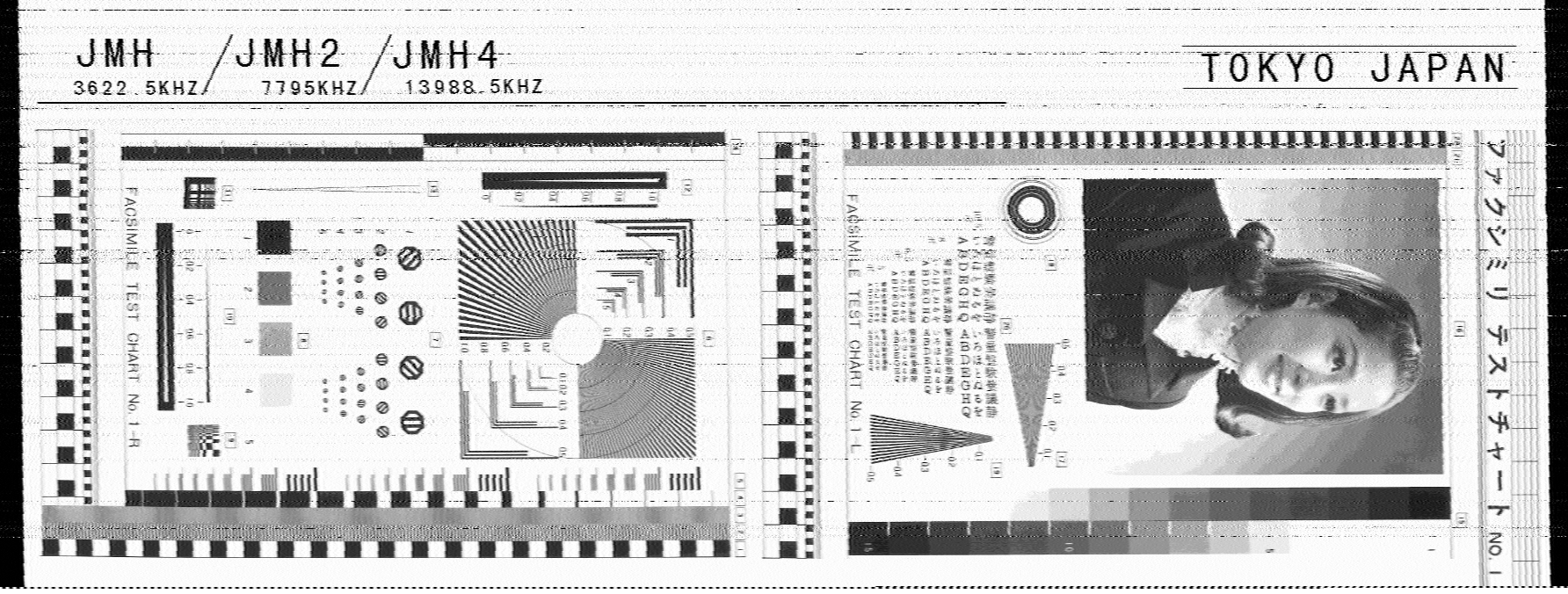
The technology , or rather the protocol is analogue based using tones, much like early modems did, and has been around for many decades, but it’s amazing how good the quality is as you can see from the rather cute testcard they have..
These are free to receive and I use a program called FLDigi on the MacBook to decode the audio signal int pictures.
Right now it looks like the current typhoon has been degraded to a gale, and it has now taken on the standard form of a low pressure system with a cold and warm front, we will wait for it to pass us by on Monday/Tuesday, and jump onto its tailwinds as it heads ENE and follow it away from Japan. So Wednesday 20th is the current ETD.
Here are some pictures of us leaving the Ichimonji Yacht club we just received from them.
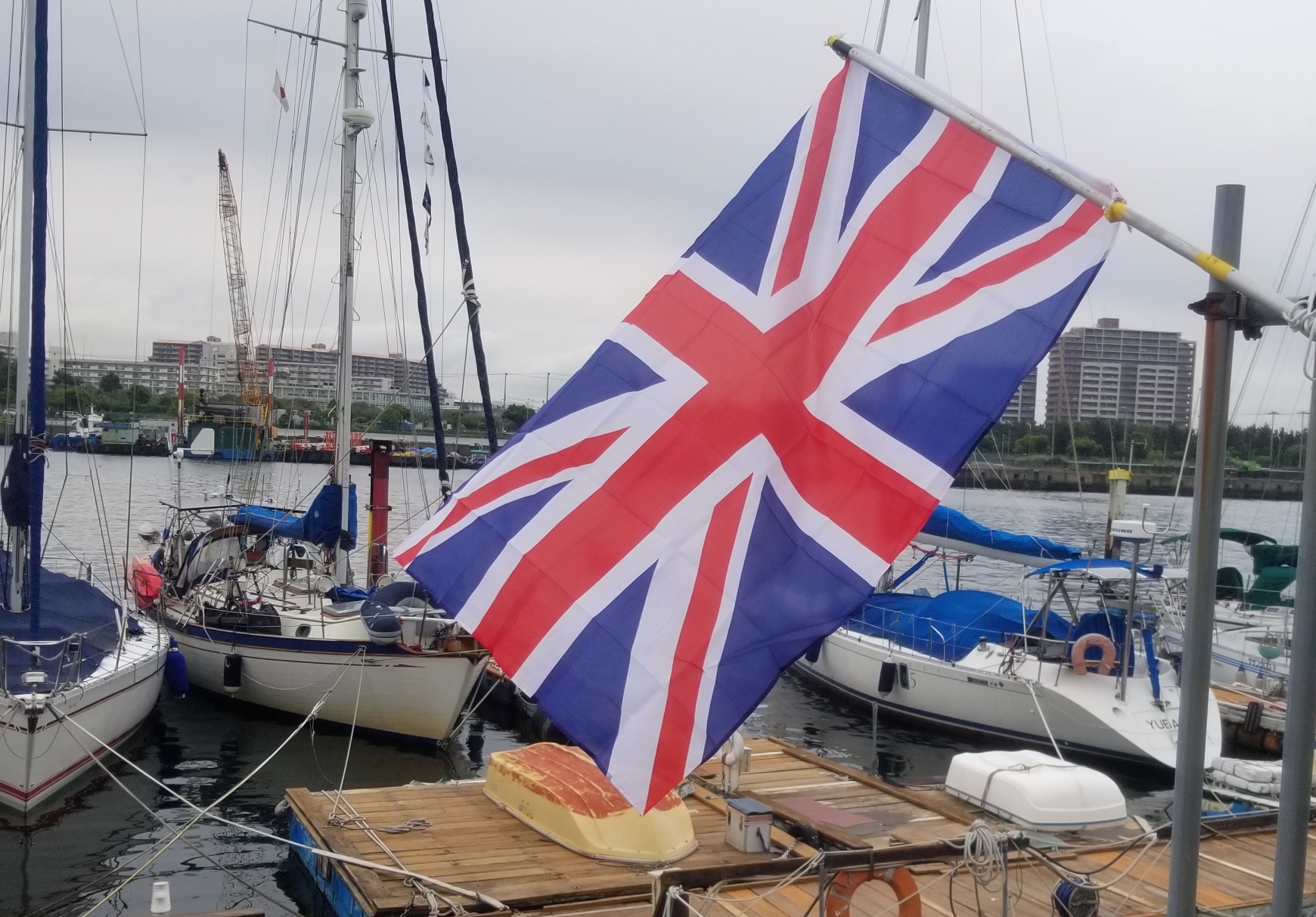
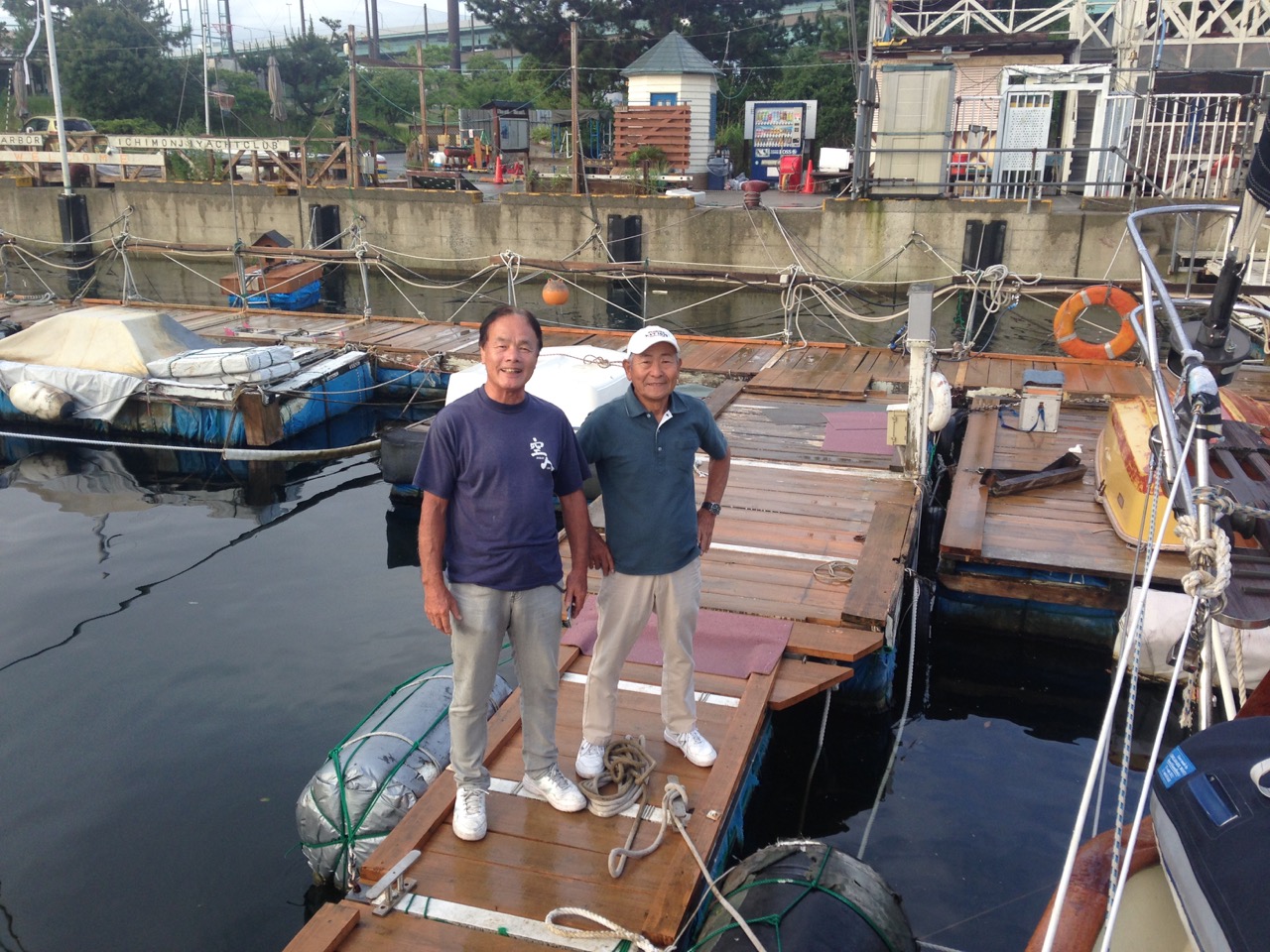

So until we get our clearance from Immigration and customs, we wait here hoping the weather behaves as predicted. I took the emergency tiller I made to a local workshop in the docks here and they welded it up for me, they did a lovely job, and wouldn’t accept any payment for it, but they seemed to appreciate my very low bow in return. On the bowing front, I noticed people bow to each other when on the phone, seems a bit superfluous to me, but must be similar to how I would nod in agreement to someone I was talking to on the phone. Interesting all the same. I have painted the tiller to stop it rusting and fitted a wooden extension to get the full length out of it. I was disappointed, but not really surprised that when I painted a completely smooth surface of new steel, a smoother surface you could not wish for, I ended up with lumps and ridges, brush hairs sticking out and bits of metal unpainted. Painting continues to be a challenge for me.
Paul Collister

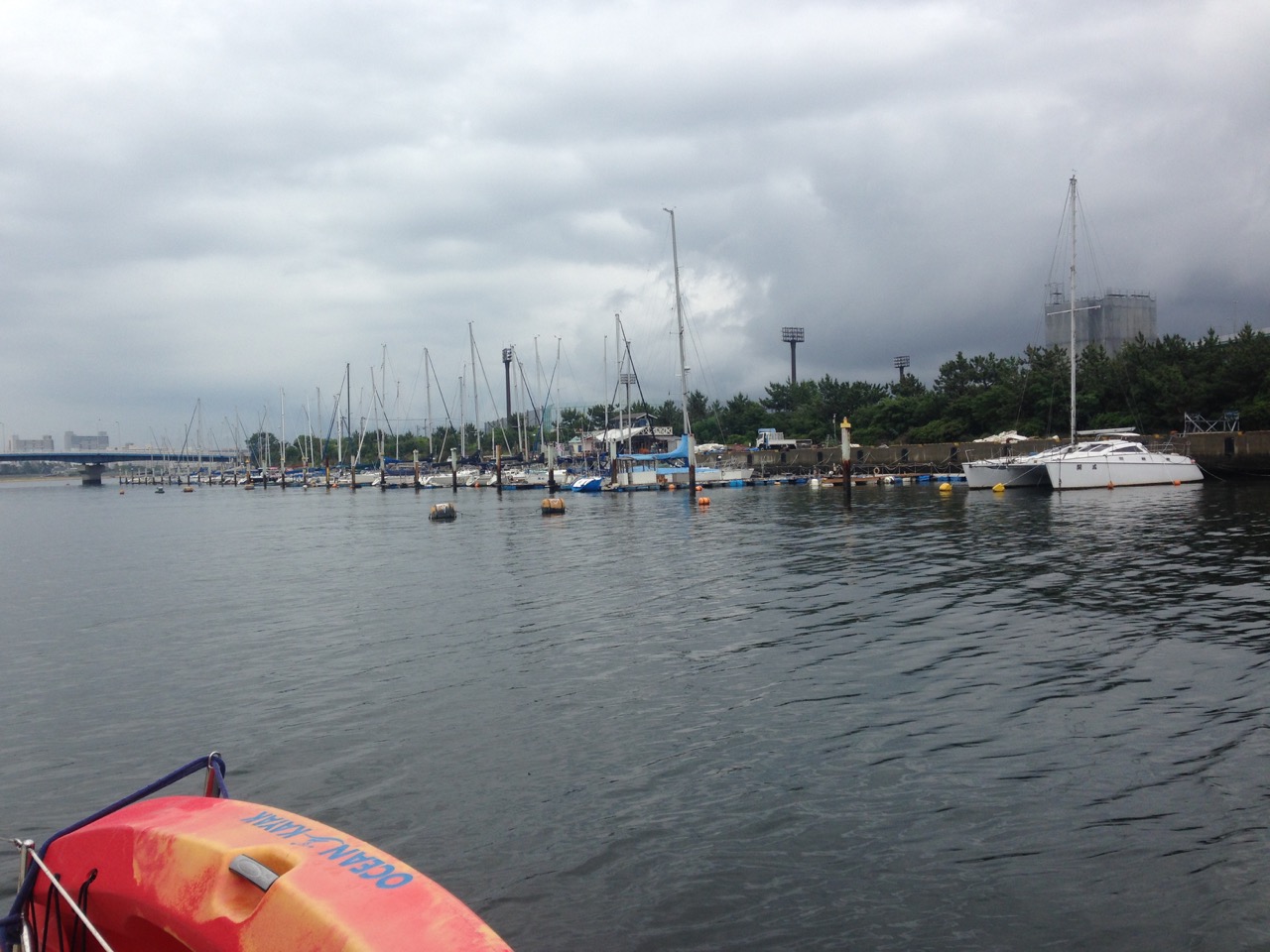 It’s a long quay, and the club has put out about 40 pontoons for their members and built a clubhouse on the quay.
It’s a long quay, and the club has put out about 40 pontoons for their members and built a clubhouse on the quay.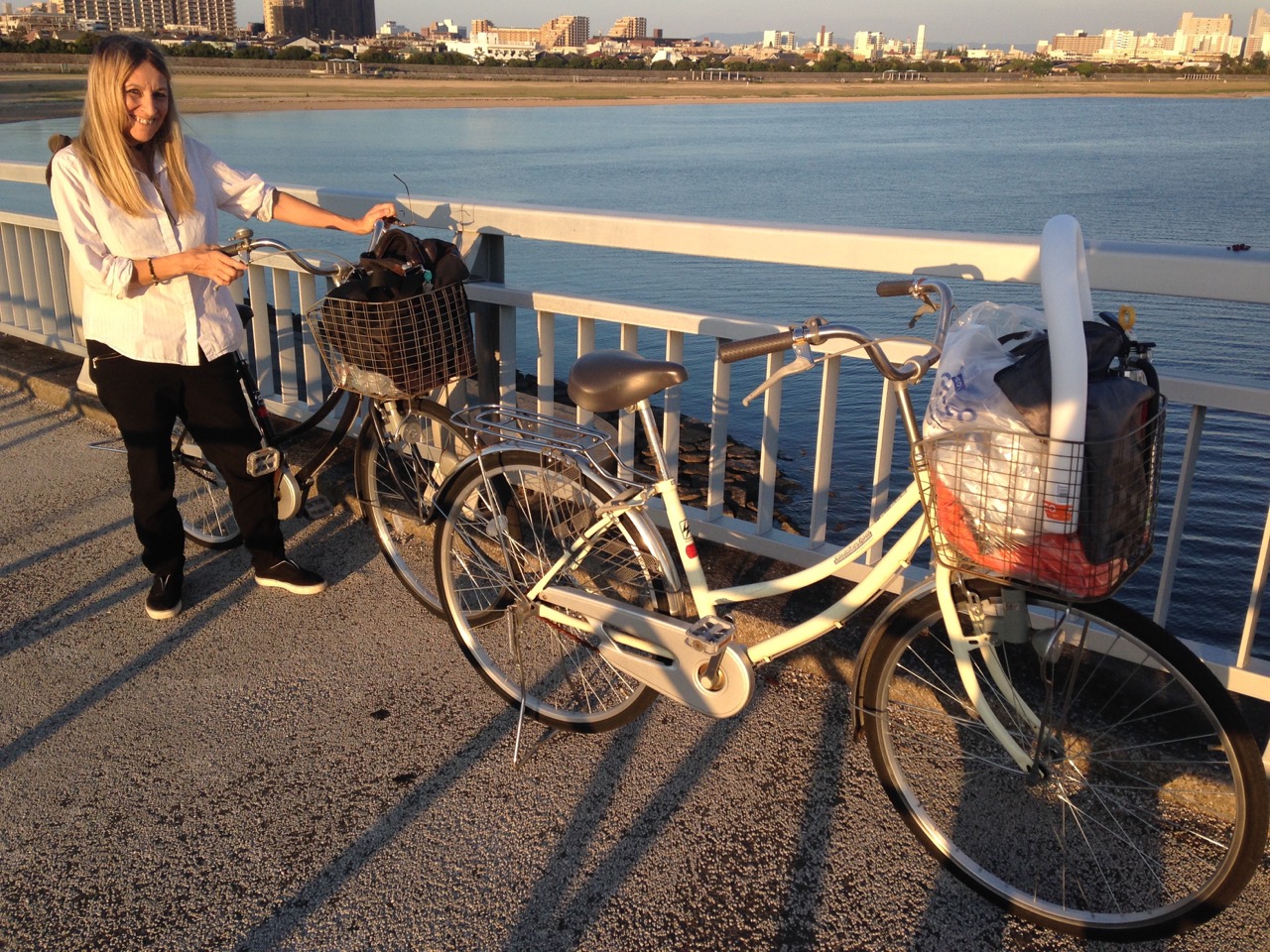
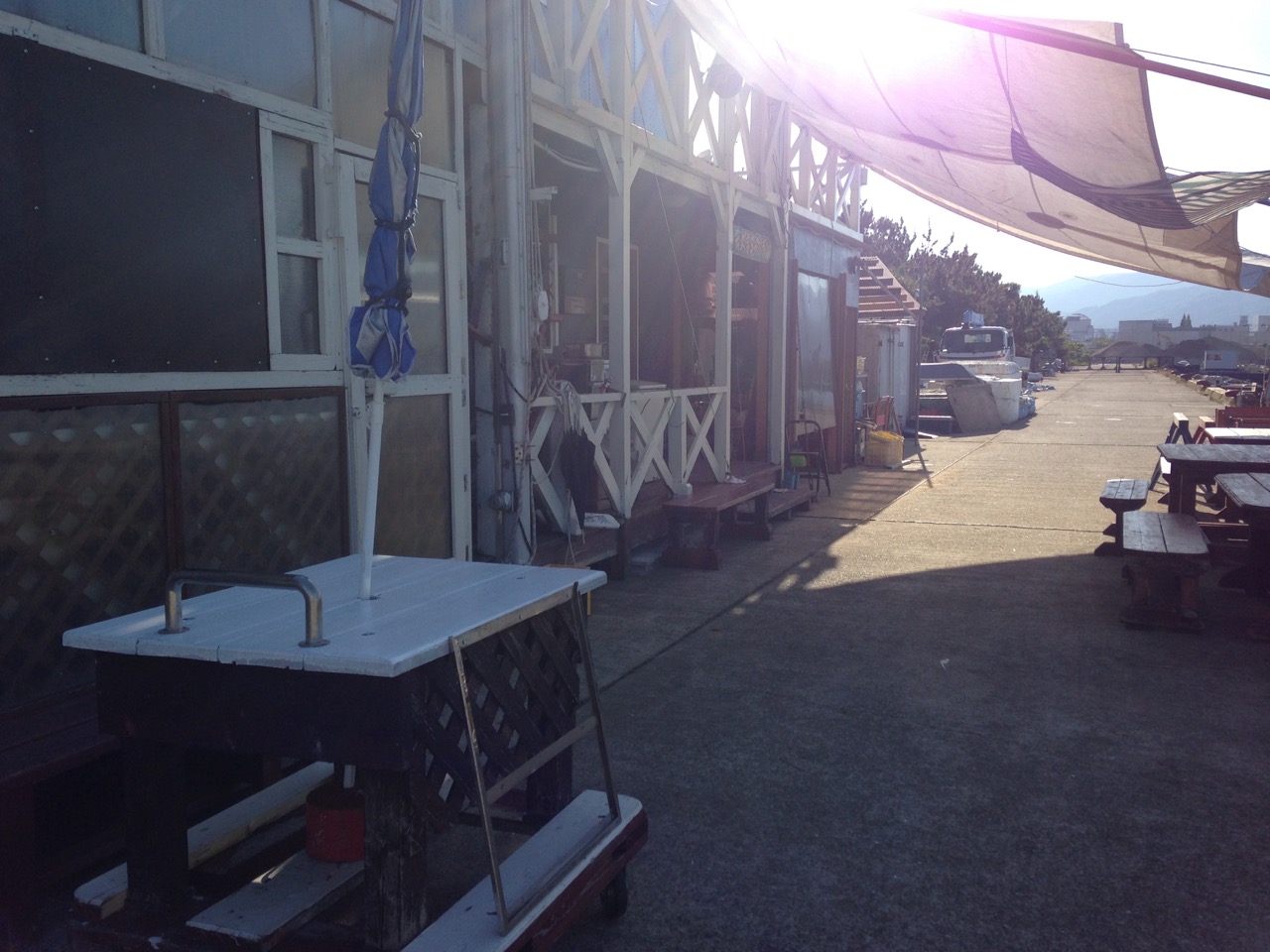
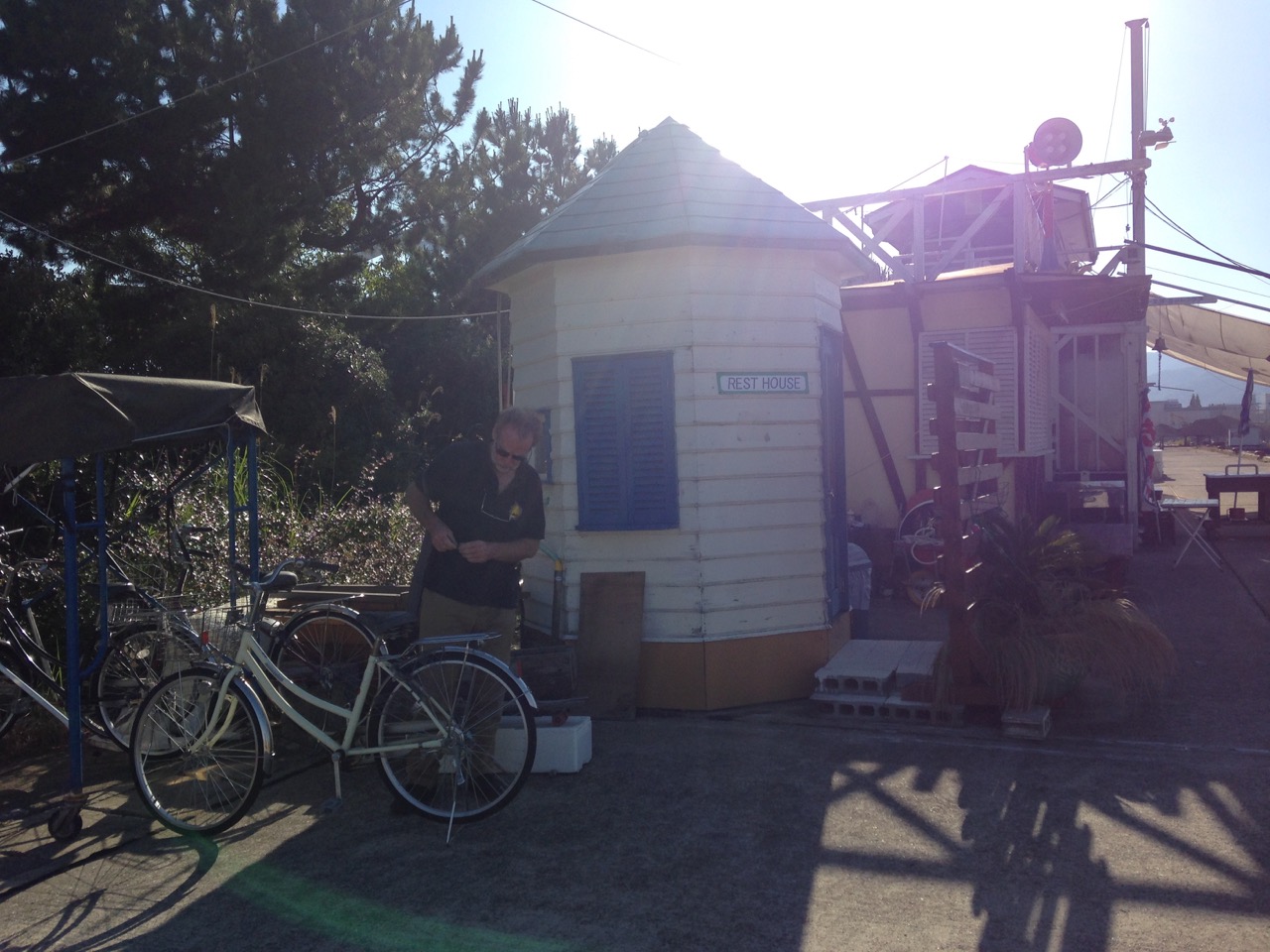
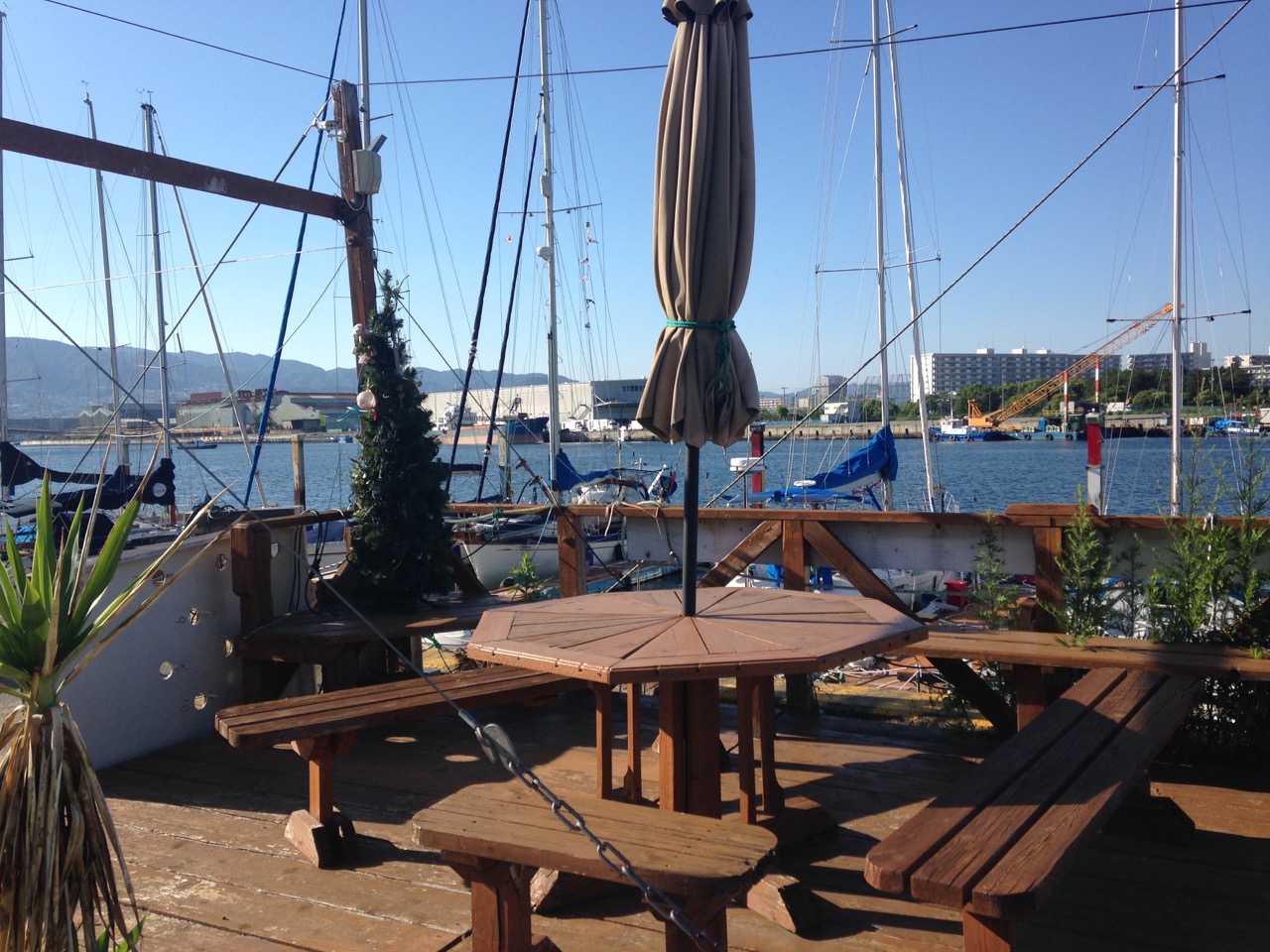 On arrival the Commodore, Vice Commodore and the treasurer sat me down to explain everything, we could have free electricity and water, could use all their facilities and we could stay as long as we liked, however it would cost 300Yen / day ($3 or £2), next we were informed that we would be guests of honour at a party they were throwing for us on Saturday, and they would be very pleased for us to attend. It was all a little overwhelming, they really were going out of the way to make us welcome. When they asked if we had any food or drink preferences, I wondered how they would cope with a vegan and a tee-totaller, but they took that on board without any issue.
On arrival the Commodore, Vice Commodore and the treasurer sat me down to explain everything, we could have free electricity and water, could use all their facilities and we could stay as long as we liked, however it would cost 300Yen / day ($3 or £2), next we were informed that we would be guests of honour at a party they were throwing for us on Saturday, and they would be very pleased for us to attend. It was all a little overwhelming, they really were going out of the way to make us welcome. When they asked if we had any food or drink preferences, I wondered how they would cope with a vegan and a tee-totaller, but they took that on board without any issue.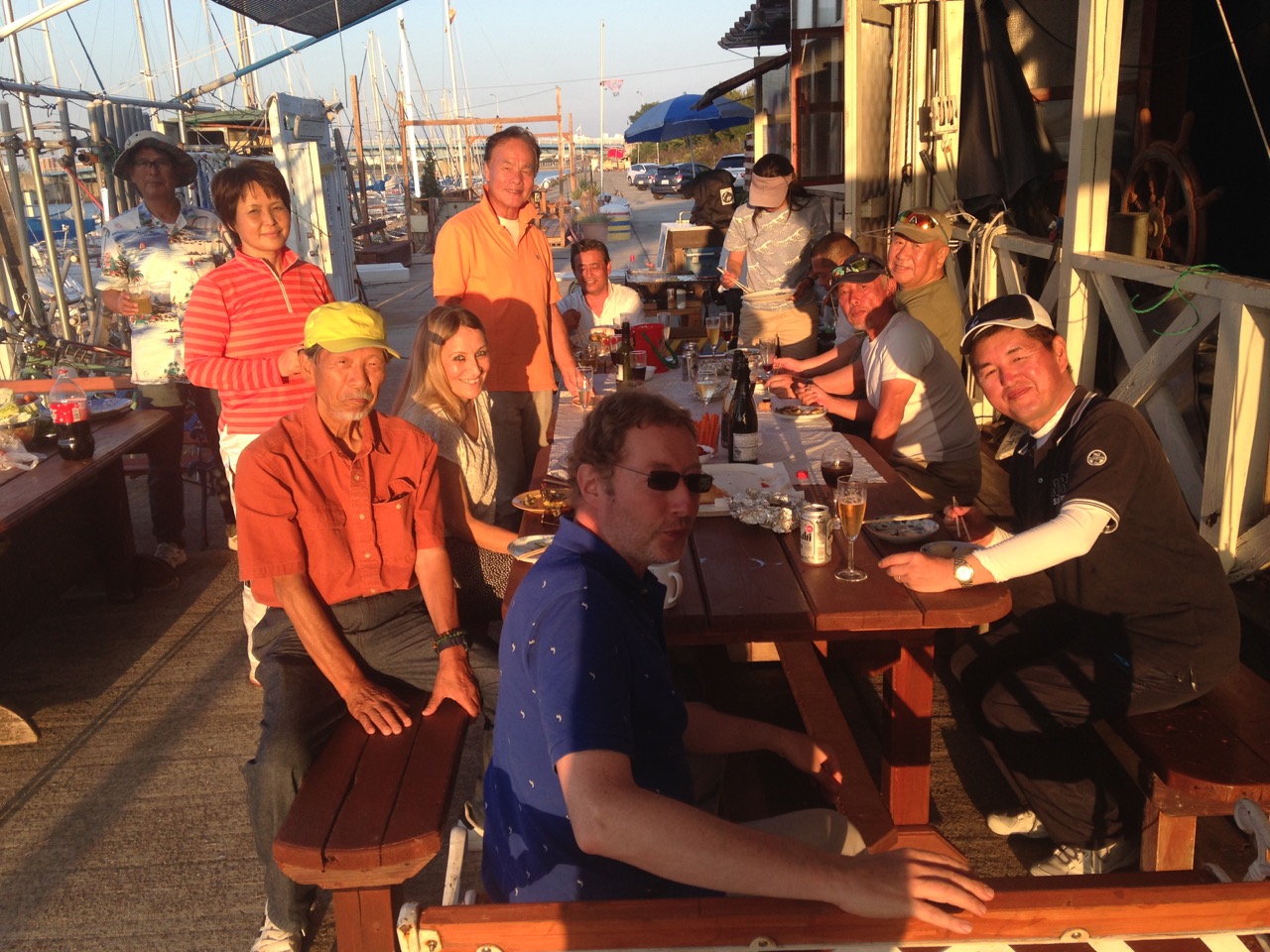 After the food, which kept coming and coming, we retired to the clubhouse where the members produced many bottles of whisky and proceeded to have a good time. It wasn’t long before the karaoke machine came out and we watched with great amusement each of the members present murder a great classic.
After the food, which kept coming and coming, we retired to the clubhouse where the members produced many bottles of whisky and proceeded to have a good time. It wasn’t long before the karaoke machine came out and we watched with great amusement each of the members present murder a great classic.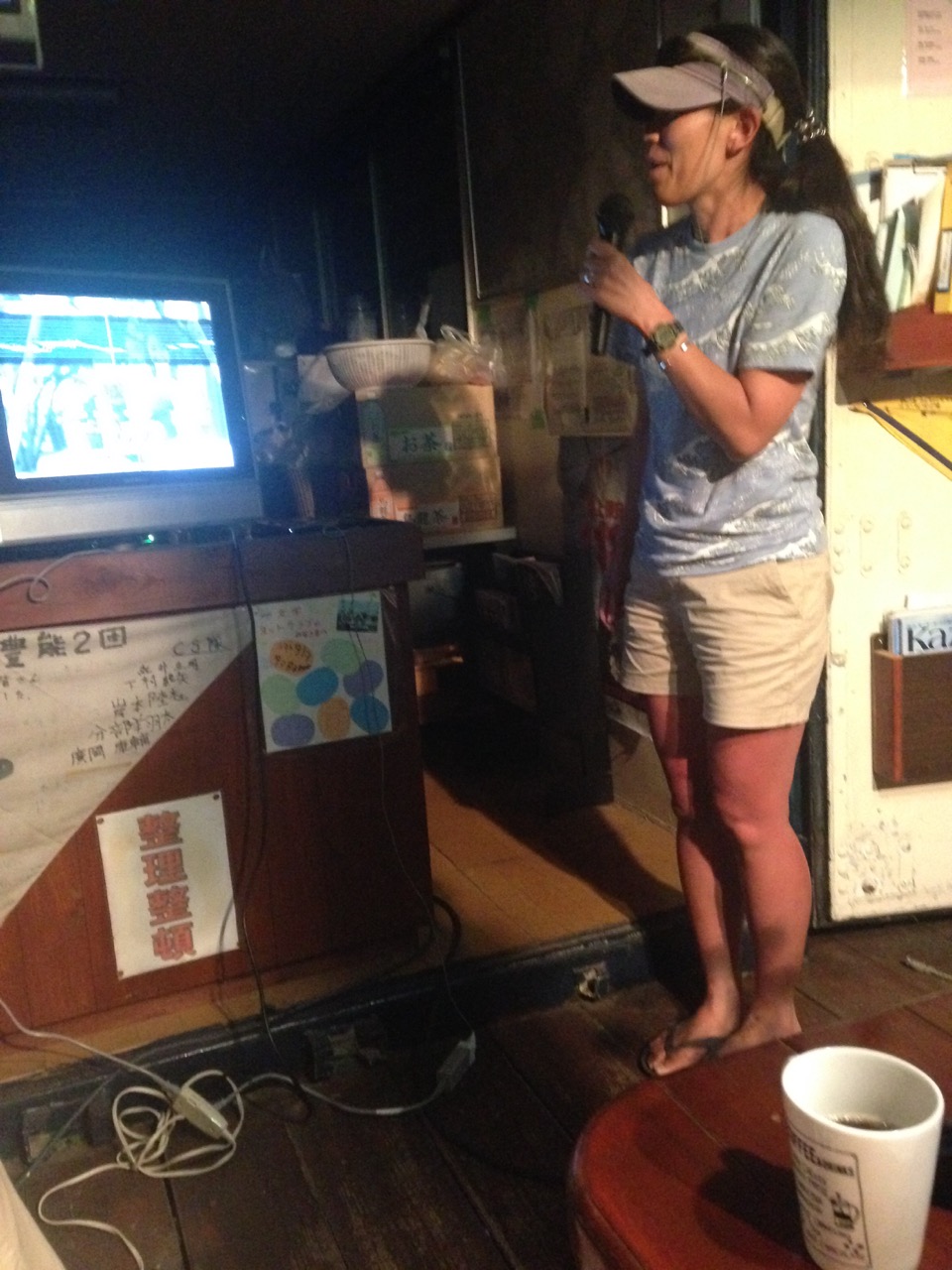 To be fair, some of them actually sang really well. One of the young ladies present explained to me that I had to sing as well, as this was a Japanese custom, and it was not possible for me to opt out, as everyone seemed to be having such a good time it would have been silly not to join in, however I was surprised when Kathy joined me for a rendition of “Hey Jude ” after I had destroyed the song “Yesterday”.
To be fair, some of them actually sang really well. One of the young ladies present explained to me that I had to sing as well, as this was a Japanese custom, and it was not possible for me to opt out, as everyone seemed to be having such a good time it would have been silly not to join in, however I was surprised when Kathy joined me for a rendition of “Hey Jude ” after I had destroyed the song “Yesterday”.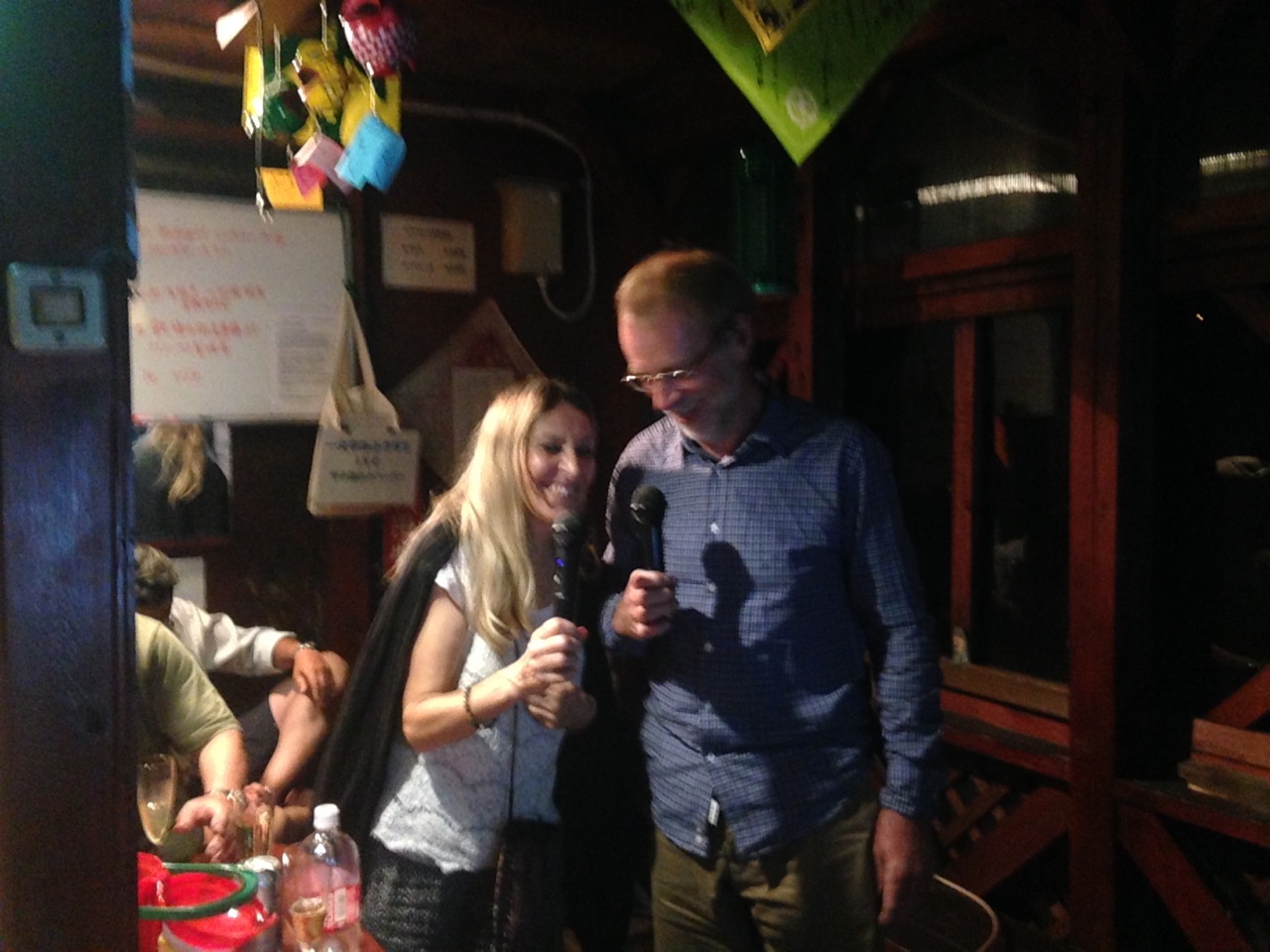
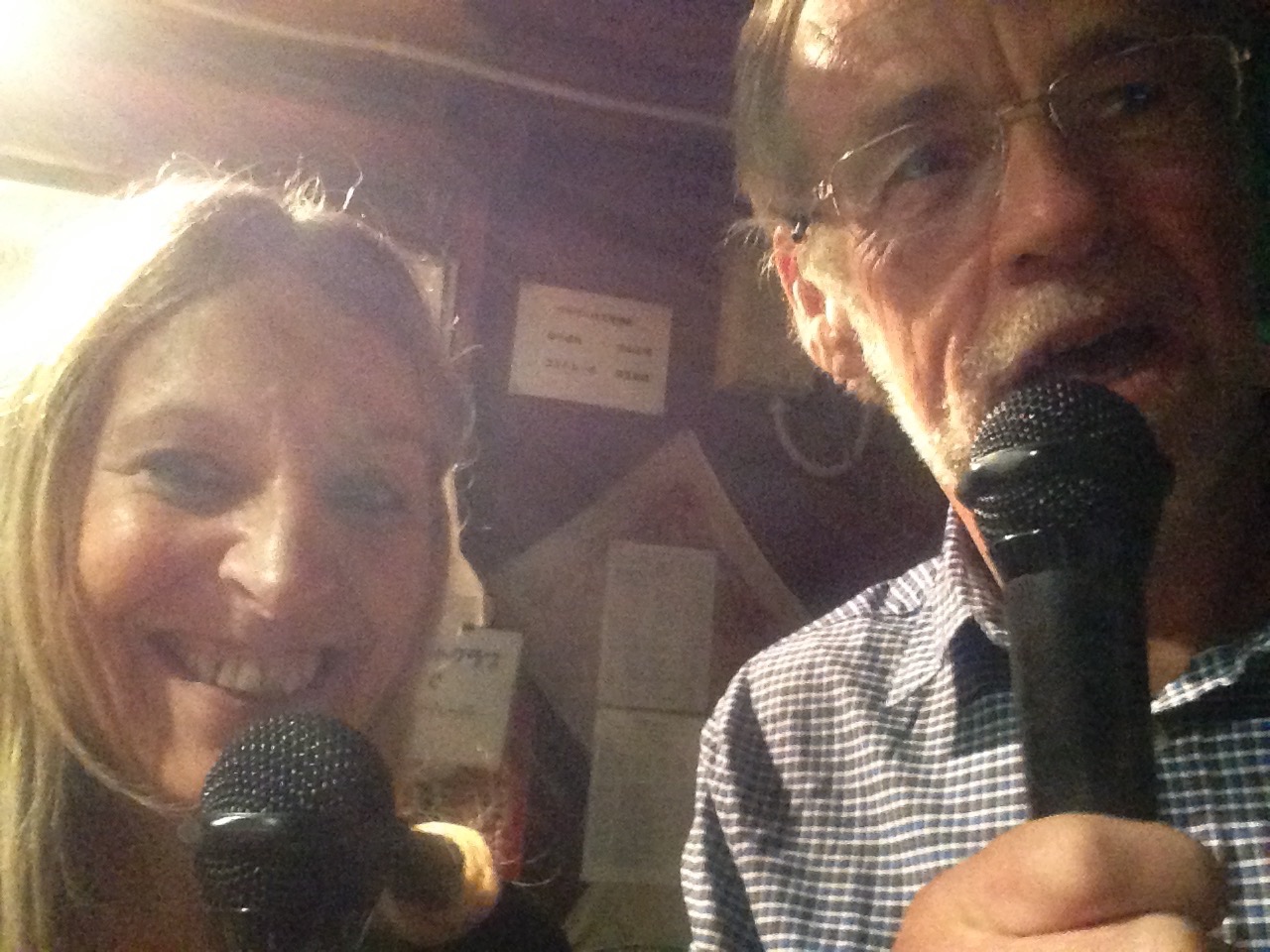
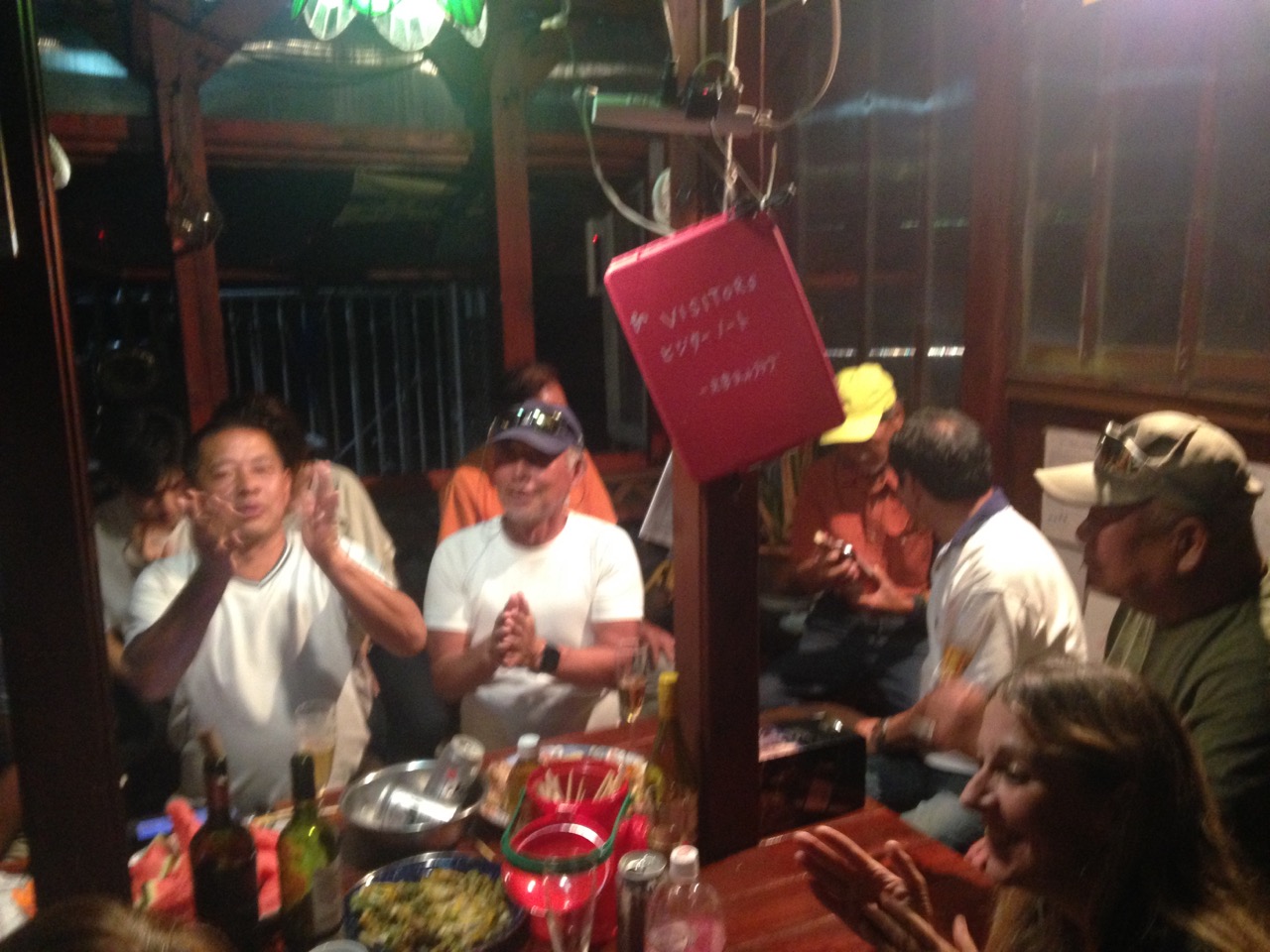 The next day, several club members came to help me fix the engine and to run me around town, looking for copper washers and other bits. On one such trip, one of the club members bought me a present, some special soap he said would be great for cleaning the cushions in the boat, which made me feel bad about how dirty they had gotten. Keeping things clean is not one of my strong points. Today the commodore dropped of a bag of luxury biscuits as a gift, we have had so many gifts since we have been here, and we really don’t have much to offer back. I donated my new starter battery to the club, it’s only 4 weeks old, but surplus now I have bought the 5 deep cycle jobs.
The next day, several club members came to help me fix the engine and to run me around town, looking for copper washers and other bits. On one such trip, one of the club members bought me a present, some special soap he said would be great for cleaning the cushions in the boat, which made me feel bad about how dirty they had gotten. Keeping things clean is not one of my strong points. Today the commodore dropped of a bag of luxury biscuits as a gift, we have had so many gifts since we have been here, and we really don’t have much to offer back. I donated my new starter battery to the club, it’s only 4 weeks old, but surplus now I have bought the 5 deep cycle jobs.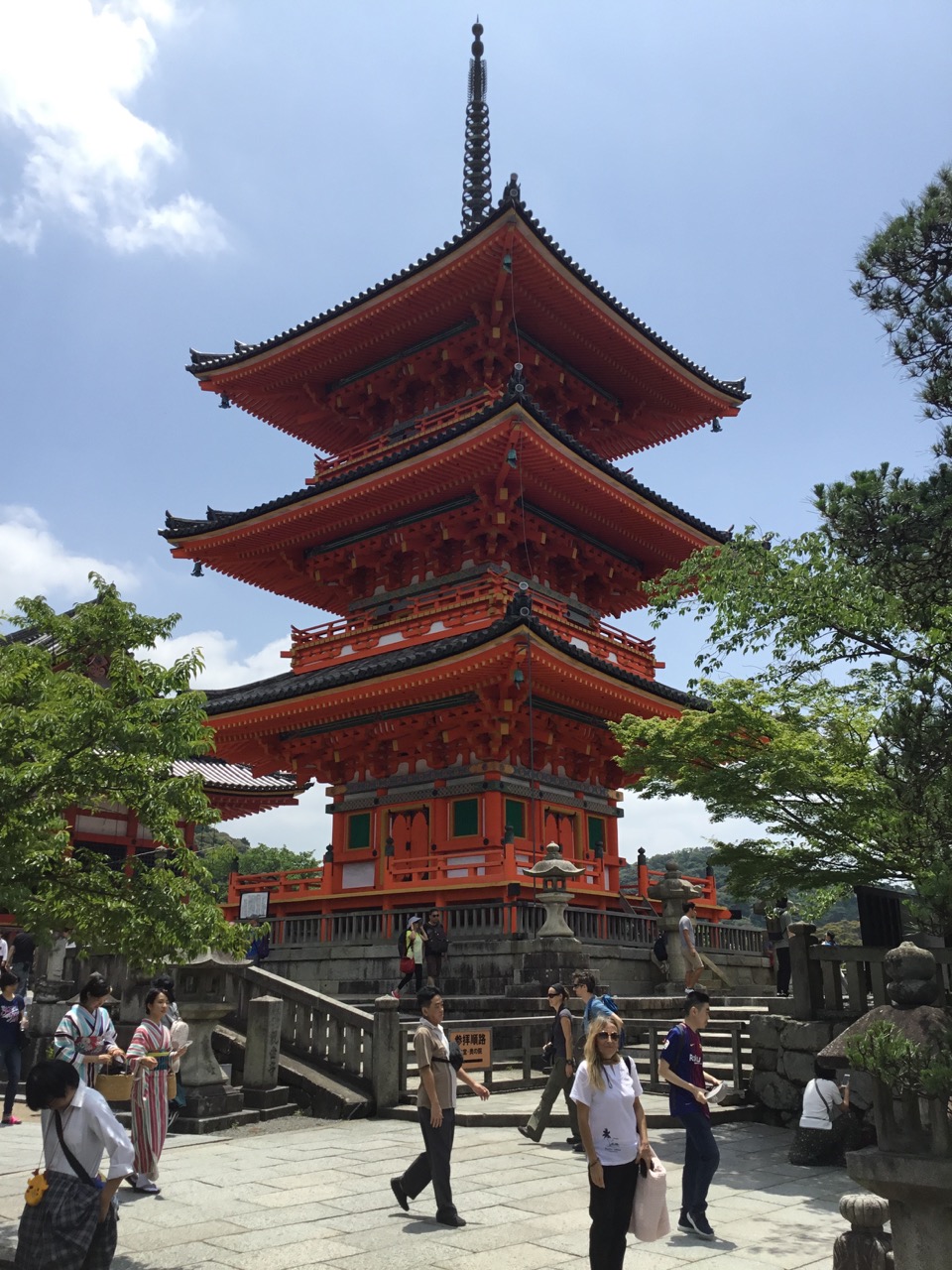
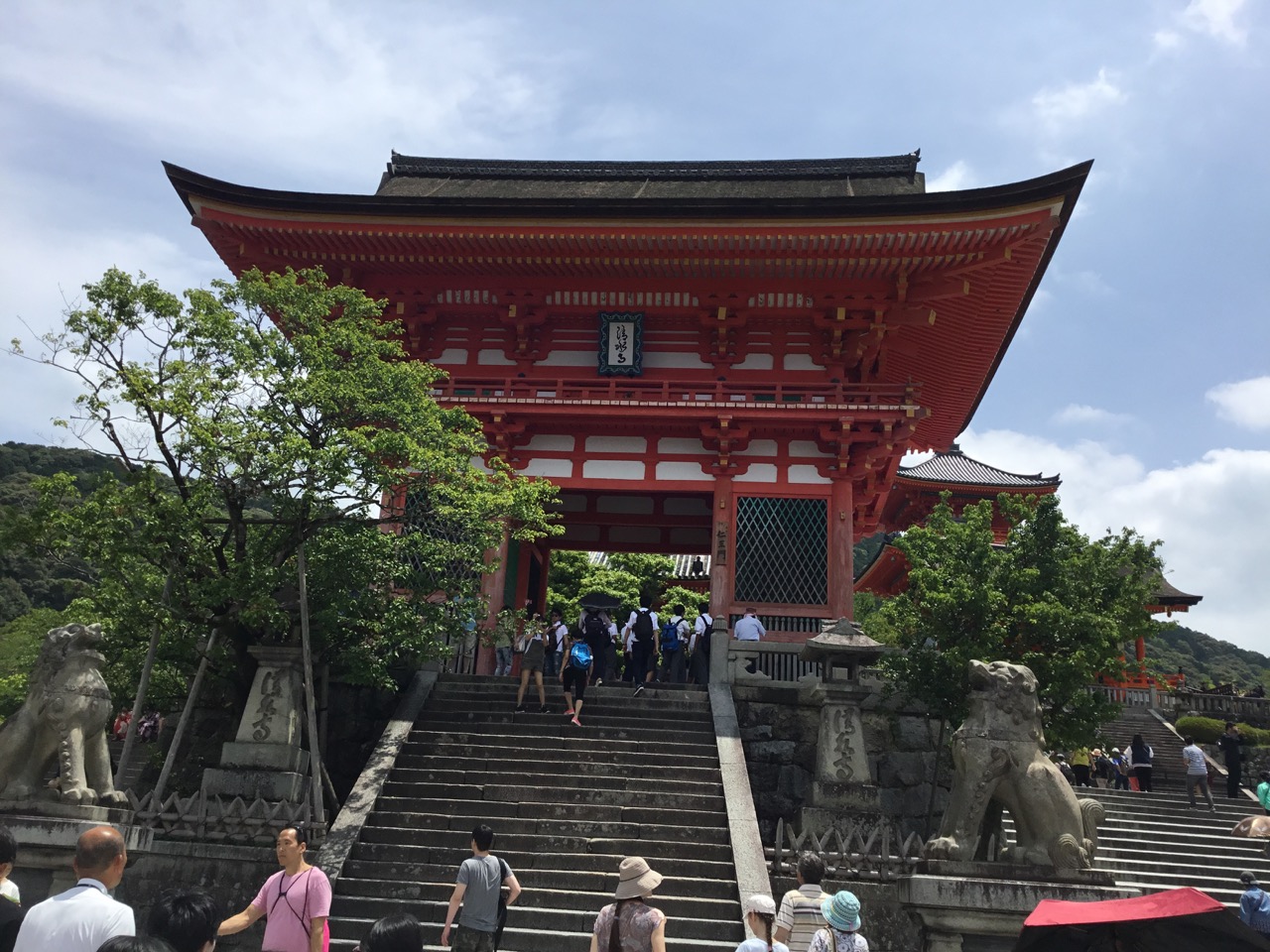
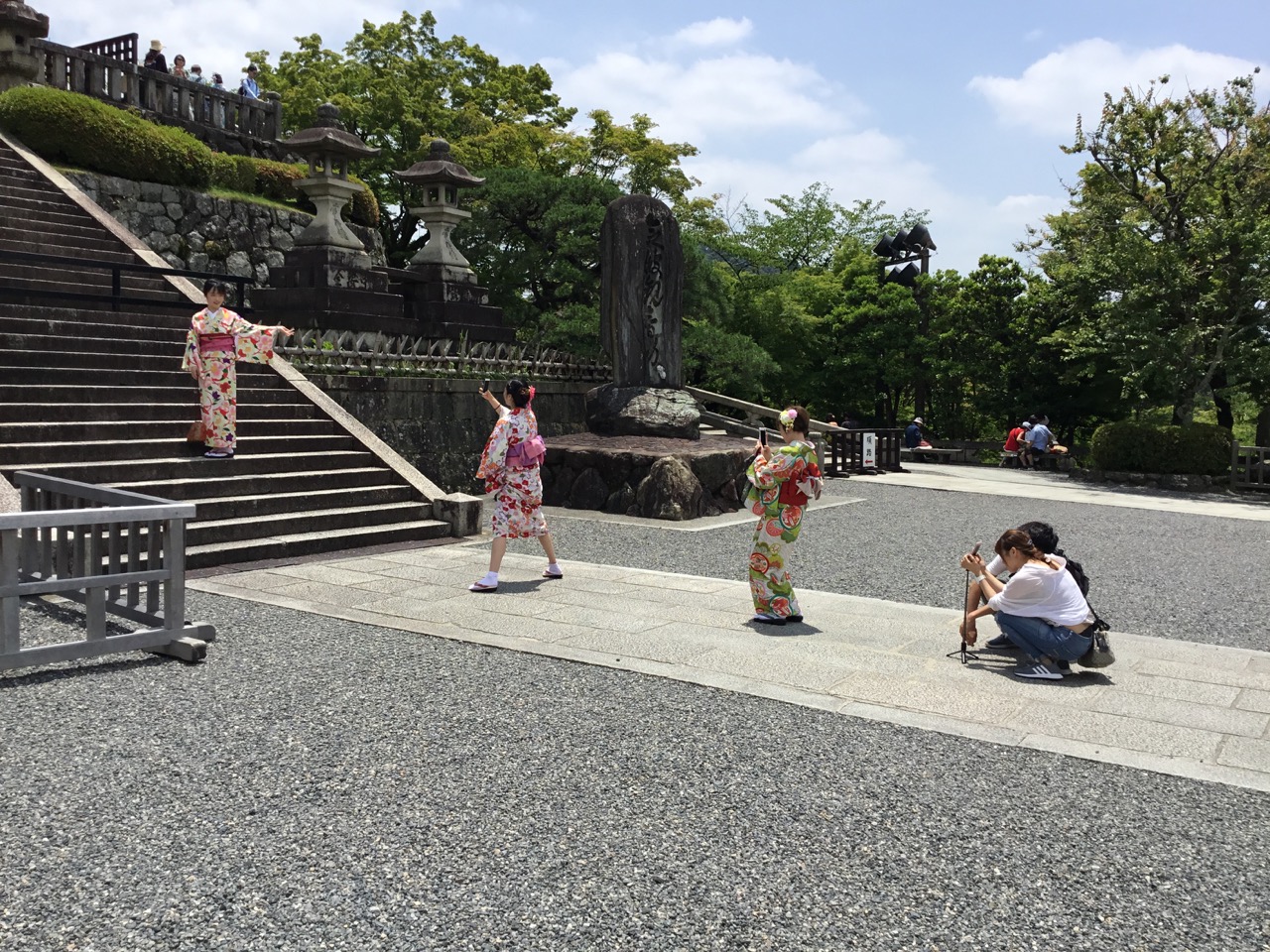 Later we walked around the old part of town where modern day Geisha girls learn their trade in special schools, and can often be seen scurrying around the streets, however we didn’t see any, just a lot of old buildings along the banks of a lovely river. Dinner in a falafel place then the express train home.
Later we walked around the old part of town where modern day Geisha girls learn their trade in special schools, and can often be seen scurrying around the streets, however we didn’t see any, just a lot of old buildings along the banks of a lovely river. Dinner in a falafel place then the express train home.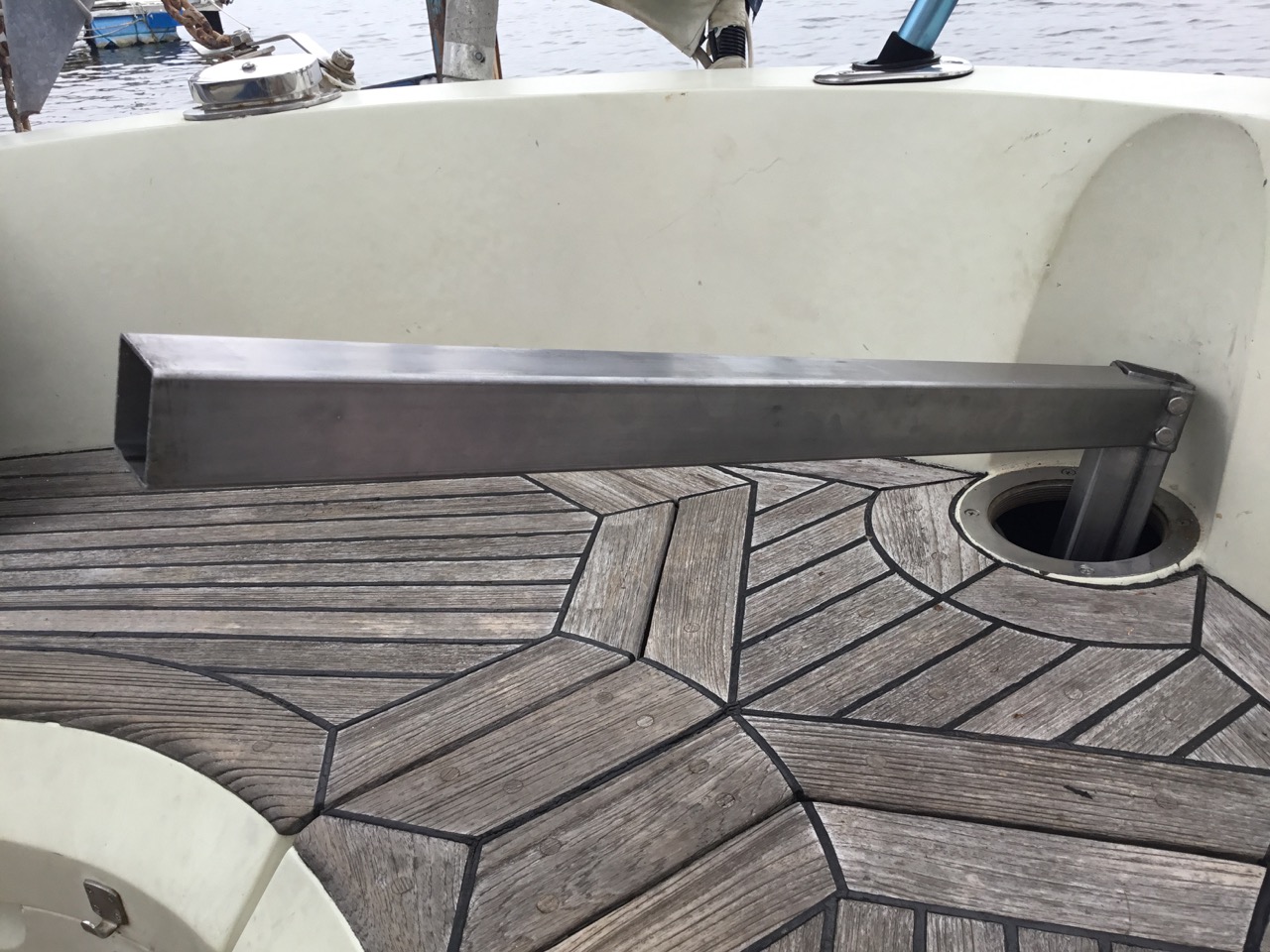
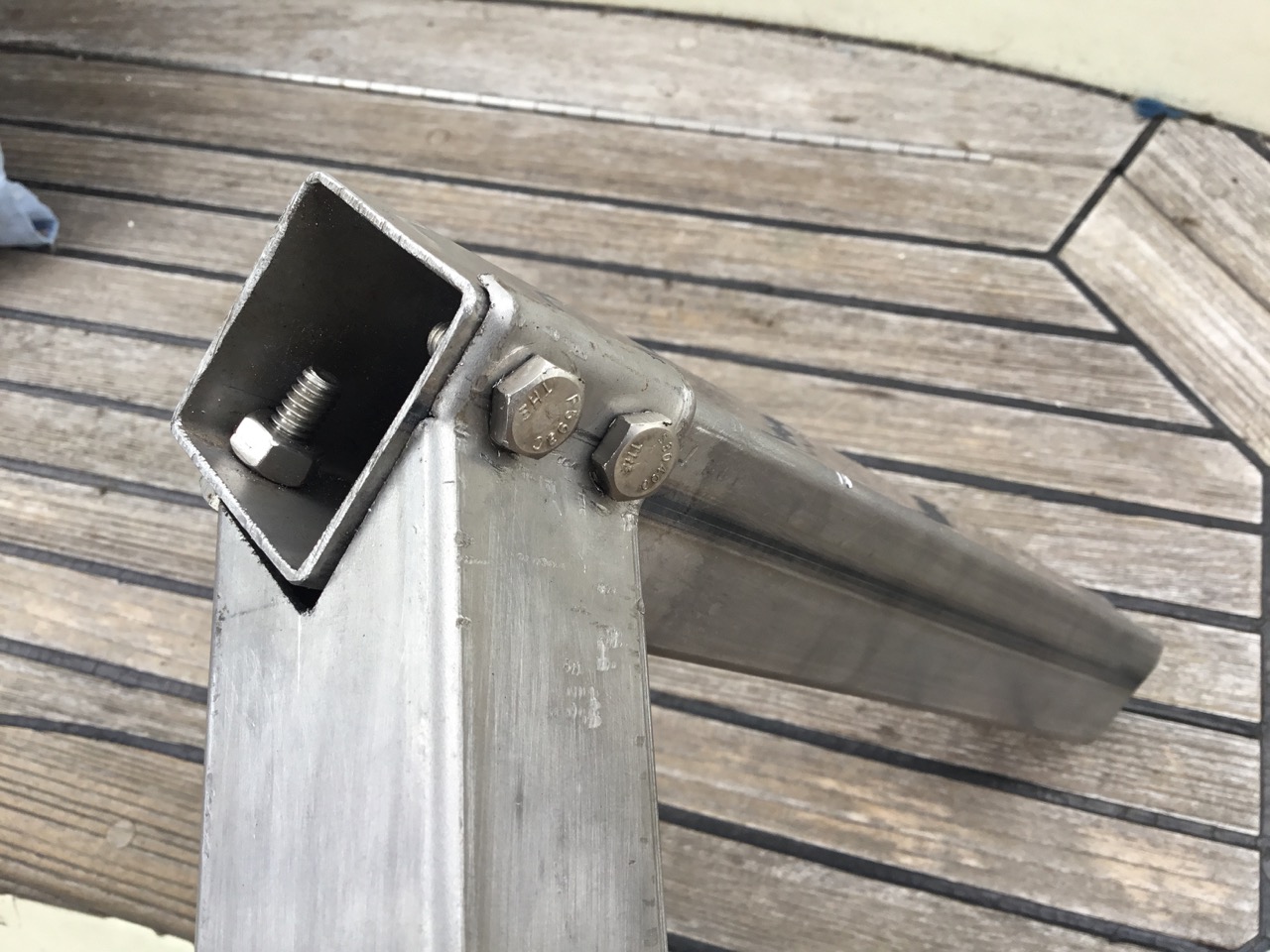
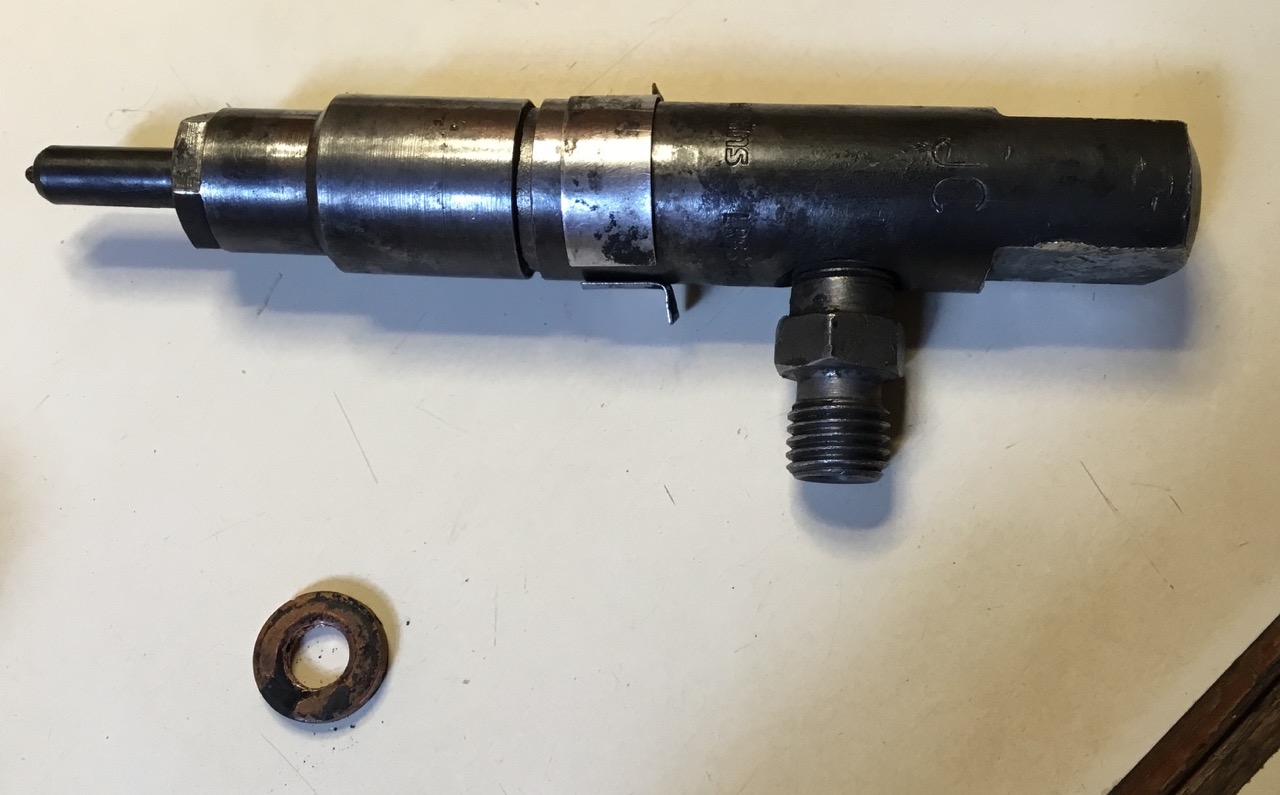
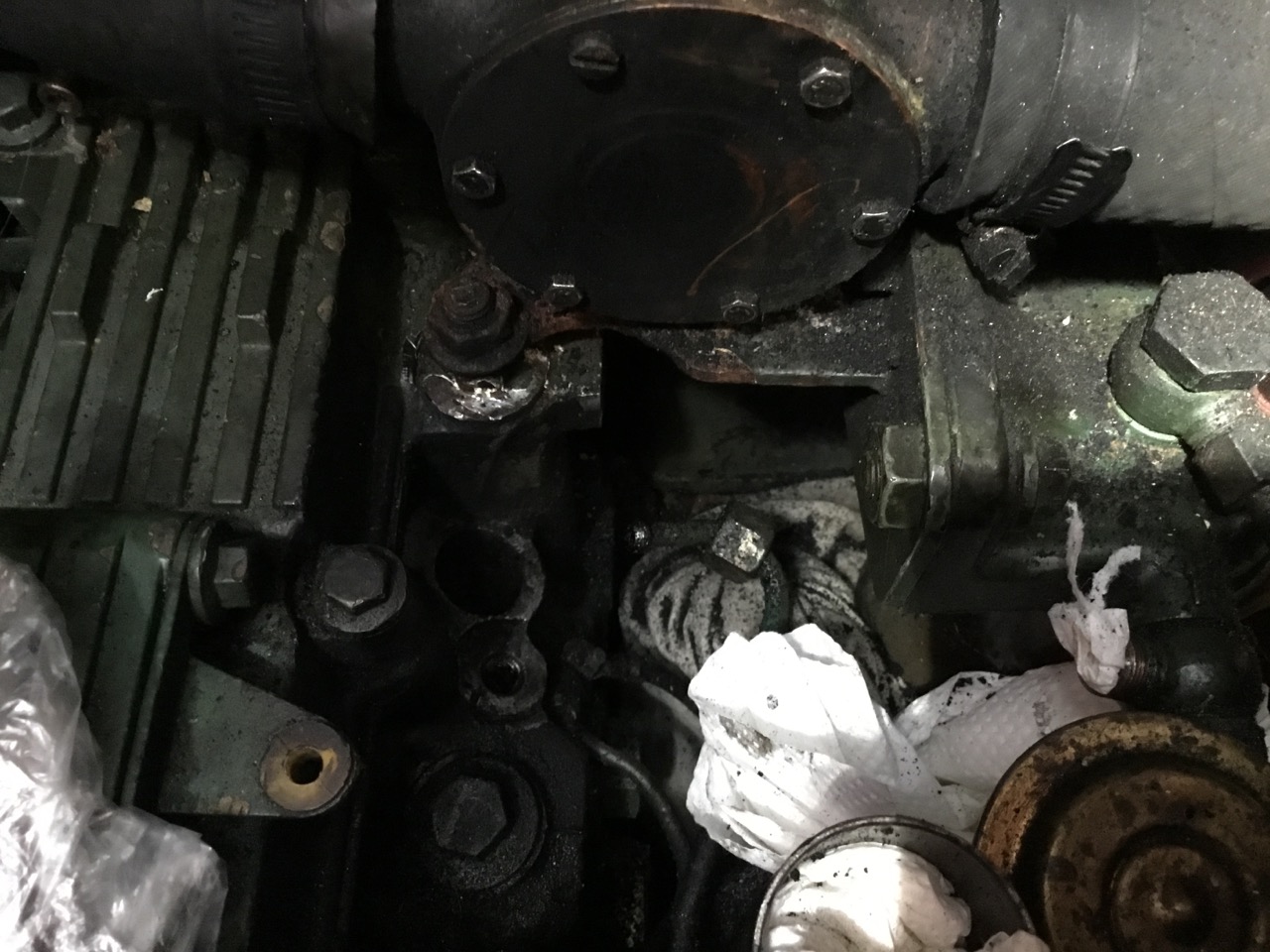
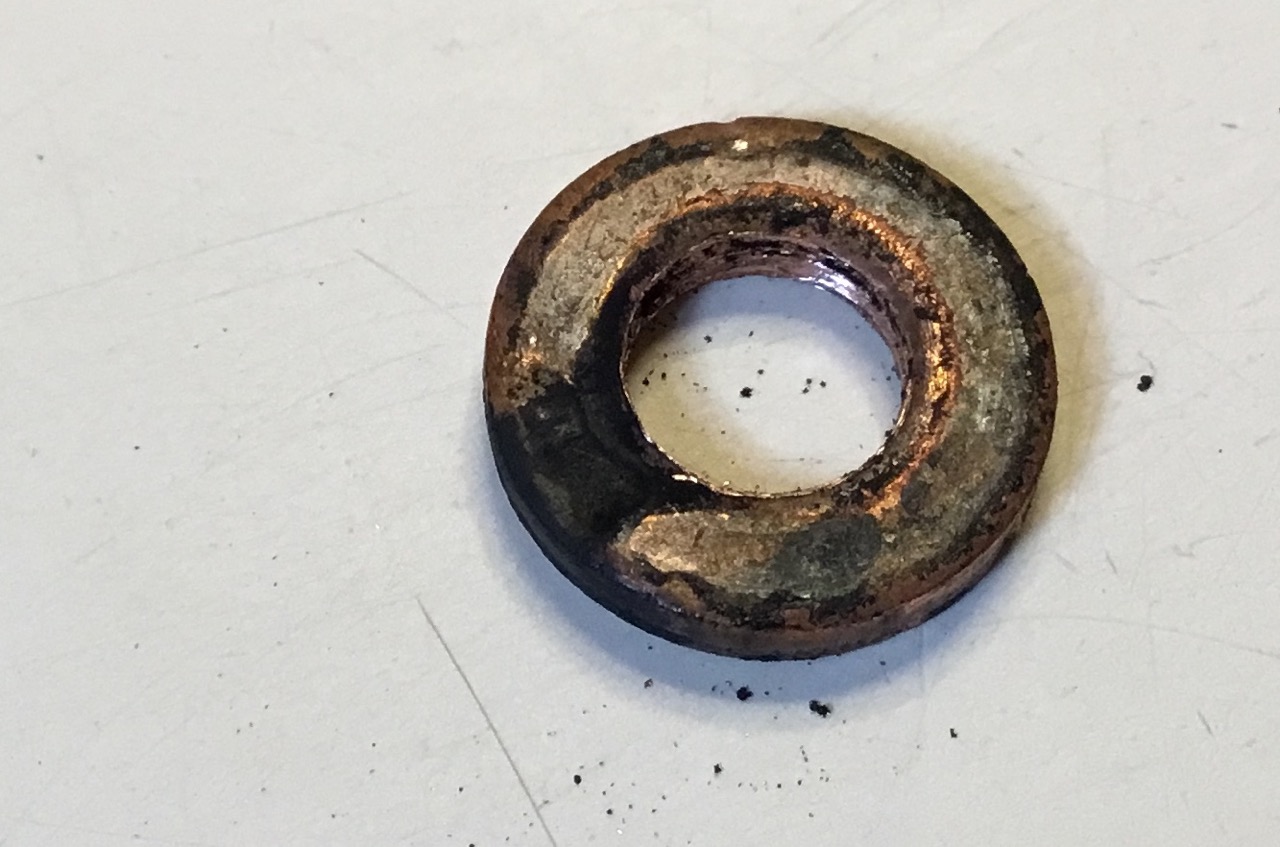 In the meantime I carefully sanded down the washer to make it flat again.
In the meantime I carefully sanded down the washer to make it flat again.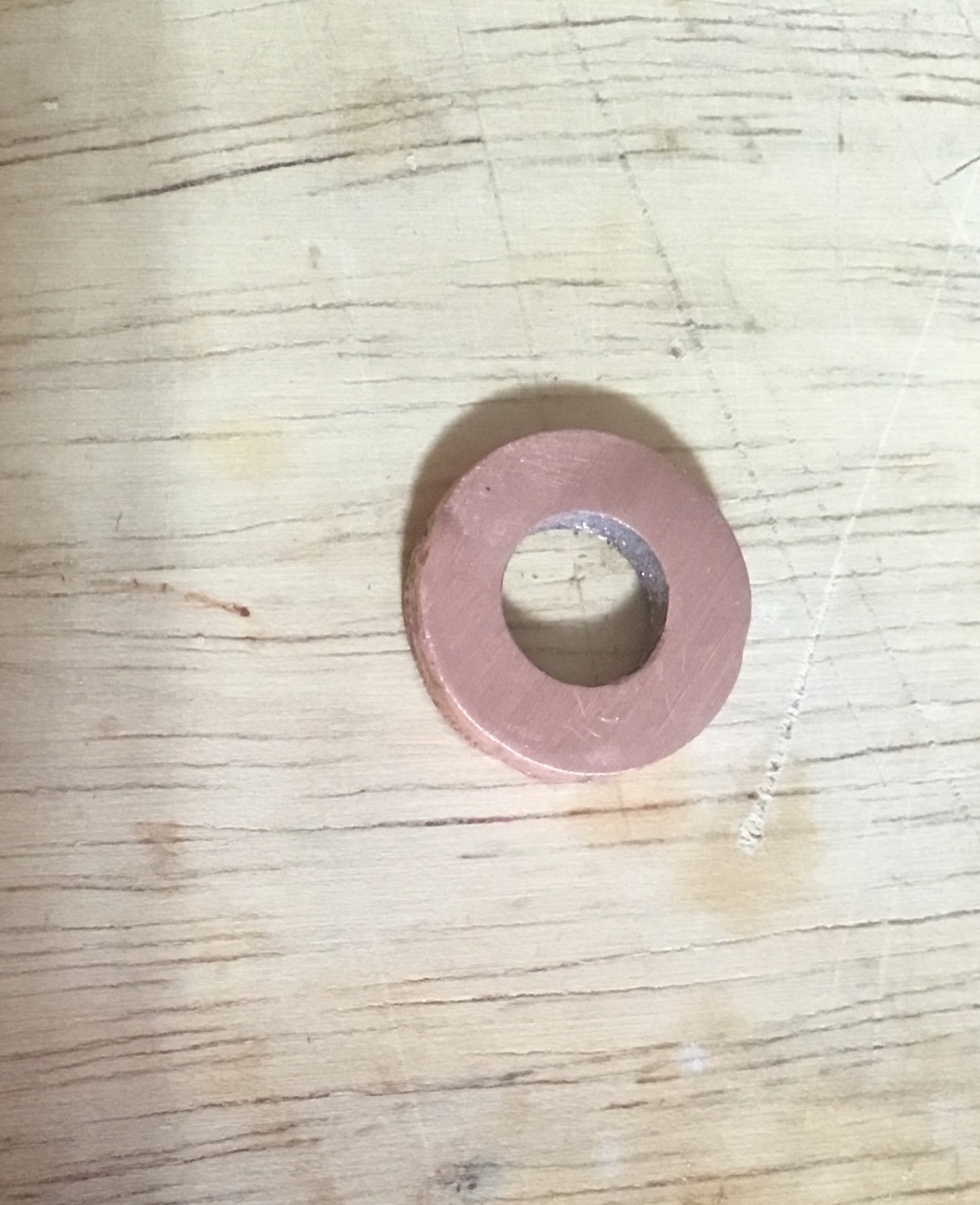
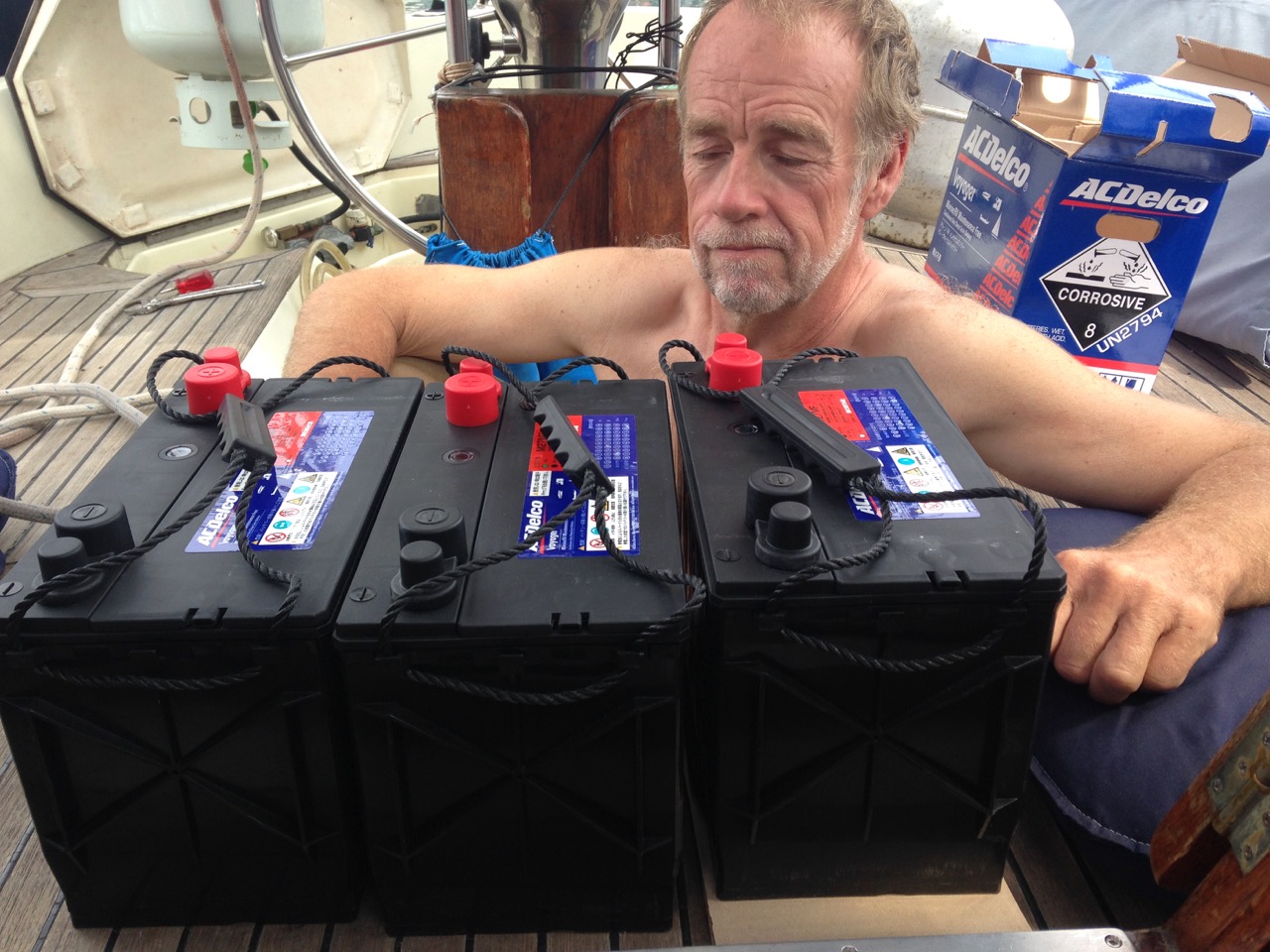
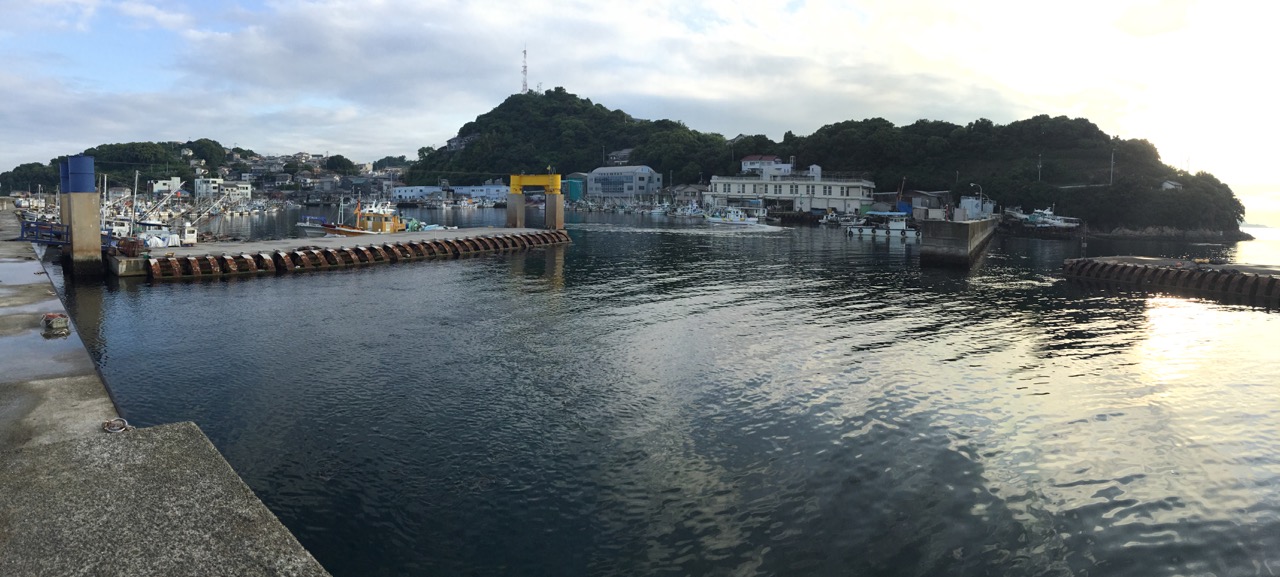
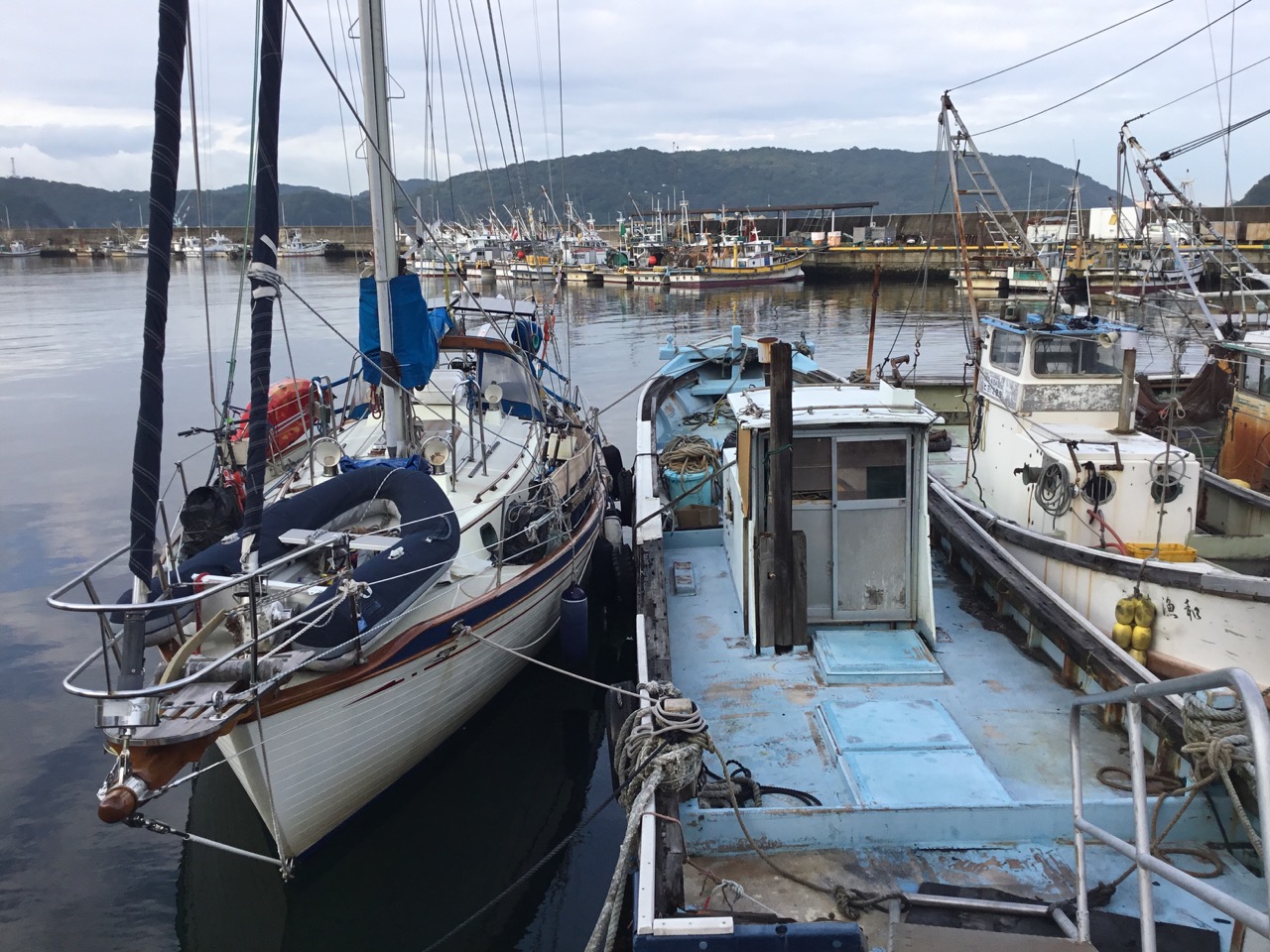
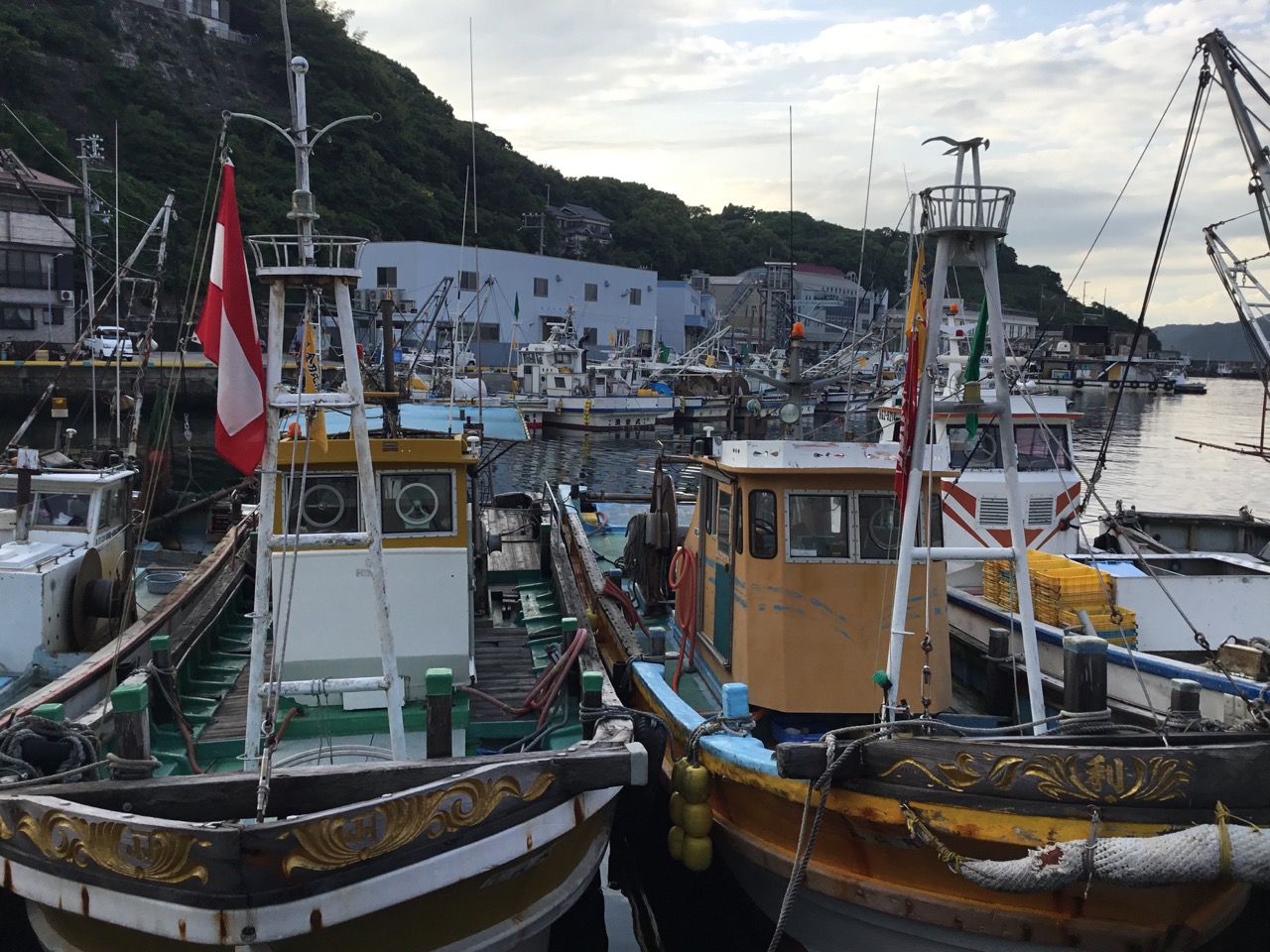
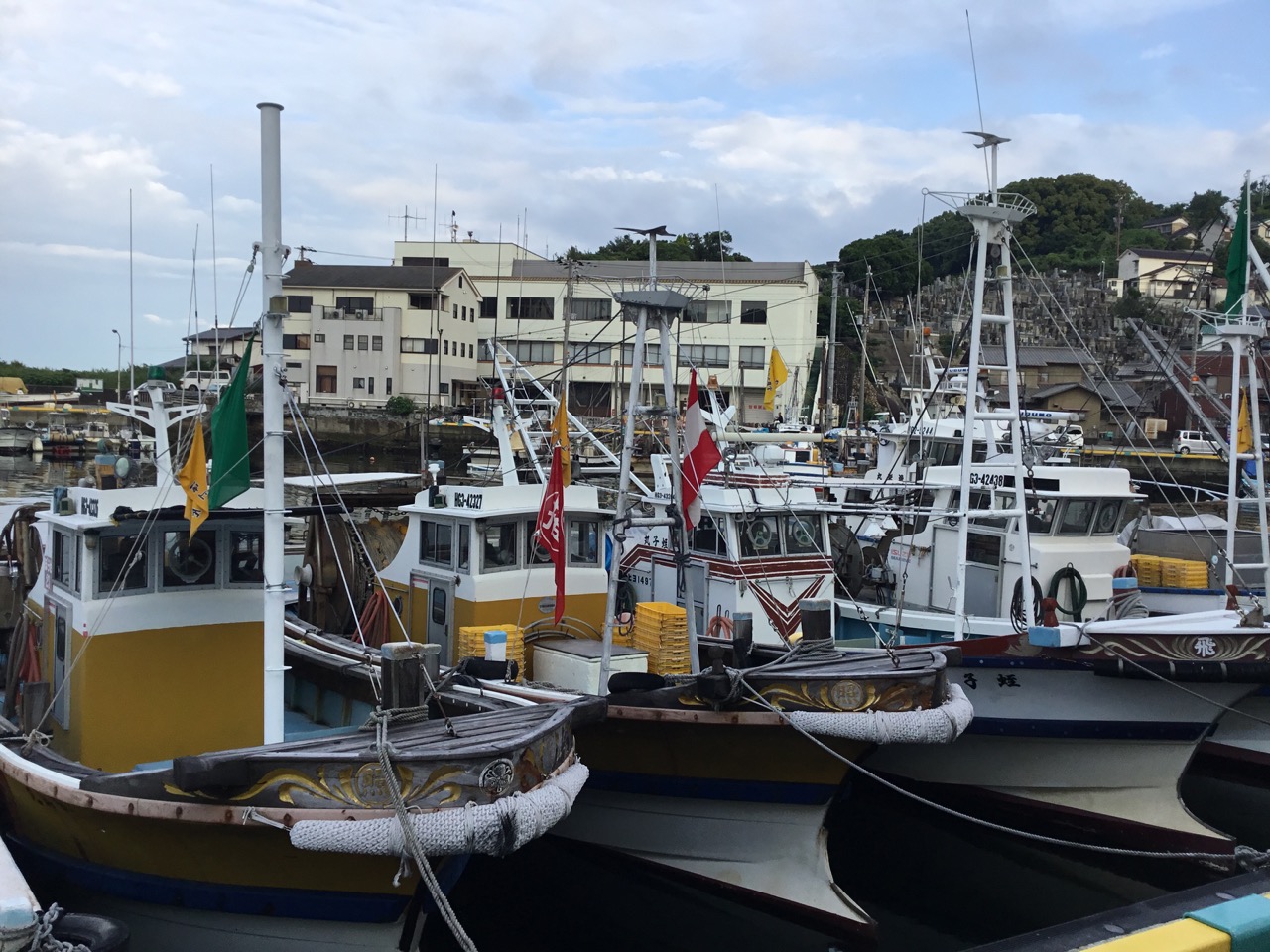

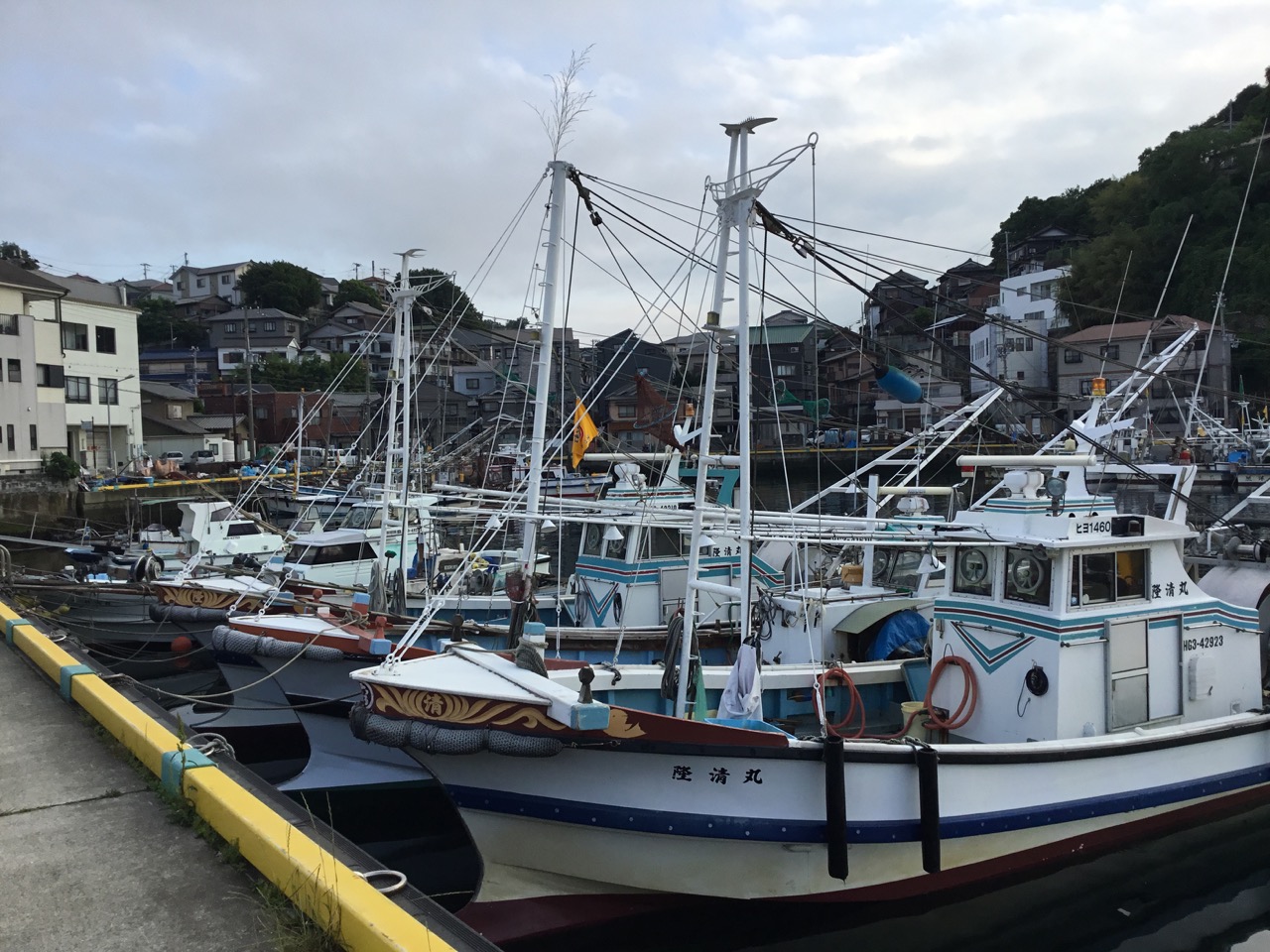
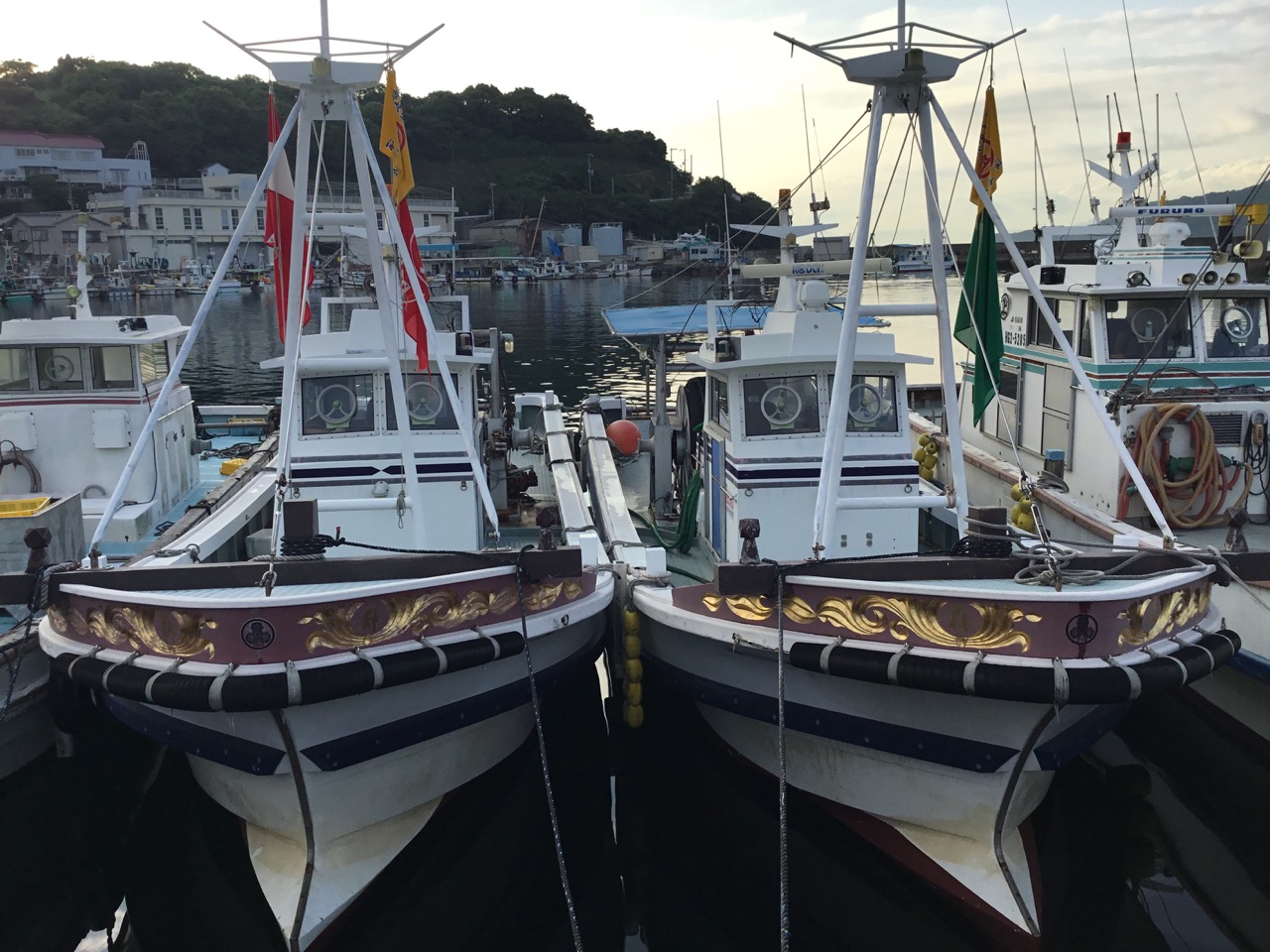
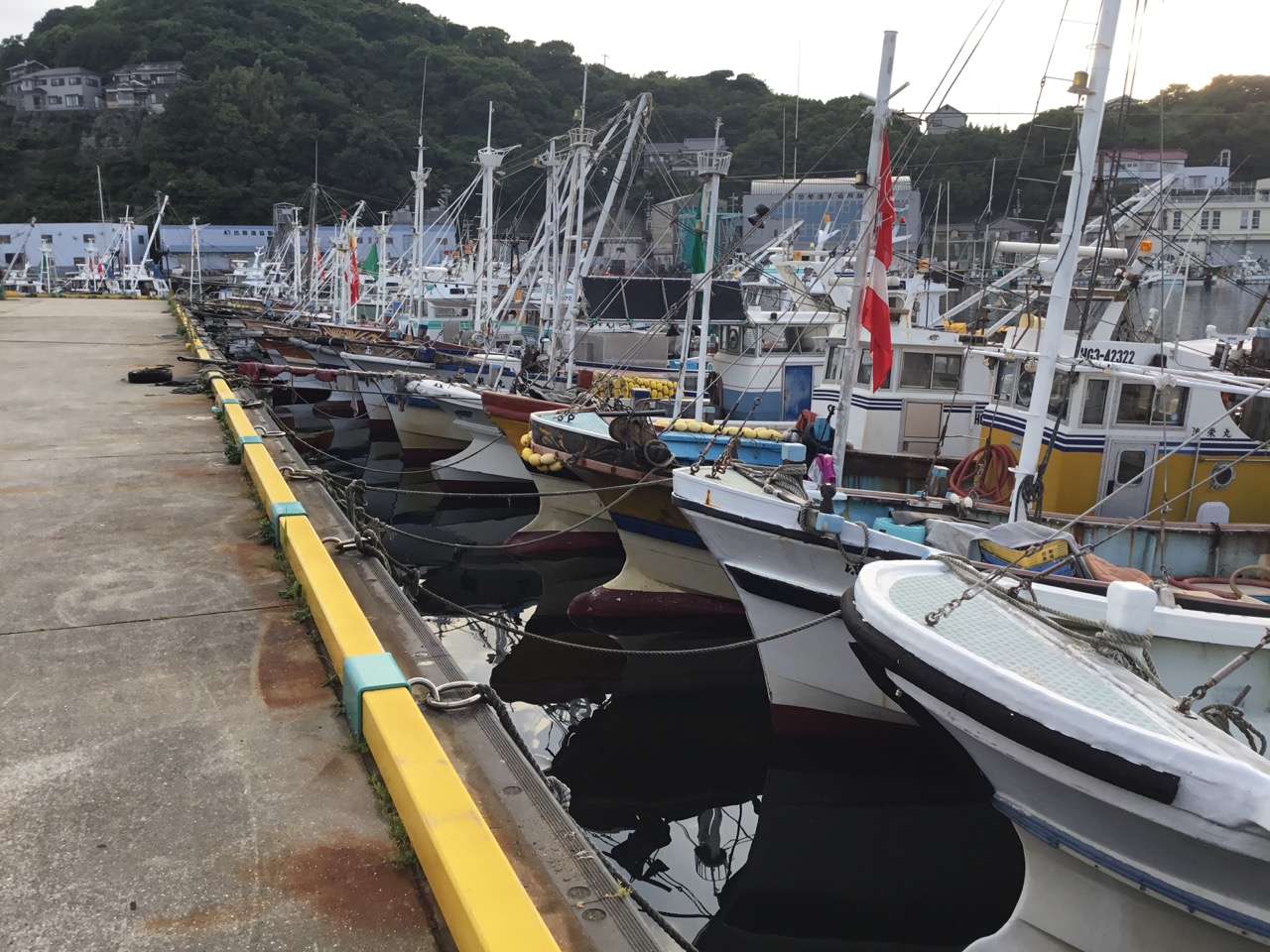
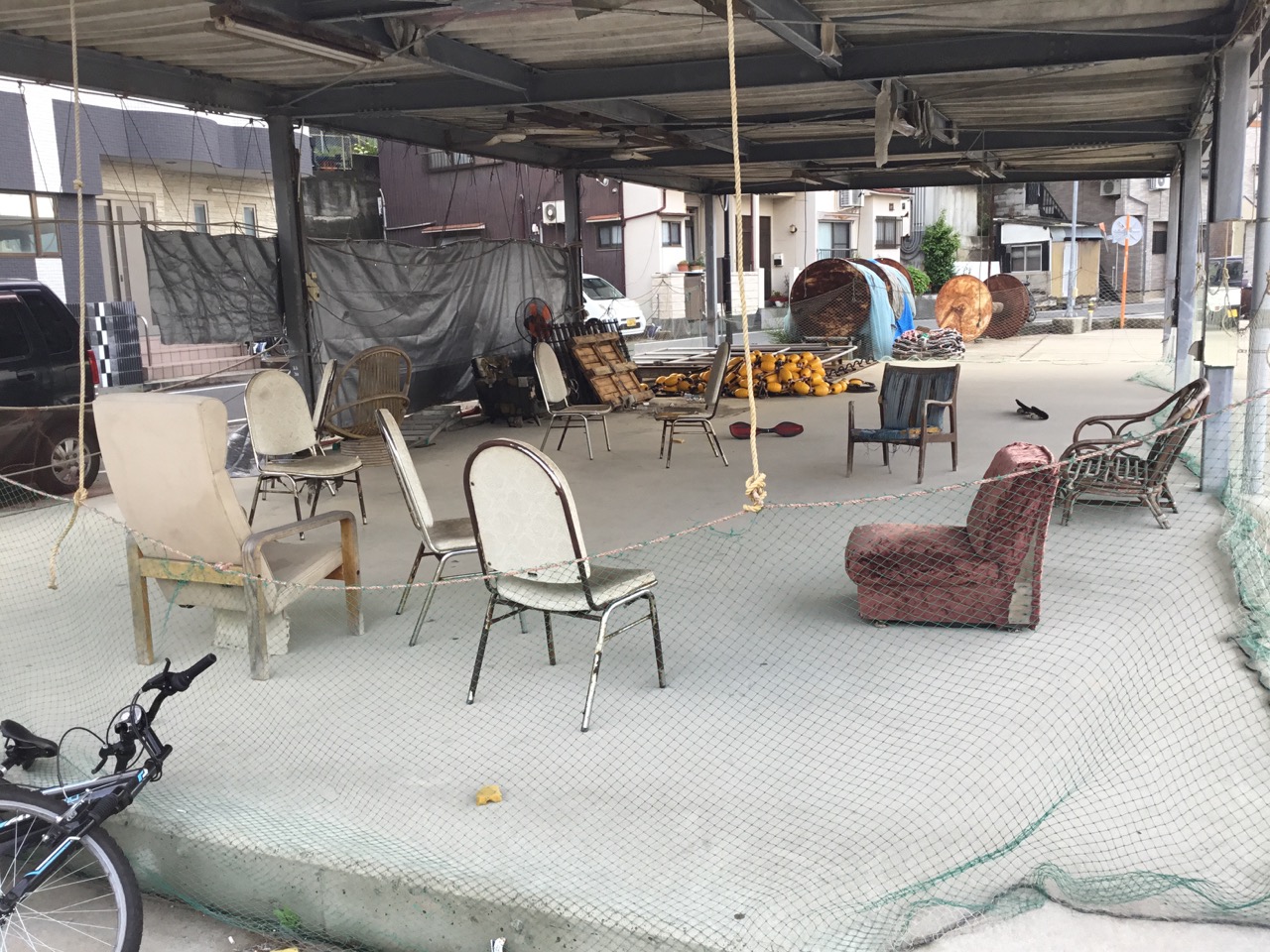
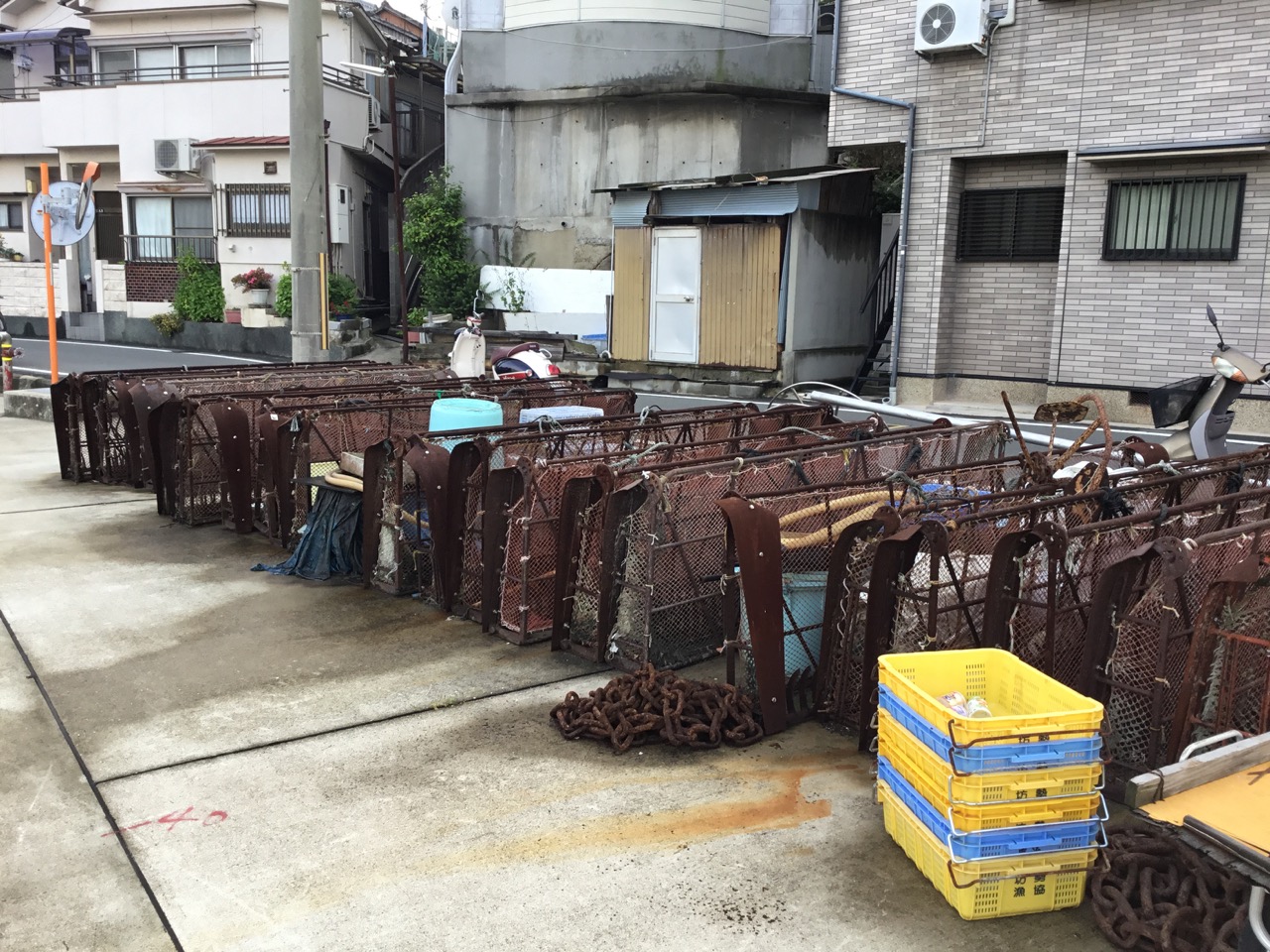
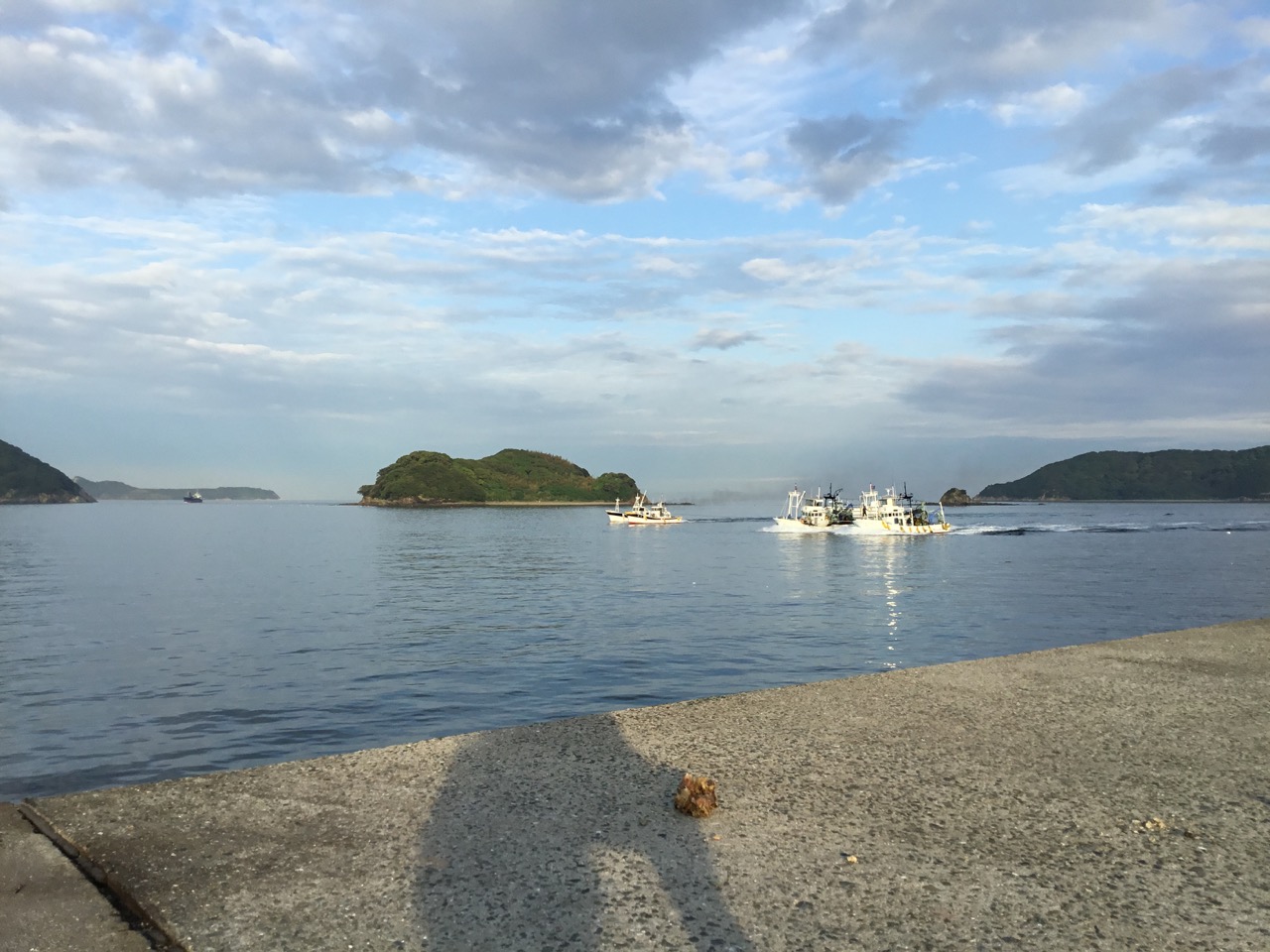 Also these two boats are towing the bigger boat, and I think it’s more about catching fish than moving a boat, but quite how this works is beyond me, perhaps the big boat has net hanging from it?
Also these two boats are towing the bigger boat, and I think it’s more about catching fish than moving a boat, but quite how this works is beyond me, perhaps the big boat has net hanging from it?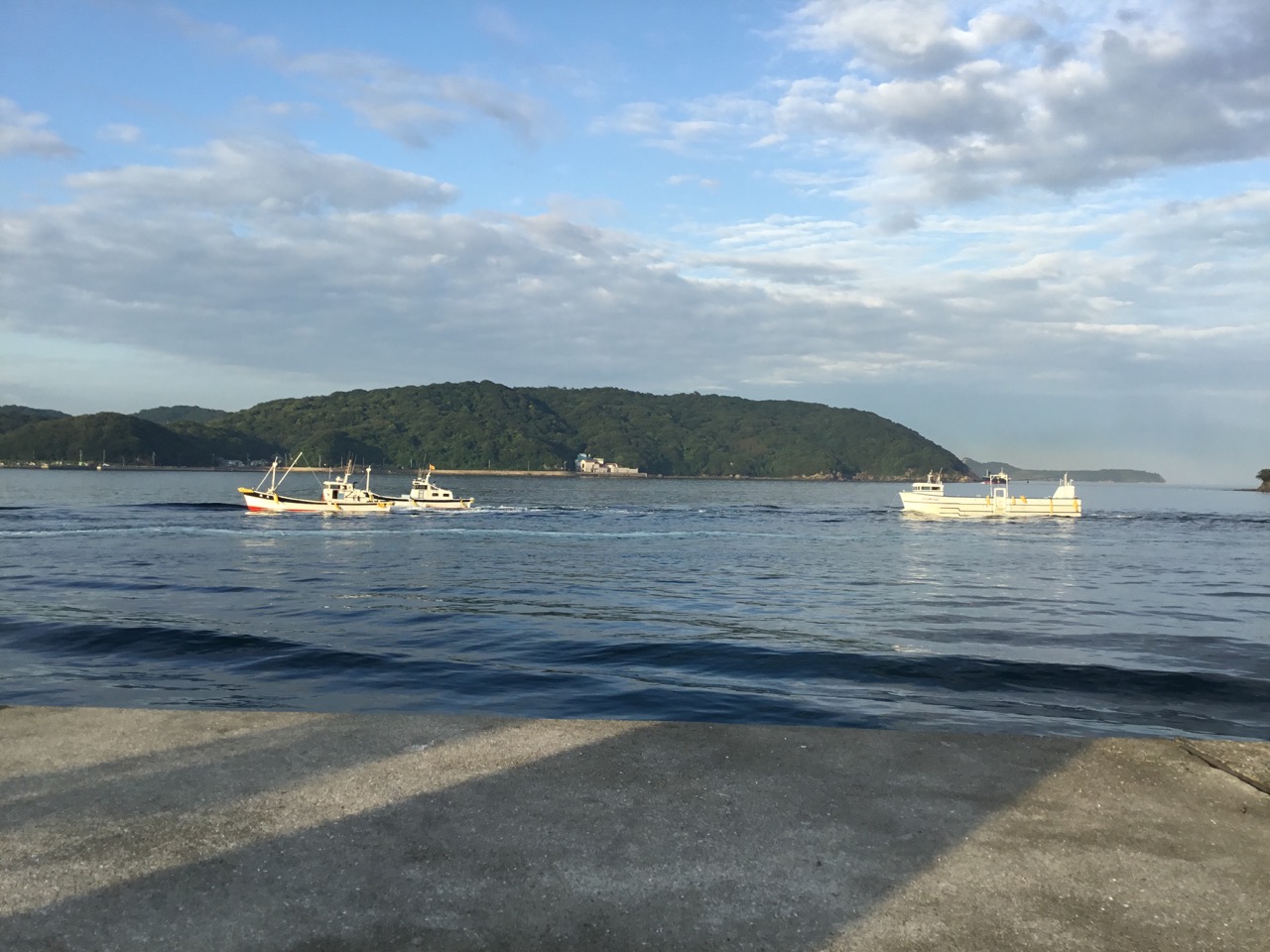

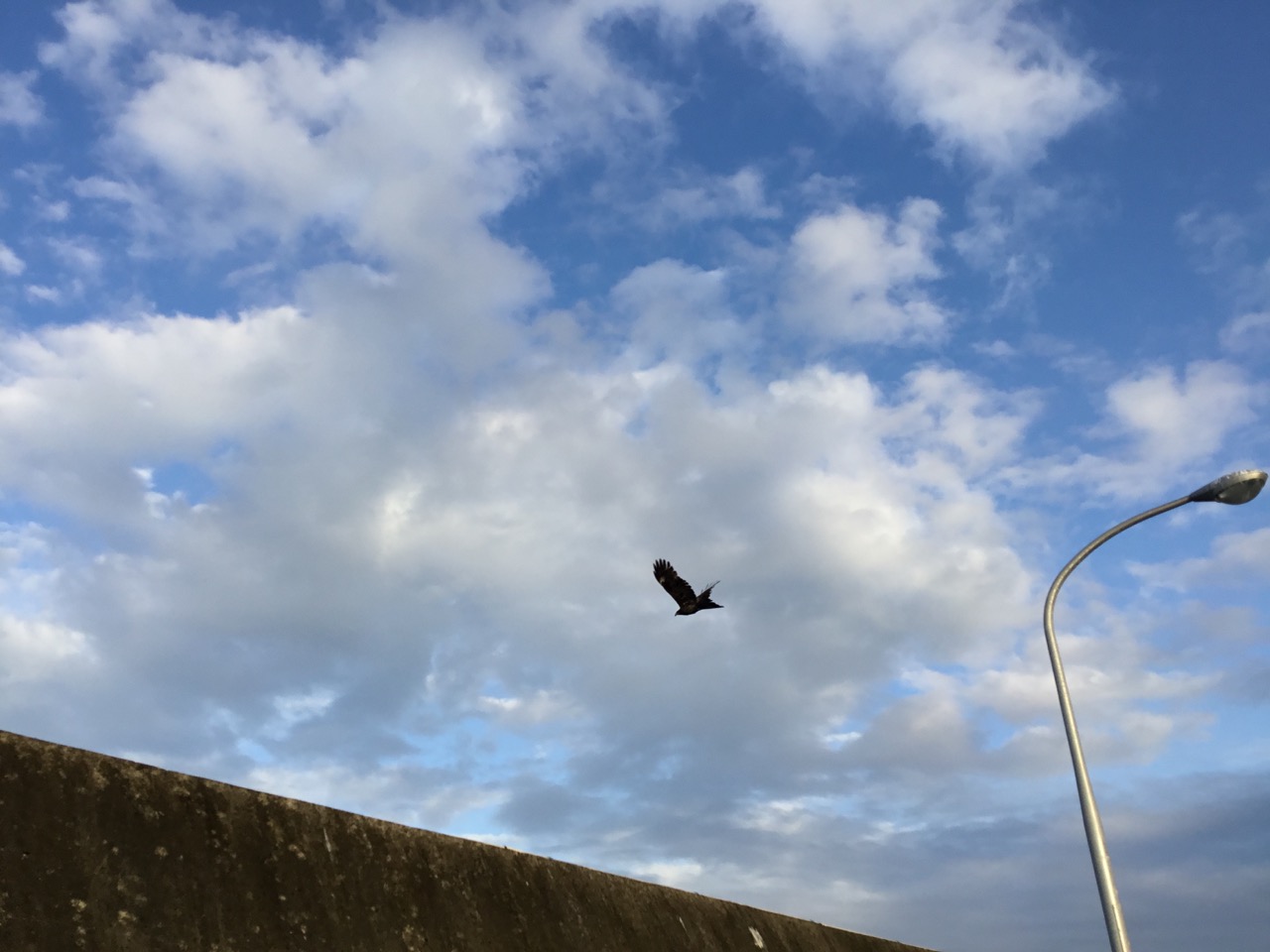

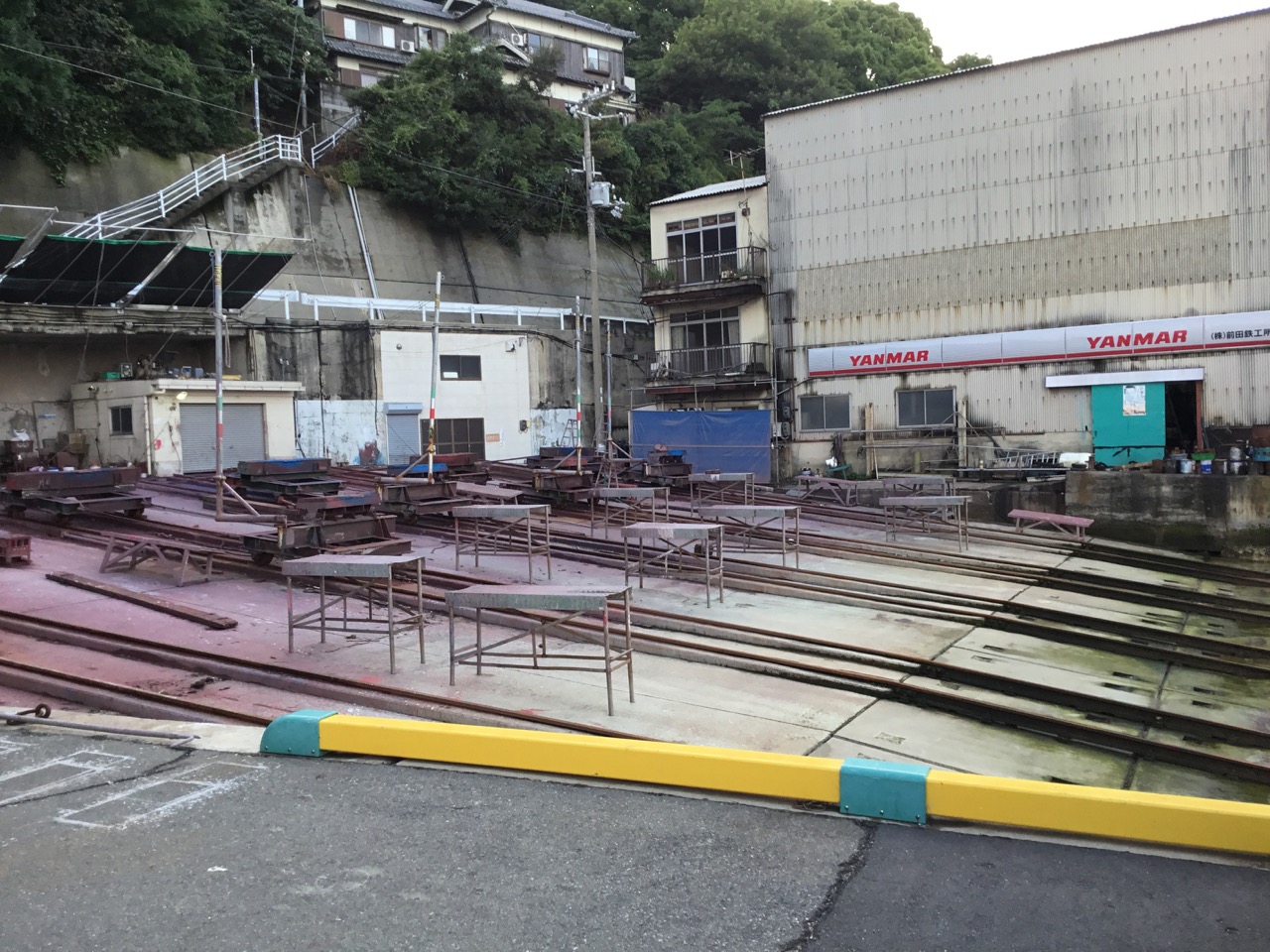
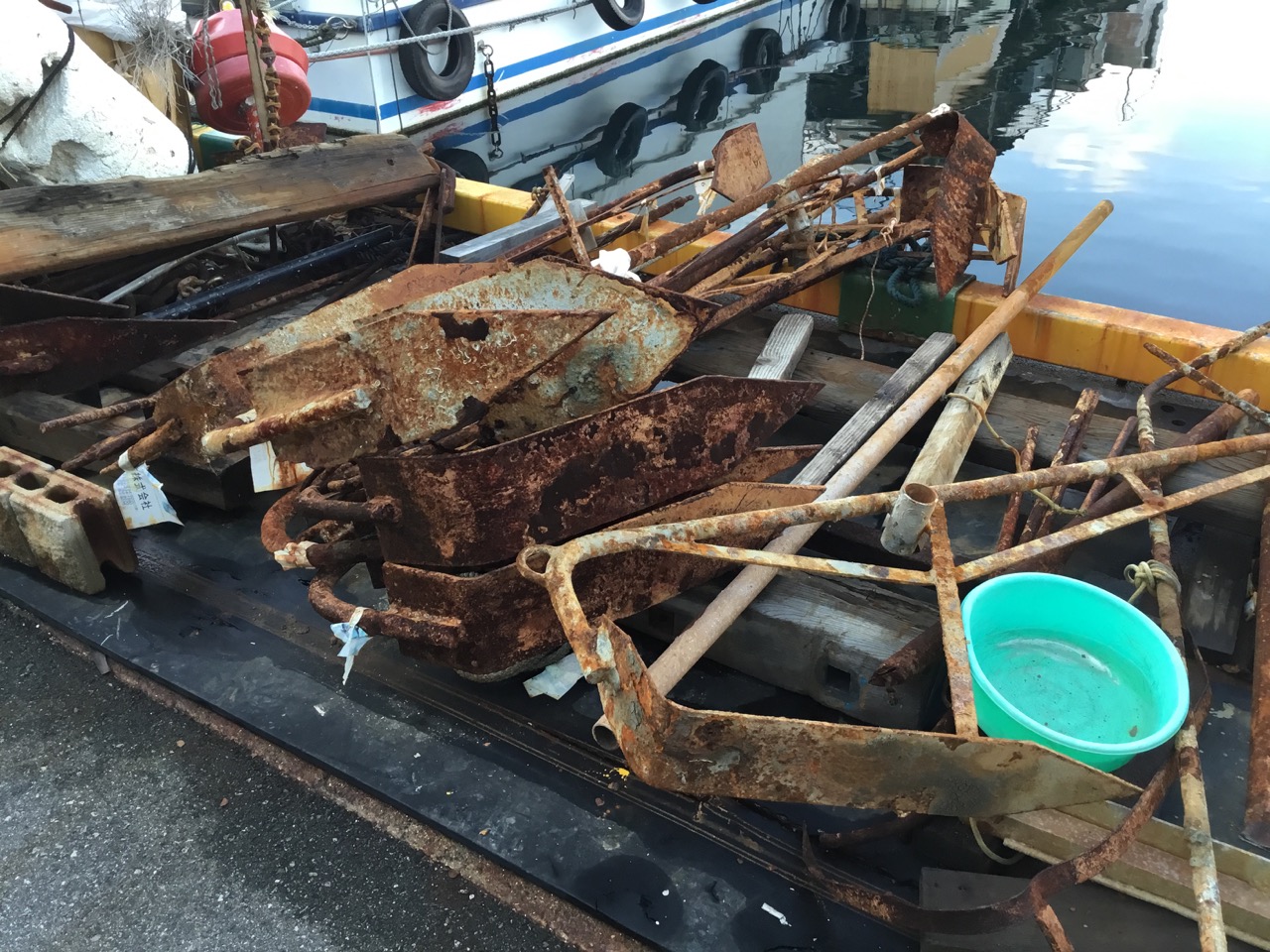 The big pipe is used to deliver ice blocks into the hold of the fishing boats.
The big pipe is used to deliver ice blocks into the hold of the fishing boats.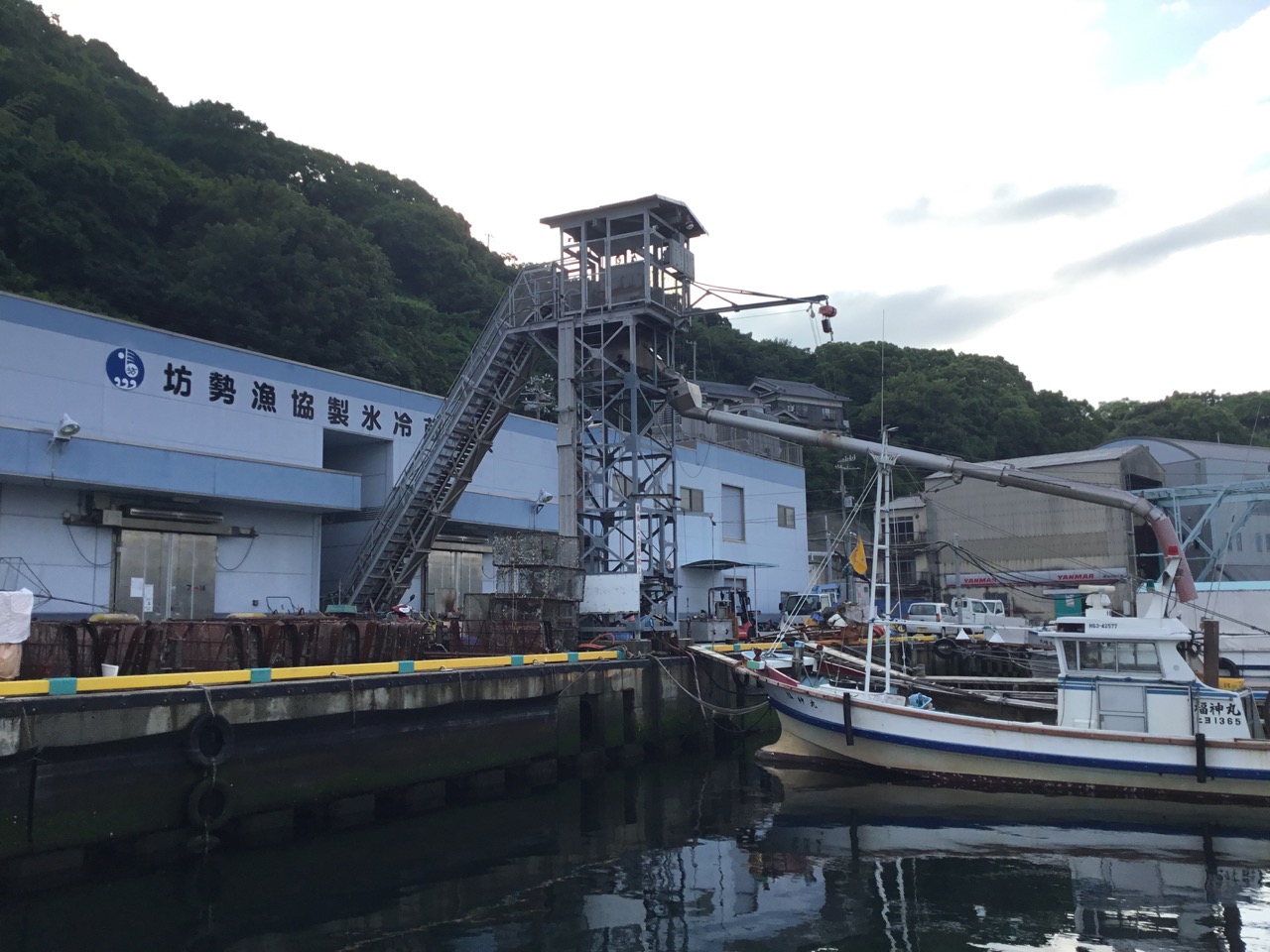
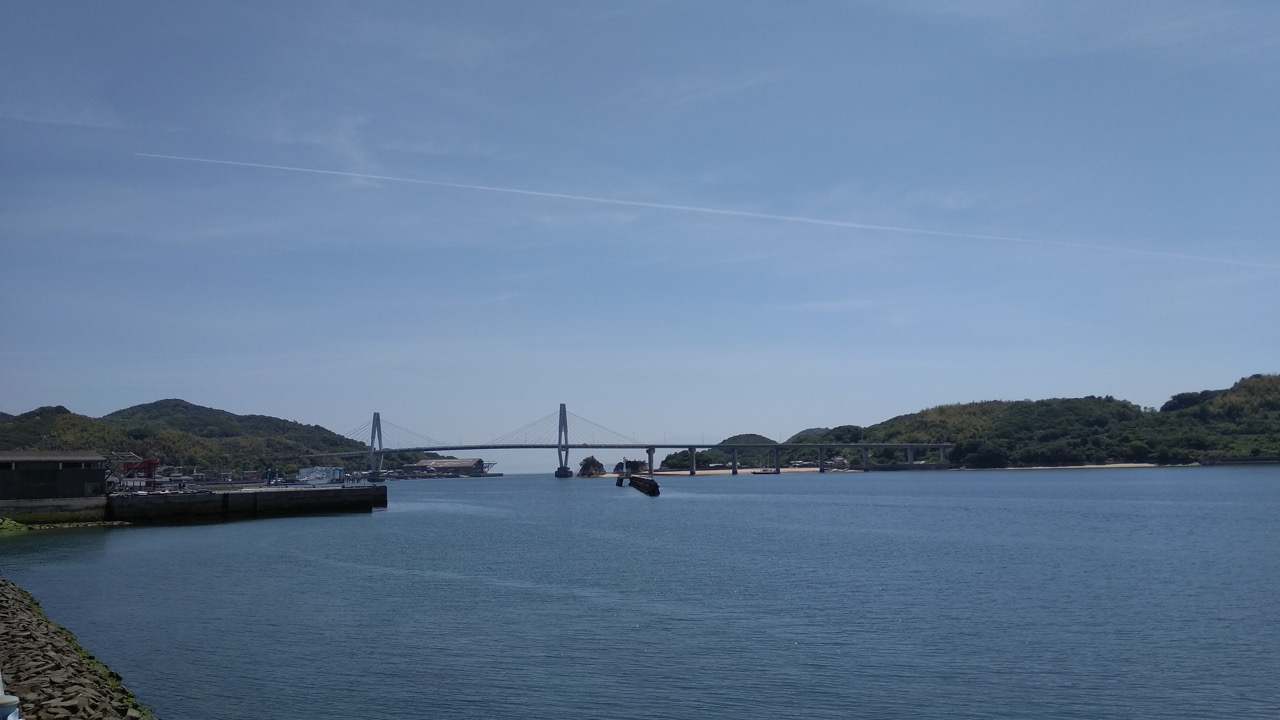 We arrived in Yuge for the Setouchi the day before the rally began and had a warm welcome from the organiser, “KC” and some other rally participants who were already there. Above you can see the bridge we passed under as seen from our berth on a small pontoon in the town centre. Yuge Town, is a small affair, you can walk all around it in about 20 minutes, it’s very sleepy and although it has a population of 6000, I only ever saw about five people out at any one point. Below you can see the other rally boats on the pontoon.
We arrived in Yuge for the Setouchi the day before the rally began and had a warm welcome from the organiser, “KC” and some other rally participants who were already there. Above you can see the bridge we passed under as seen from our berth on a small pontoon in the town centre. Yuge Town, is a small affair, you can walk all around it in about 20 minutes, it’s very sleepy and although it has a population of 6000, I only ever saw about five people out at any one point. Below you can see the other rally boats on the pontoon.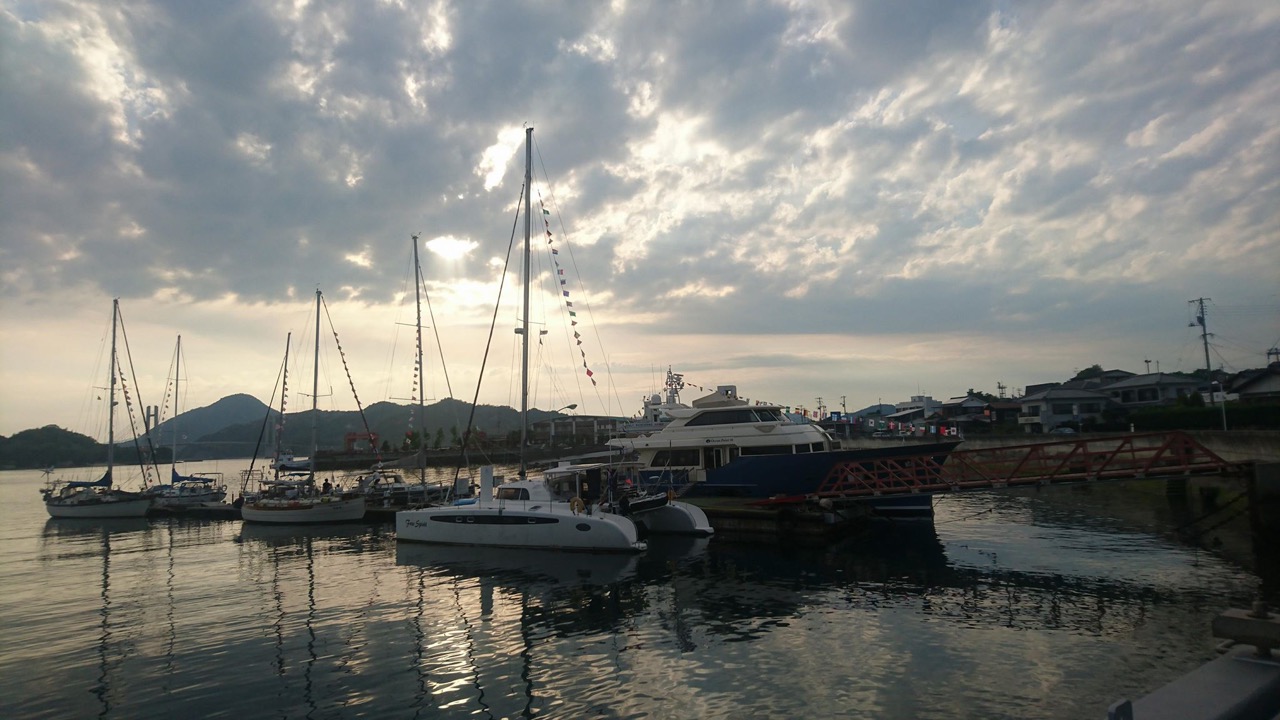 We have an Australian couple, Ken and Belinda, on the big cat who are just wrapping up and heading home after spending 5 years touring the Pacific islands. We have Rob, a Canadian who has left the rally early to get up to Kushiro ready to sail over to his home town of Vancouver. We have scrapped plans to leave from there and instead will leave from a lower latitude of 35deg North where we hope to ride the bottom of the depressions heading east. It will be interesting to see who gets there first, however Rob plans to visit Alaska on the way and may well stop off at the Aleutians if he is close and fancies a rest. The other boats are all Japanese crewed, and mostly a lively bunch who enjoy their sake. The big motor boat is owned by a successful businessman who is also a sponsor of the rally. He has invited 6 Australians onboard as well, so they are enjoying a level of luxury we can’t quite match on Sister Midnight, I’m not sure our deck wash spraying into the cockpit well would be as good as their Jacuzzi on the top deck. However at least we don’t have to worry about staff here.
We have an Australian couple, Ken and Belinda, on the big cat who are just wrapping up and heading home after spending 5 years touring the Pacific islands. We have Rob, a Canadian who has left the rally early to get up to Kushiro ready to sail over to his home town of Vancouver. We have scrapped plans to leave from there and instead will leave from a lower latitude of 35deg North where we hope to ride the bottom of the depressions heading east. It will be interesting to see who gets there first, however Rob plans to visit Alaska on the way and may well stop off at the Aleutians if he is close and fancies a rest. The other boats are all Japanese crewed, and mostly a lively bunch who enjoy their sake. The big motor boat is owned by a successful businessman who is also a sponsor of the rally. He has invited 6 Australians onboard as well, so they are enjoying a level of luxury we can’t quite match on Sister Midnight, I’m not sure our deck wash spraying into the cockpit well would be as good as their Jacuzzi on the top deck. However at least we don’t have to worry about staff here.
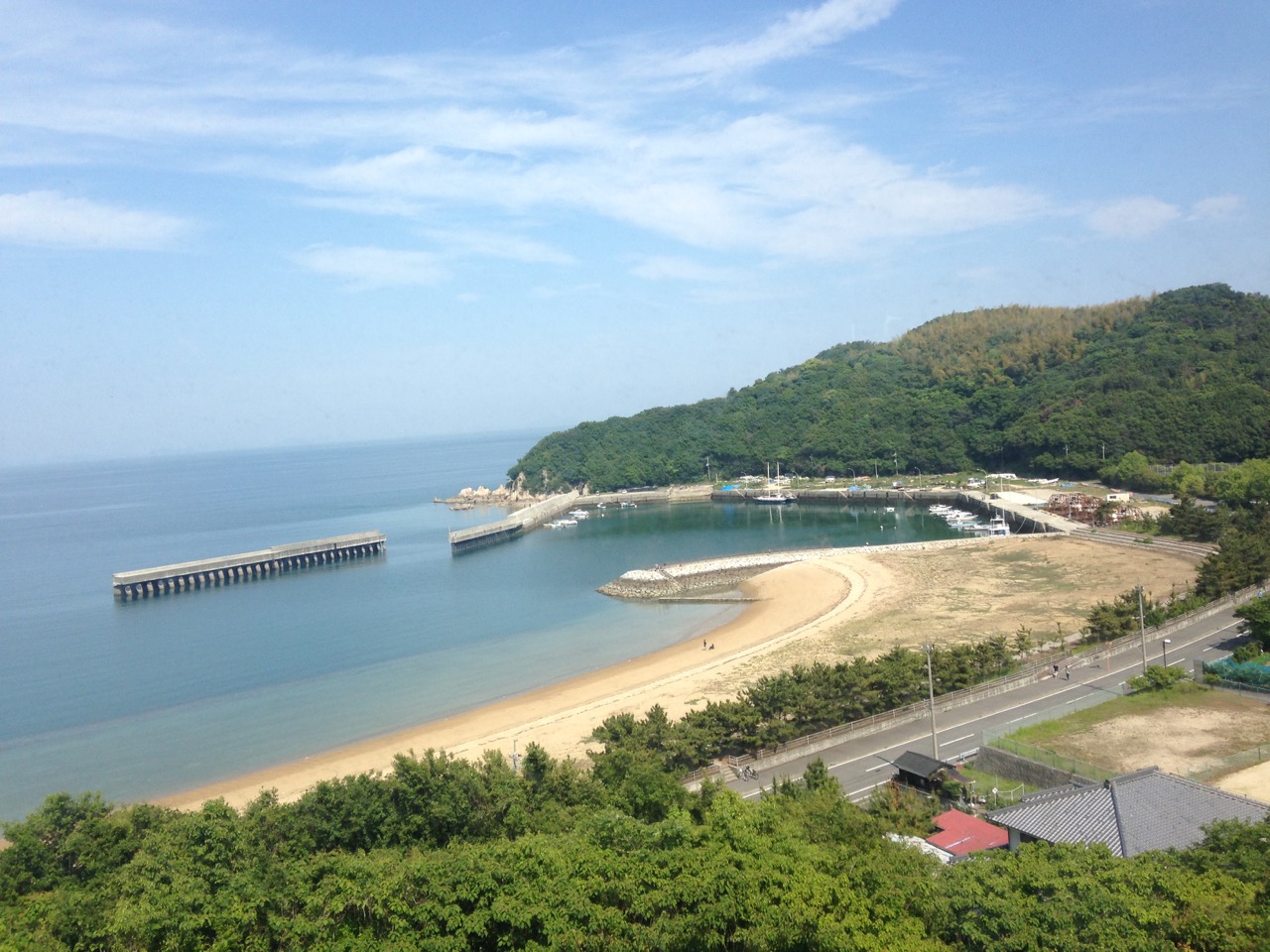
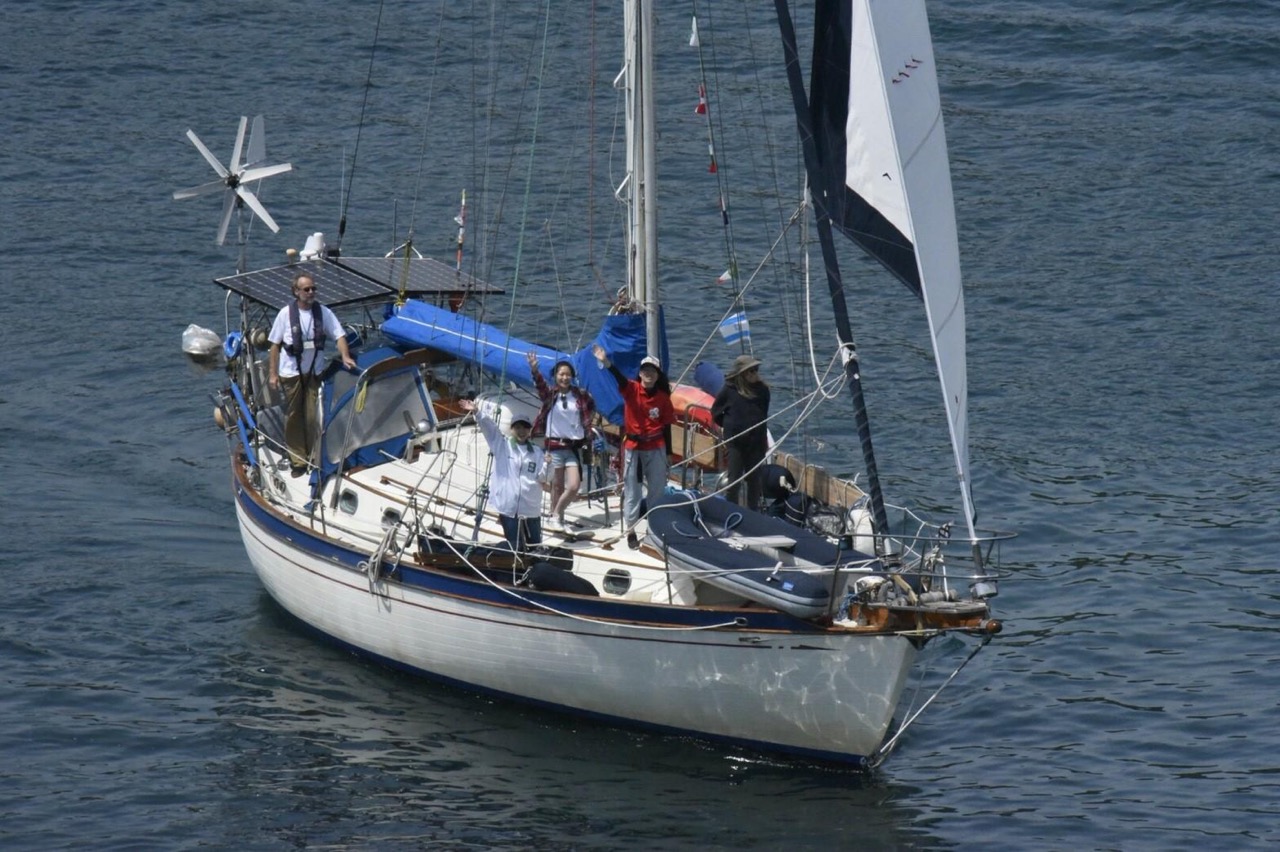
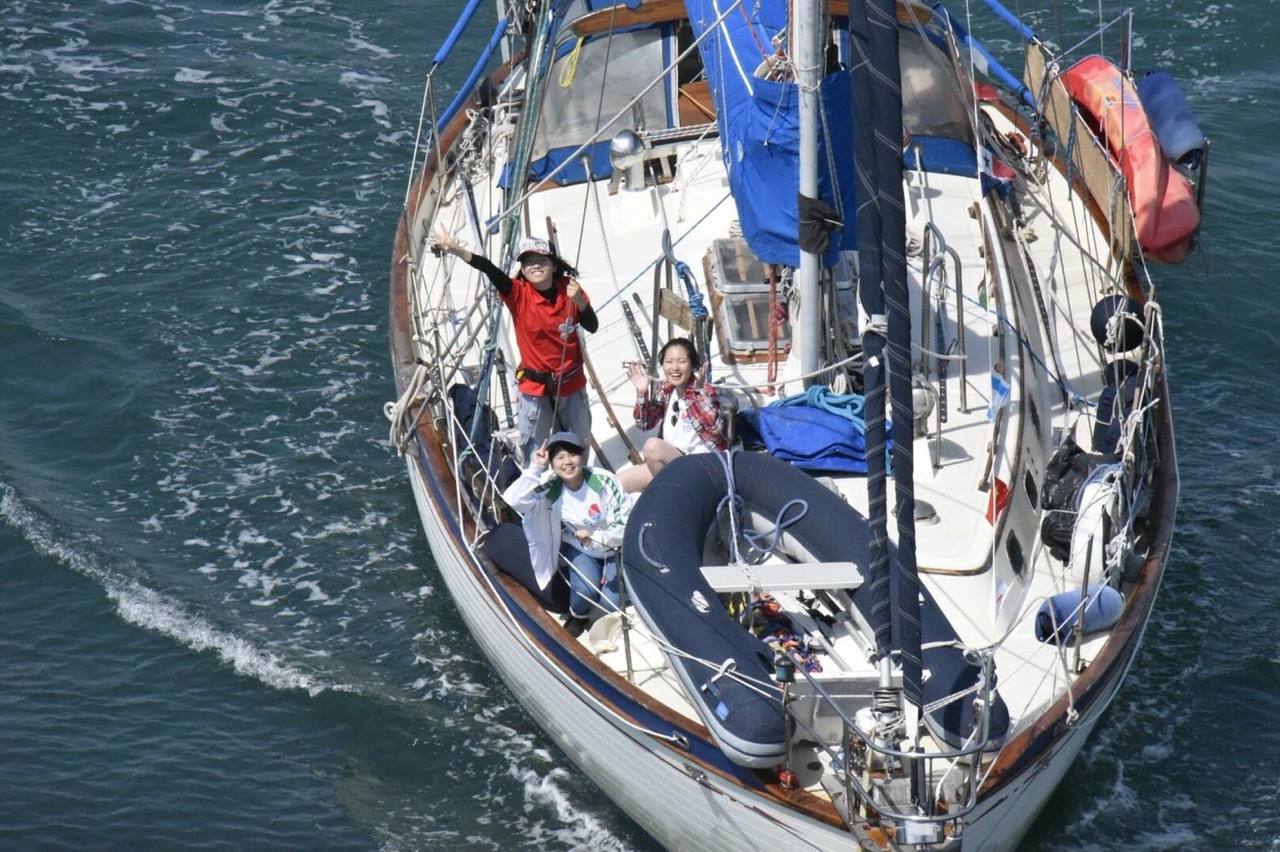
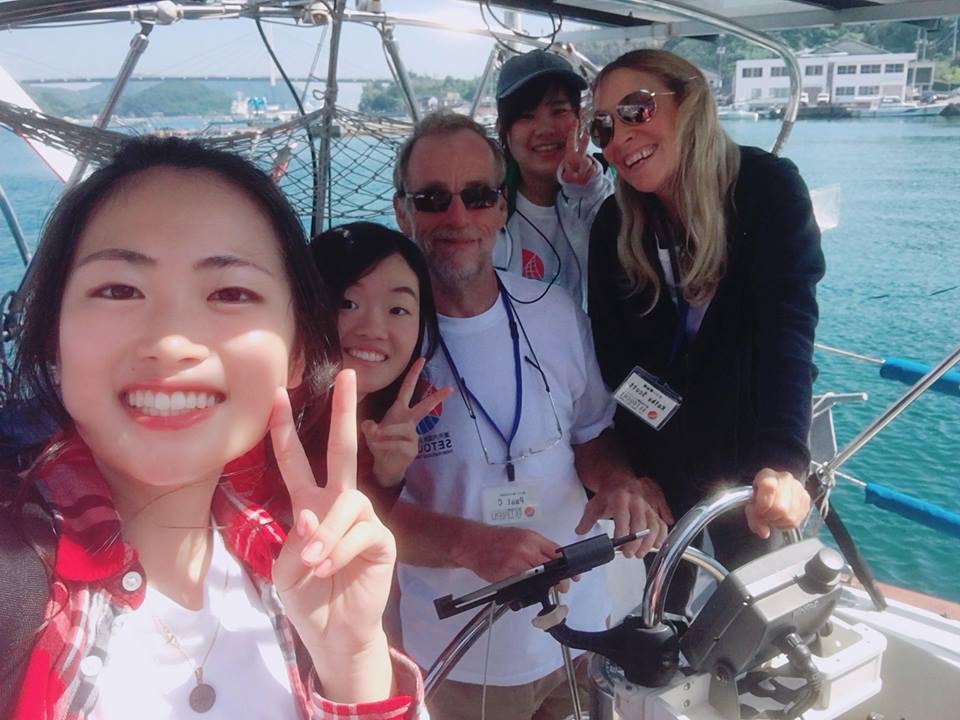
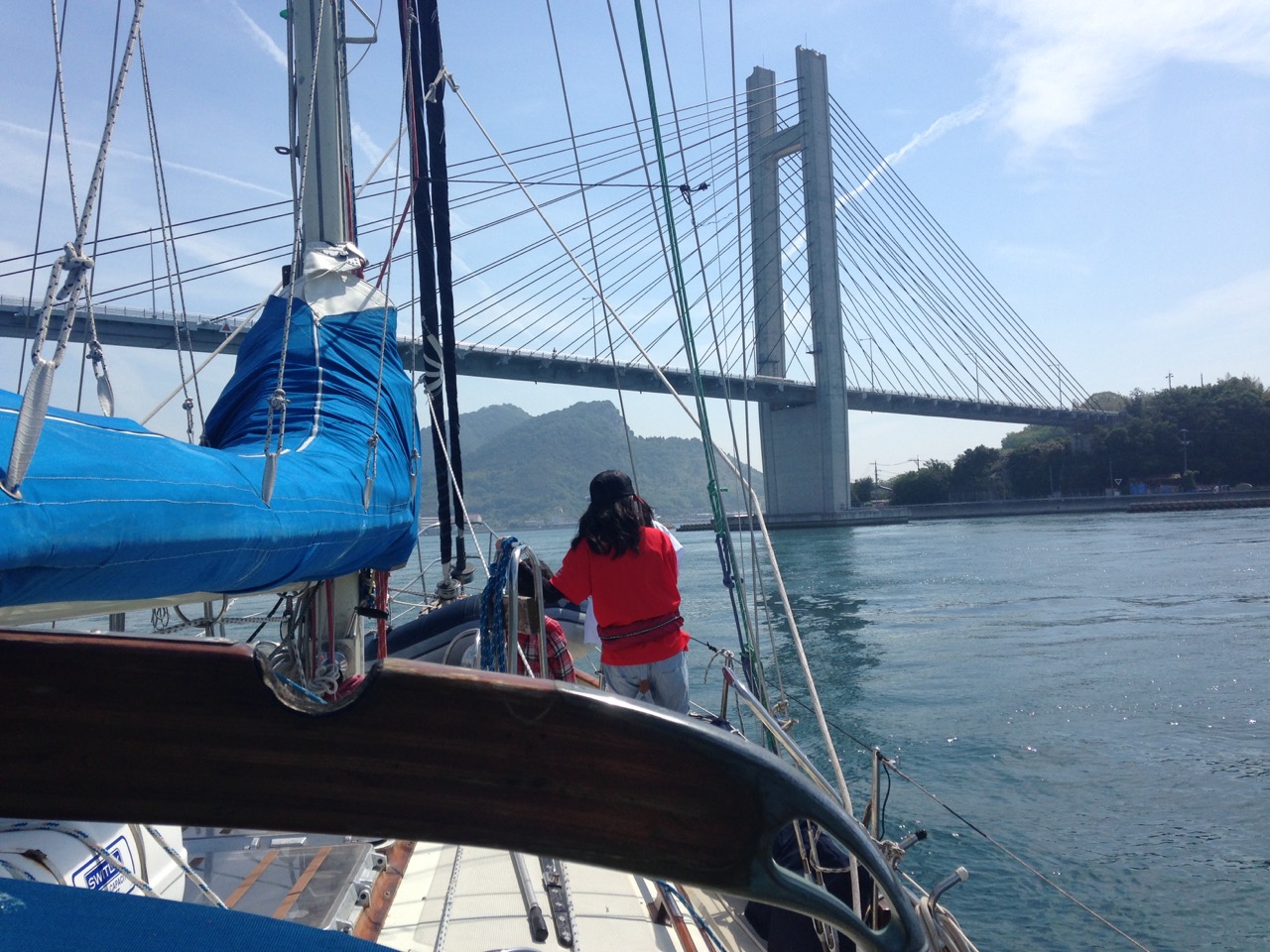
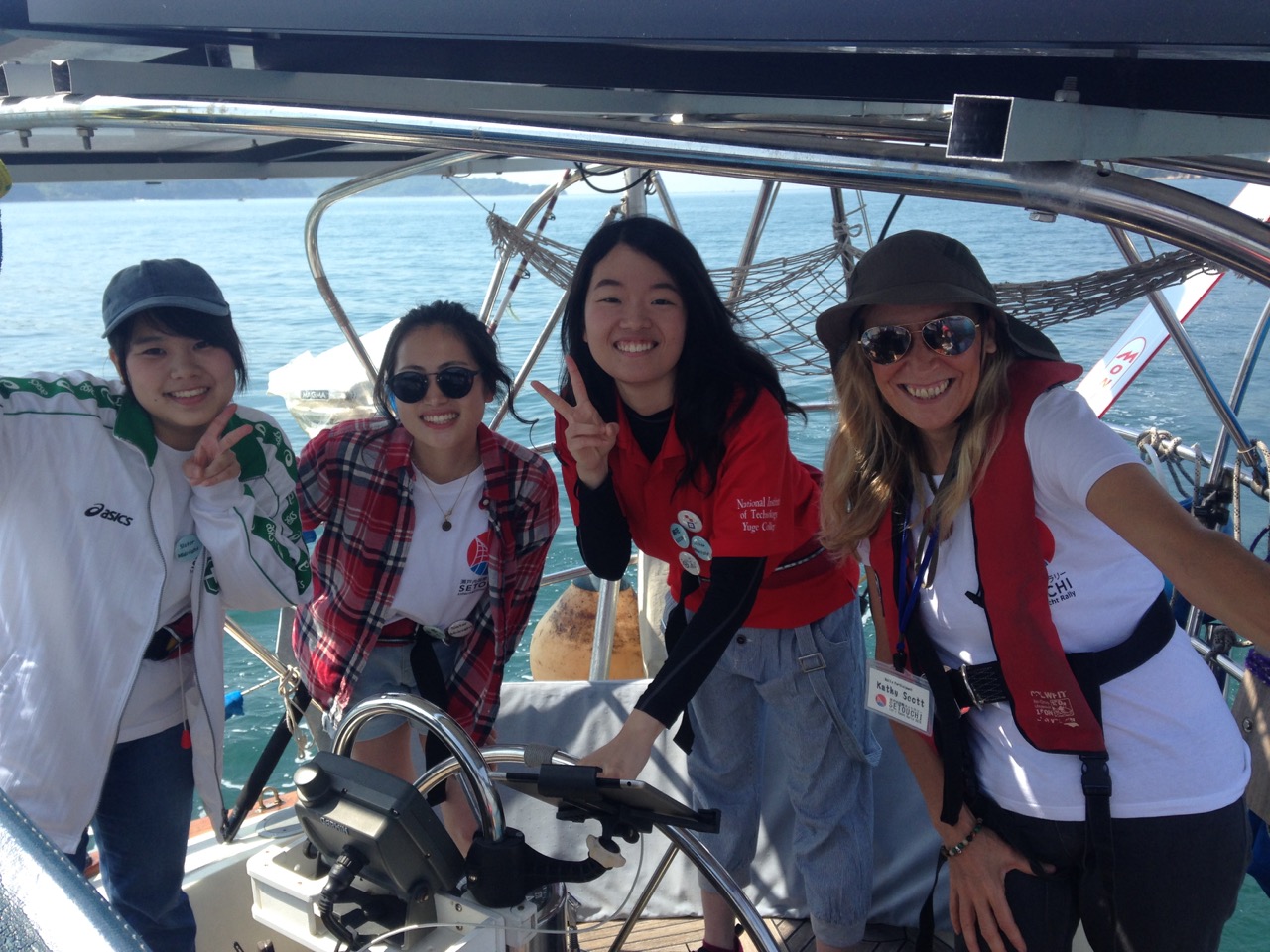
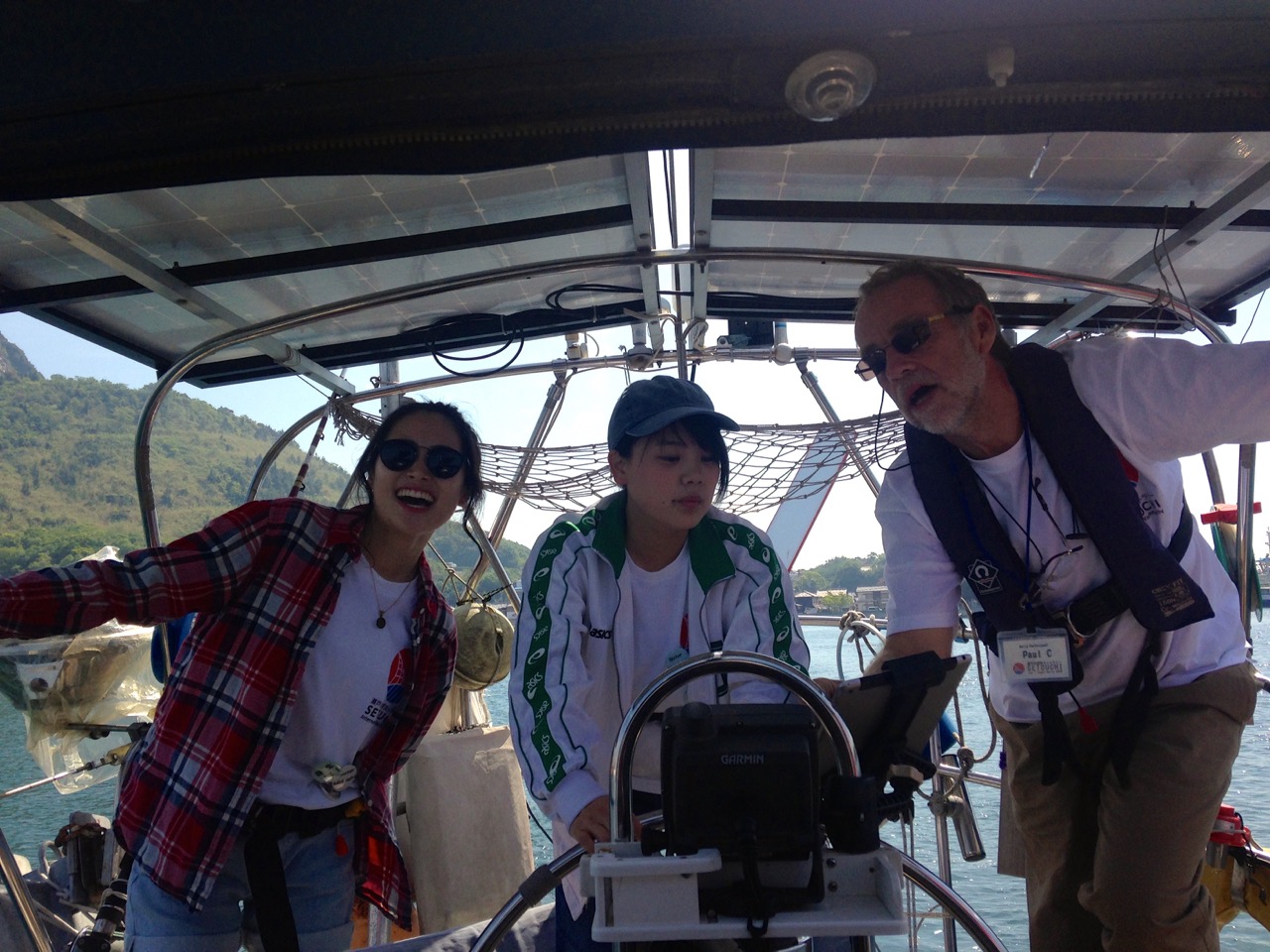 Later that day the students put on a wonderful barbecue for us near the beach and plied us with alcohol and food for several hours.
Later that day the students put on a wonderful barbecue for us near the beach and plied us with alcohol and food for several hours.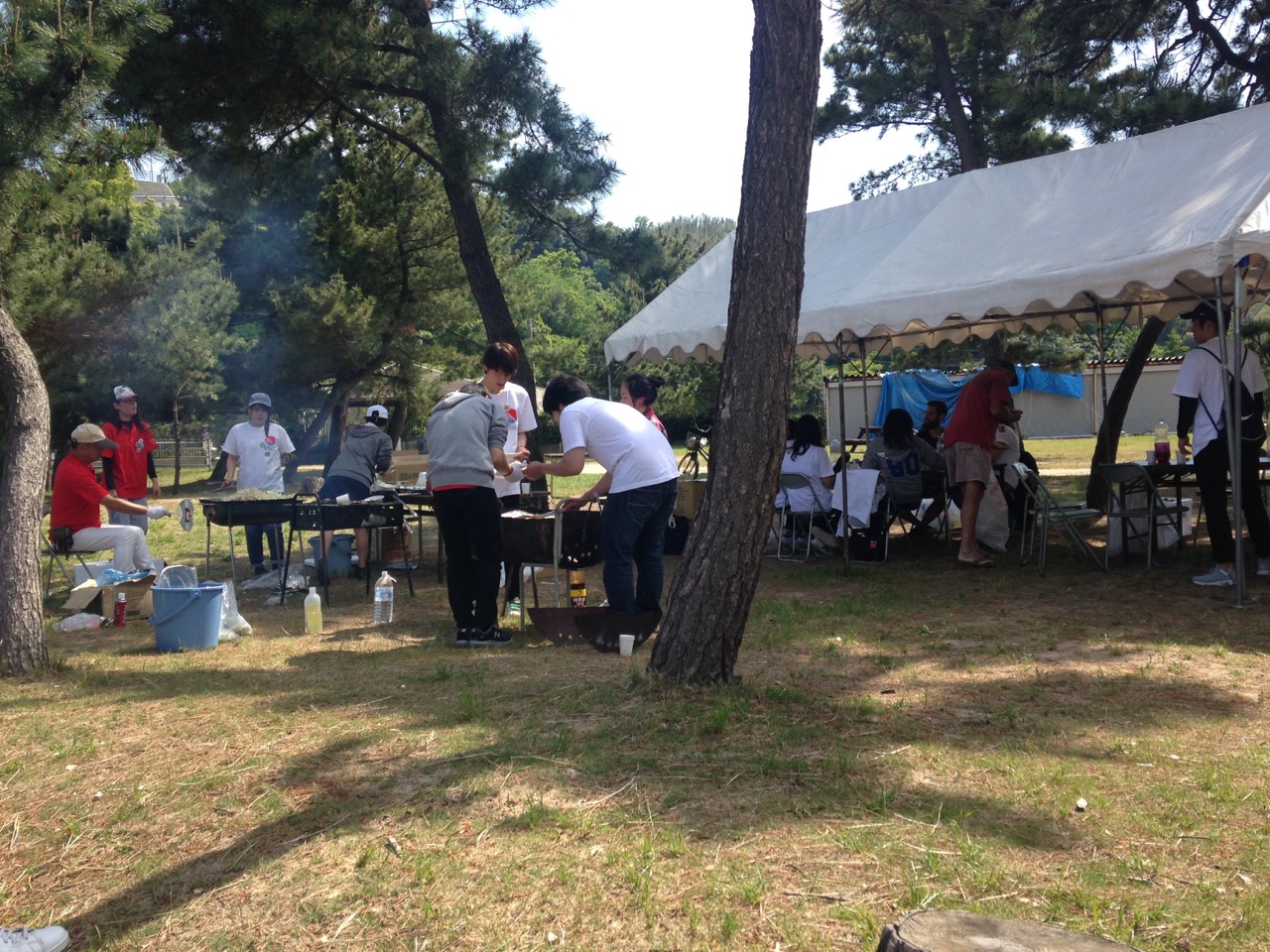

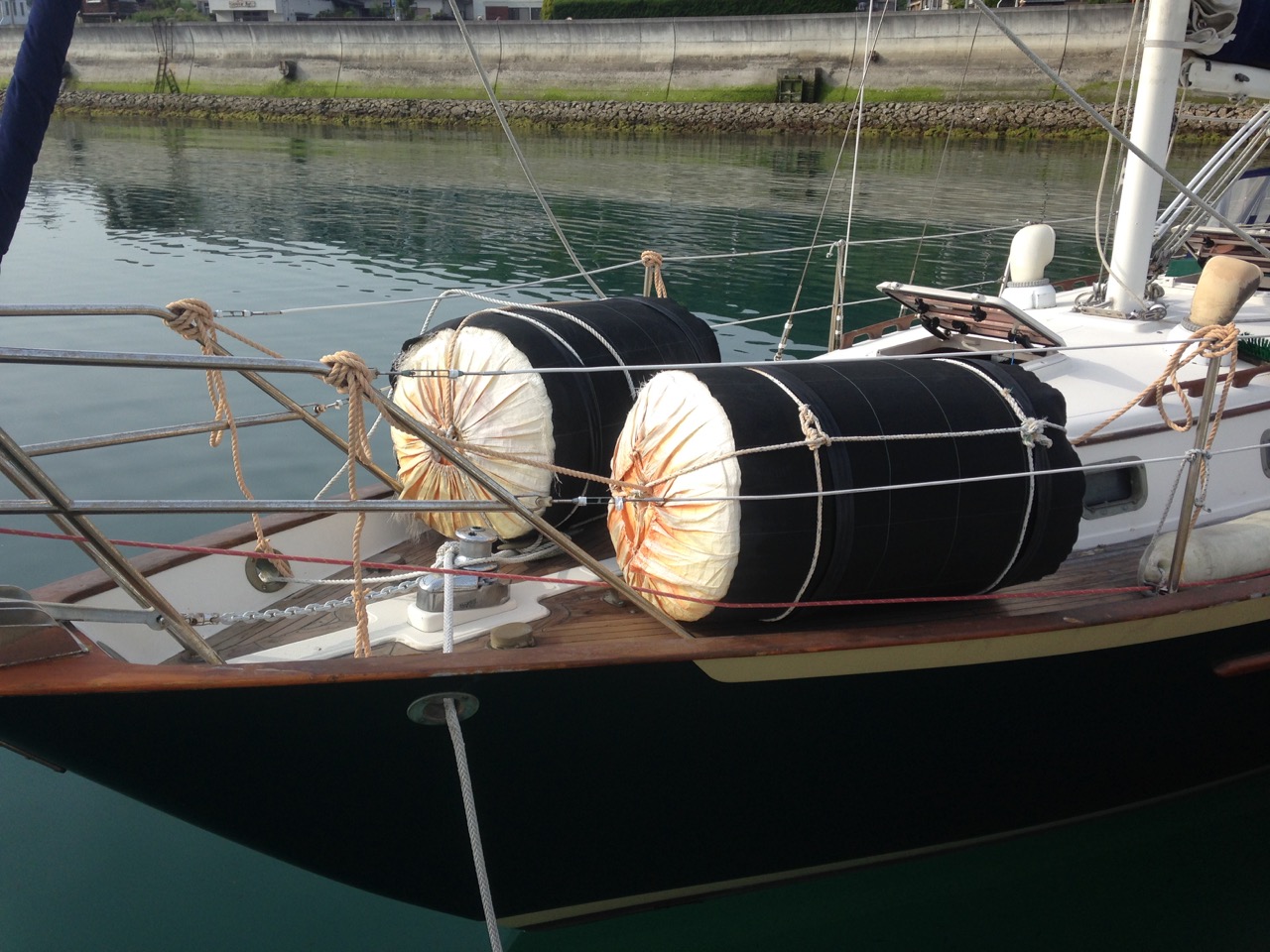
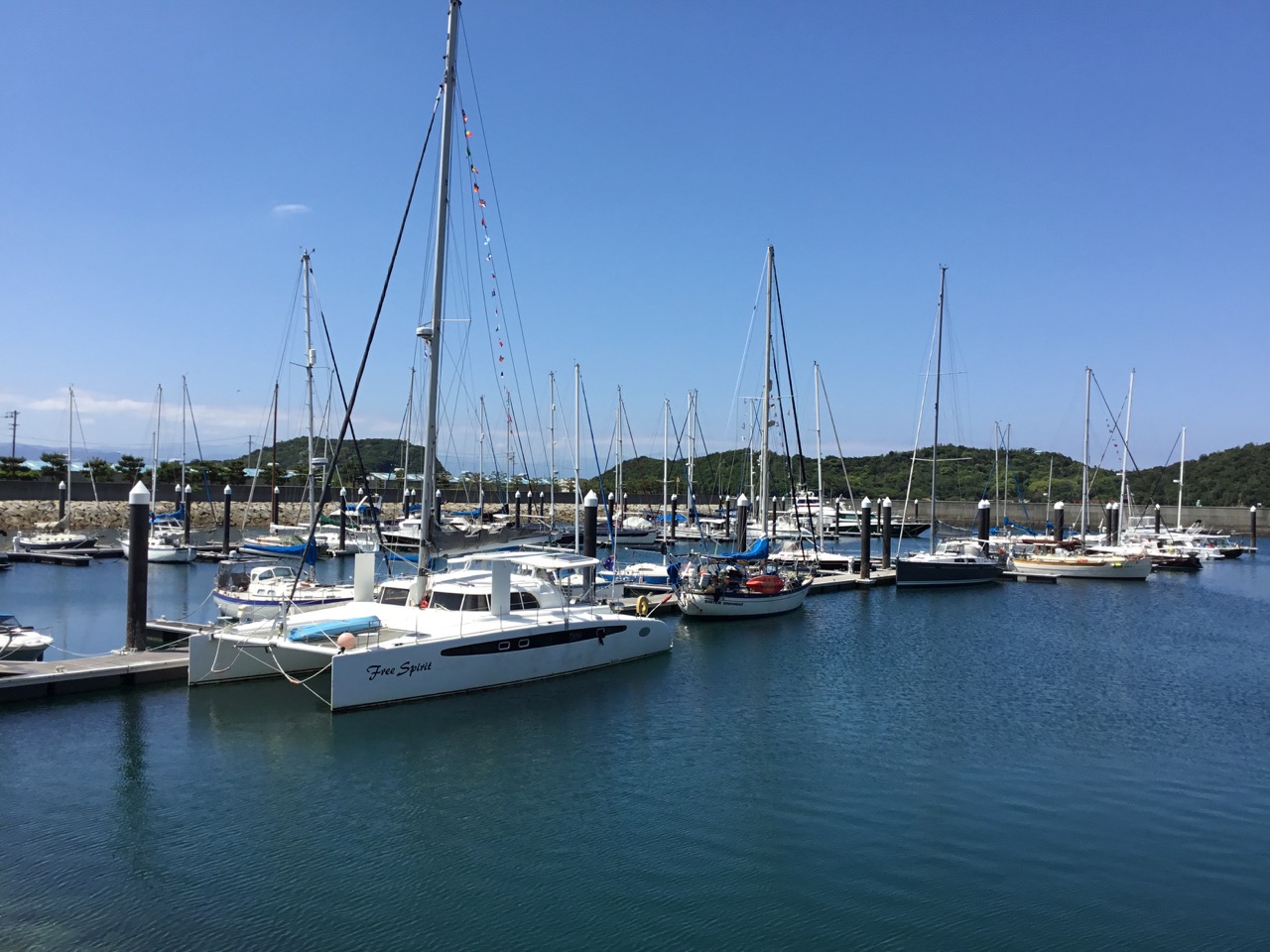
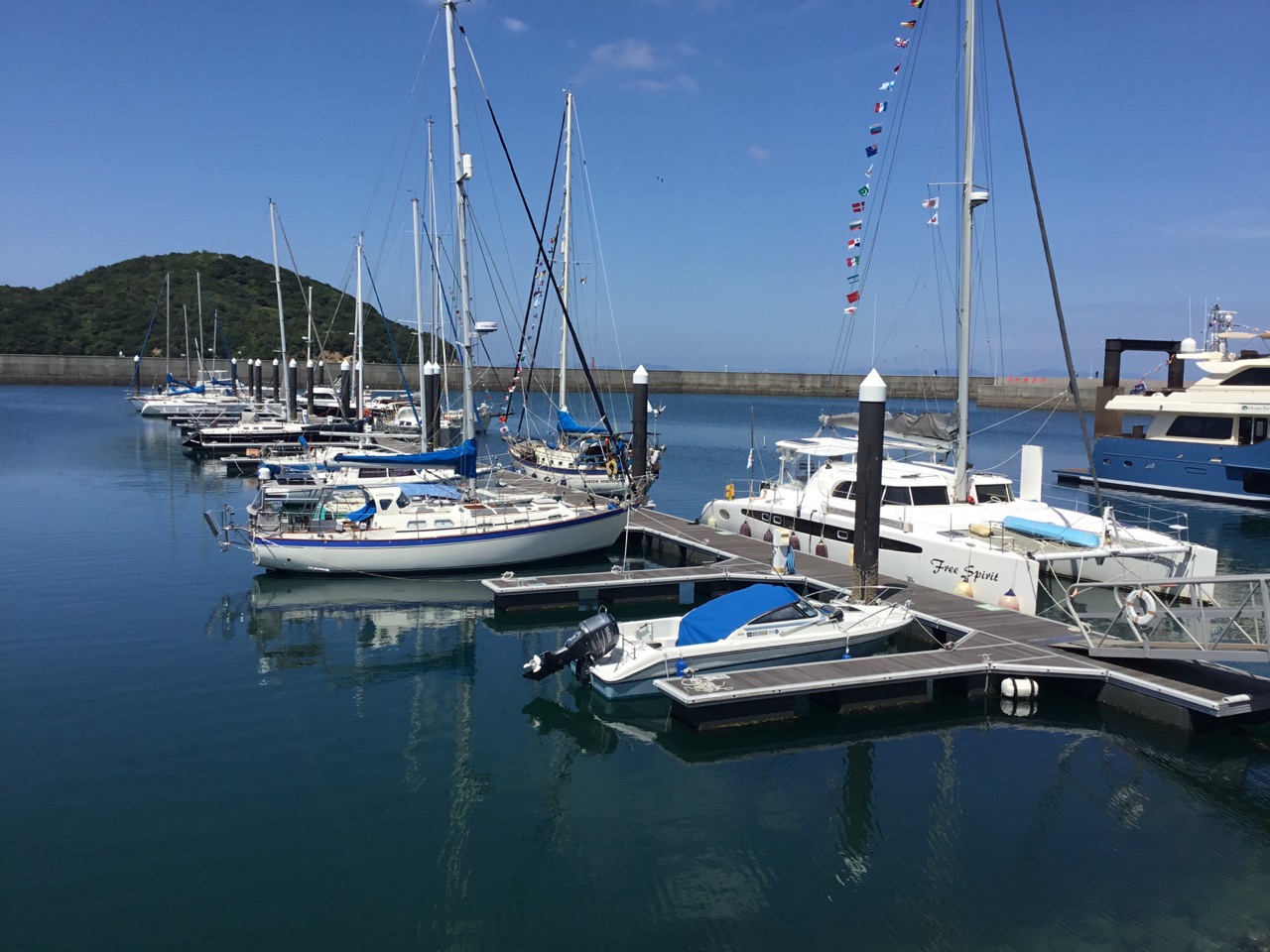
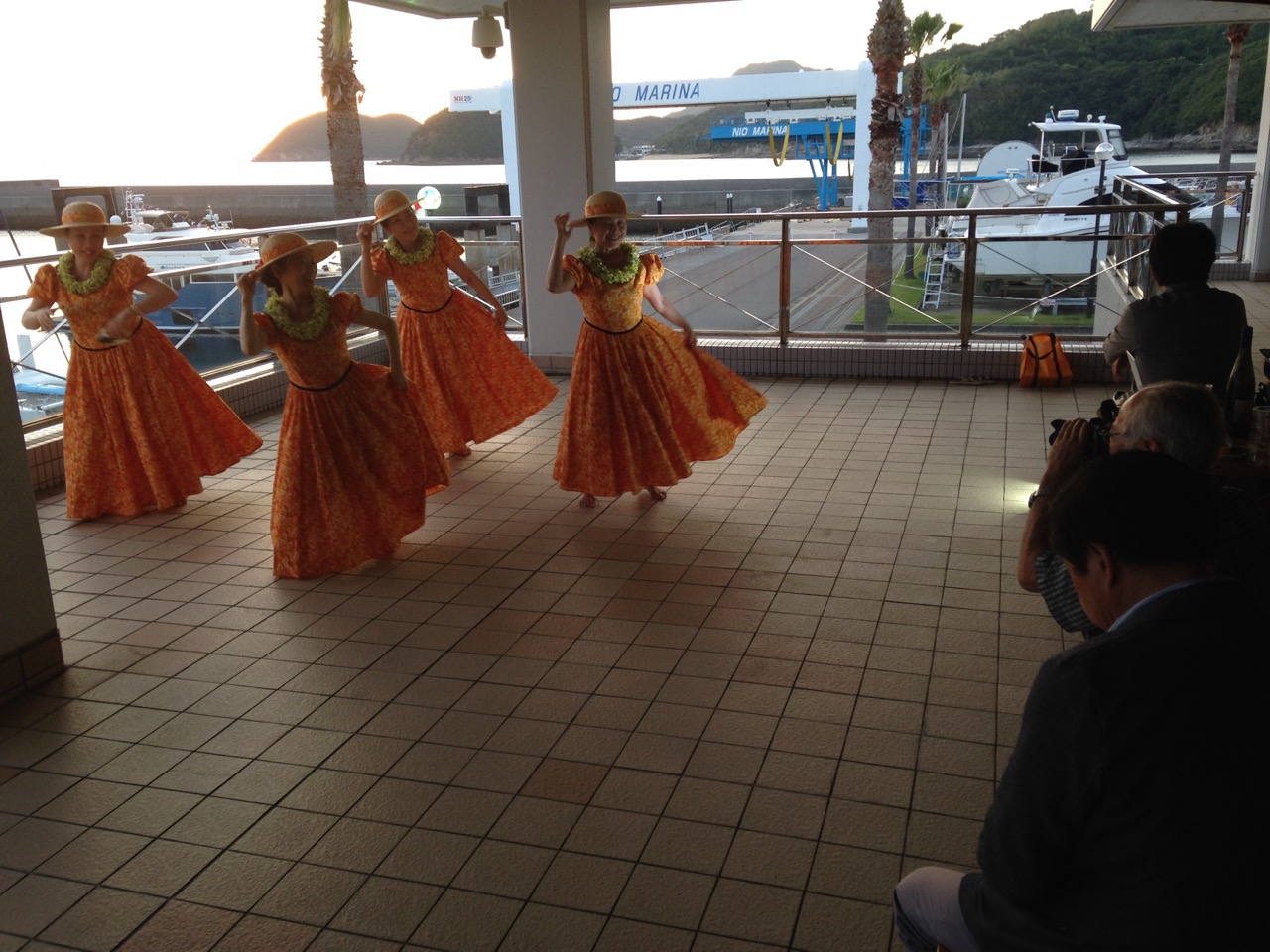 One thing Nio is famous for is sunsets, and the view from the yacht club was stunning, We’ve seen a few now, but this was good.
One thing Nio is famous for is sunsets, and the view from the yacht club was stunning, We’ve seen a few now, but this was good.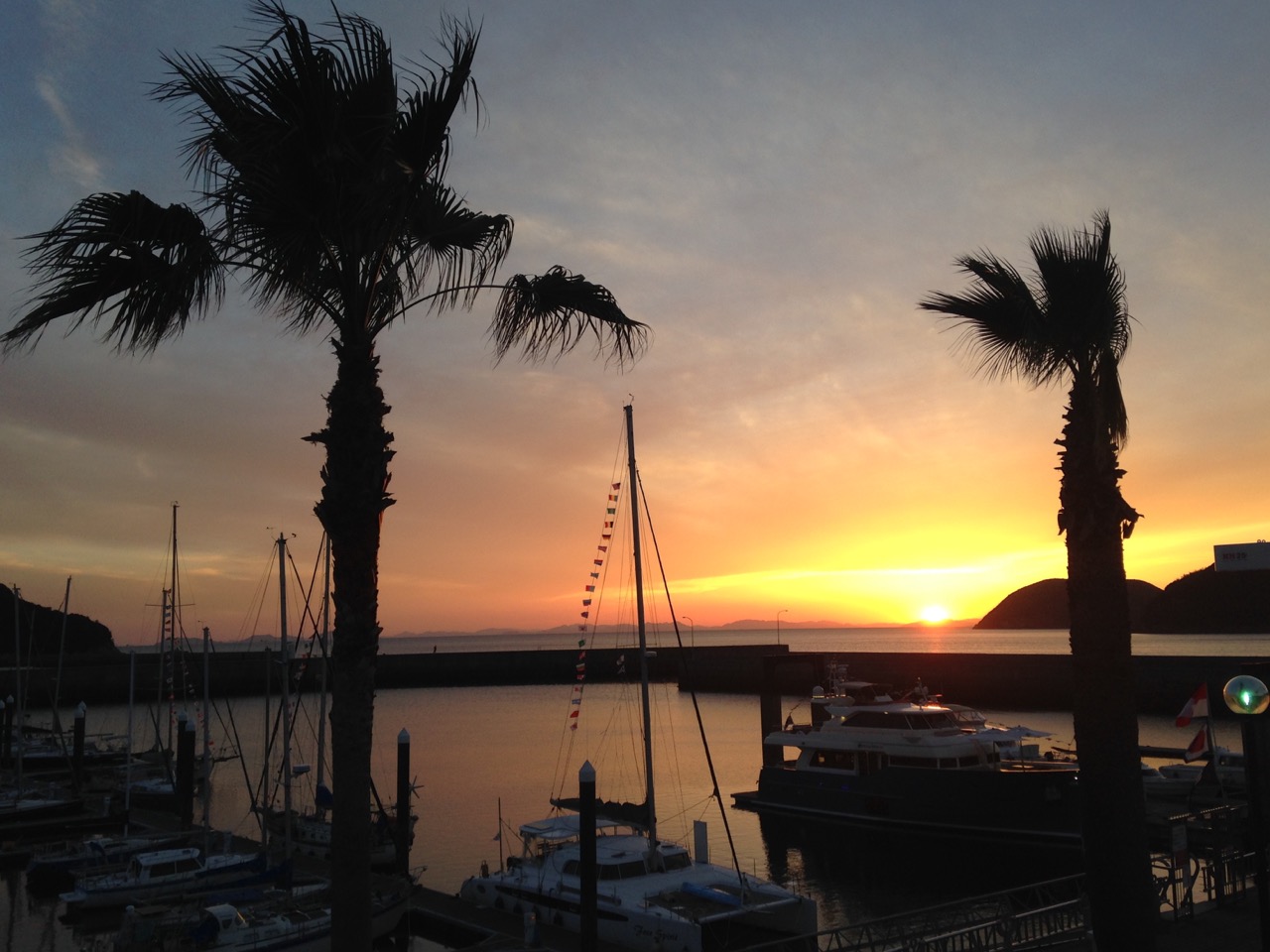
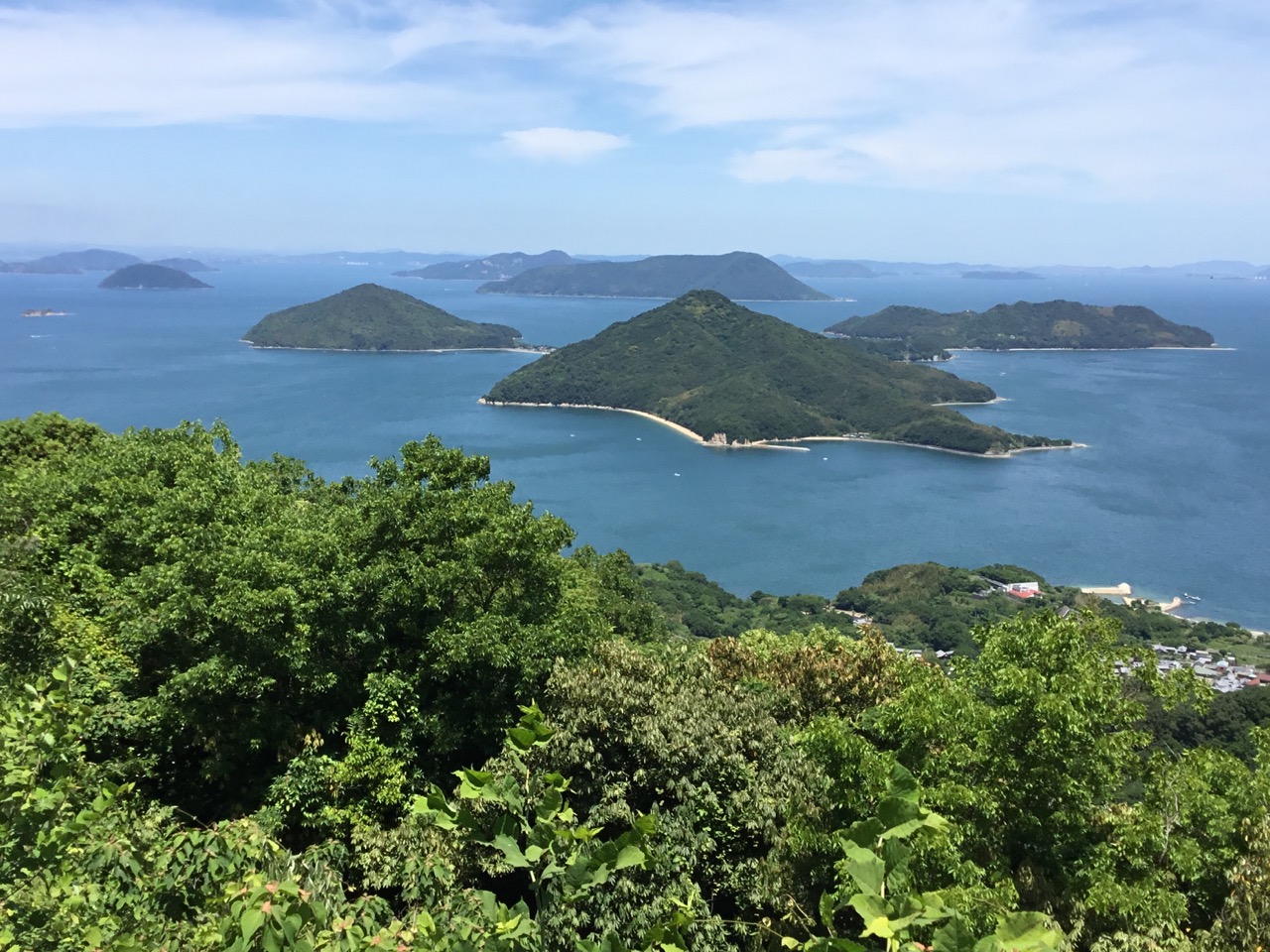
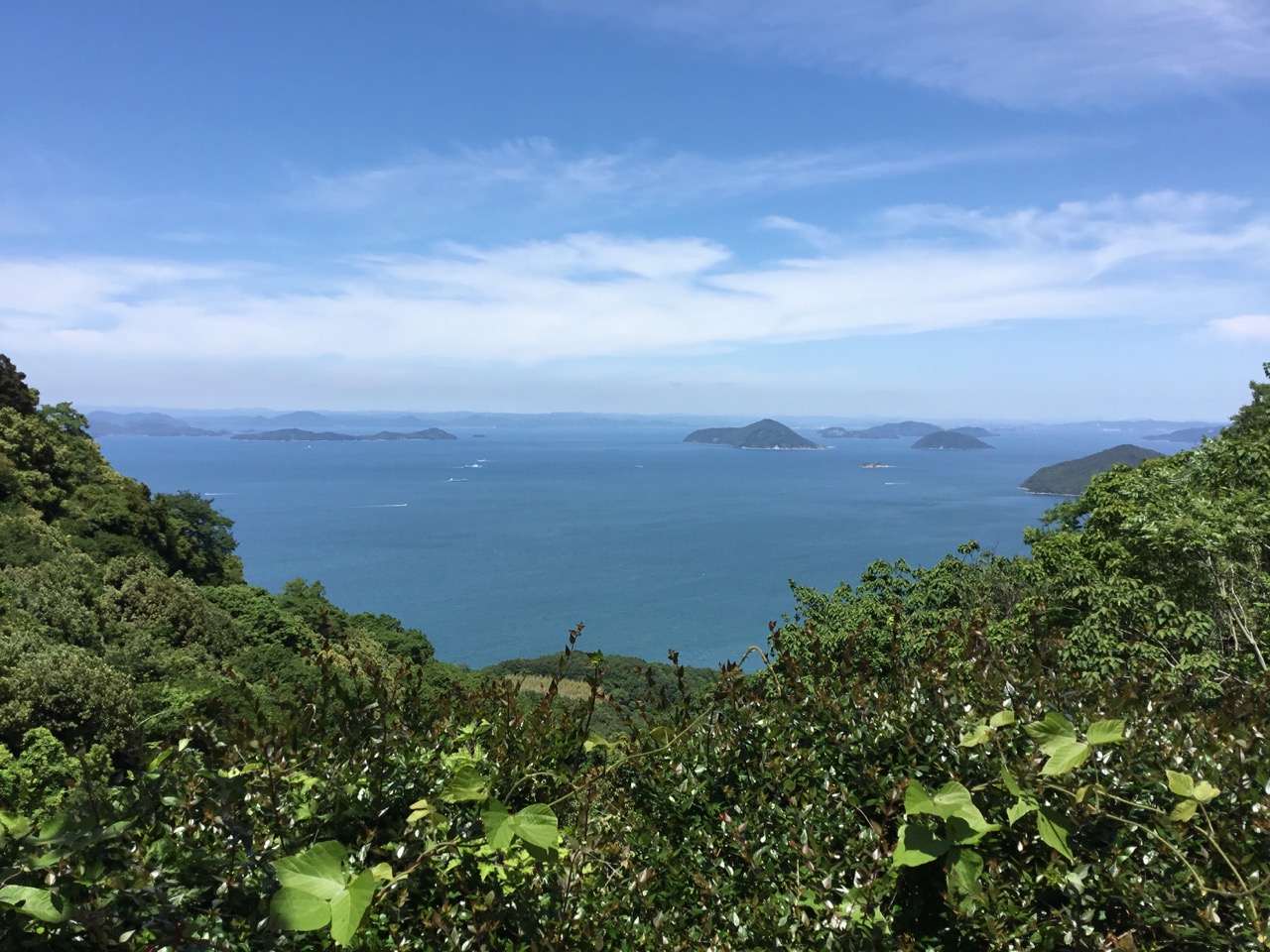

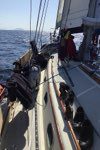
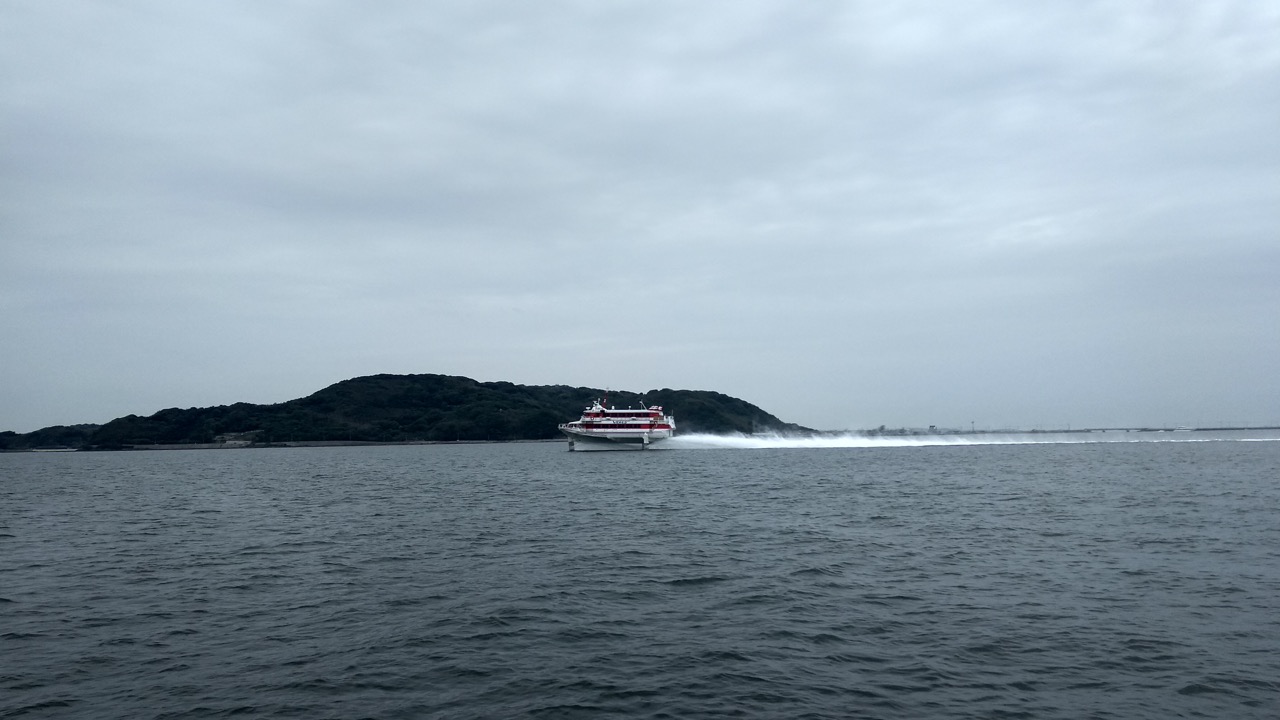 they go so fast and make no wake, but leave a foaming thin spread of white water behind them, like contrails.
they go so fast and make no wake, but leave a foaming thin spread of white water behind them, like contrails.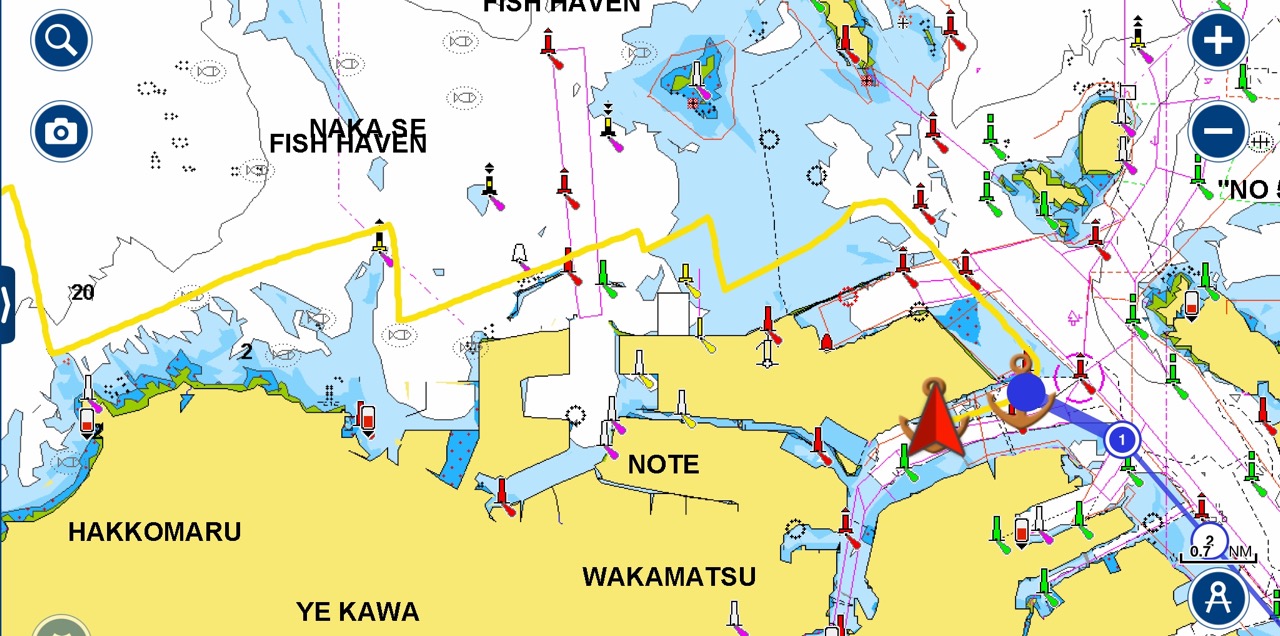
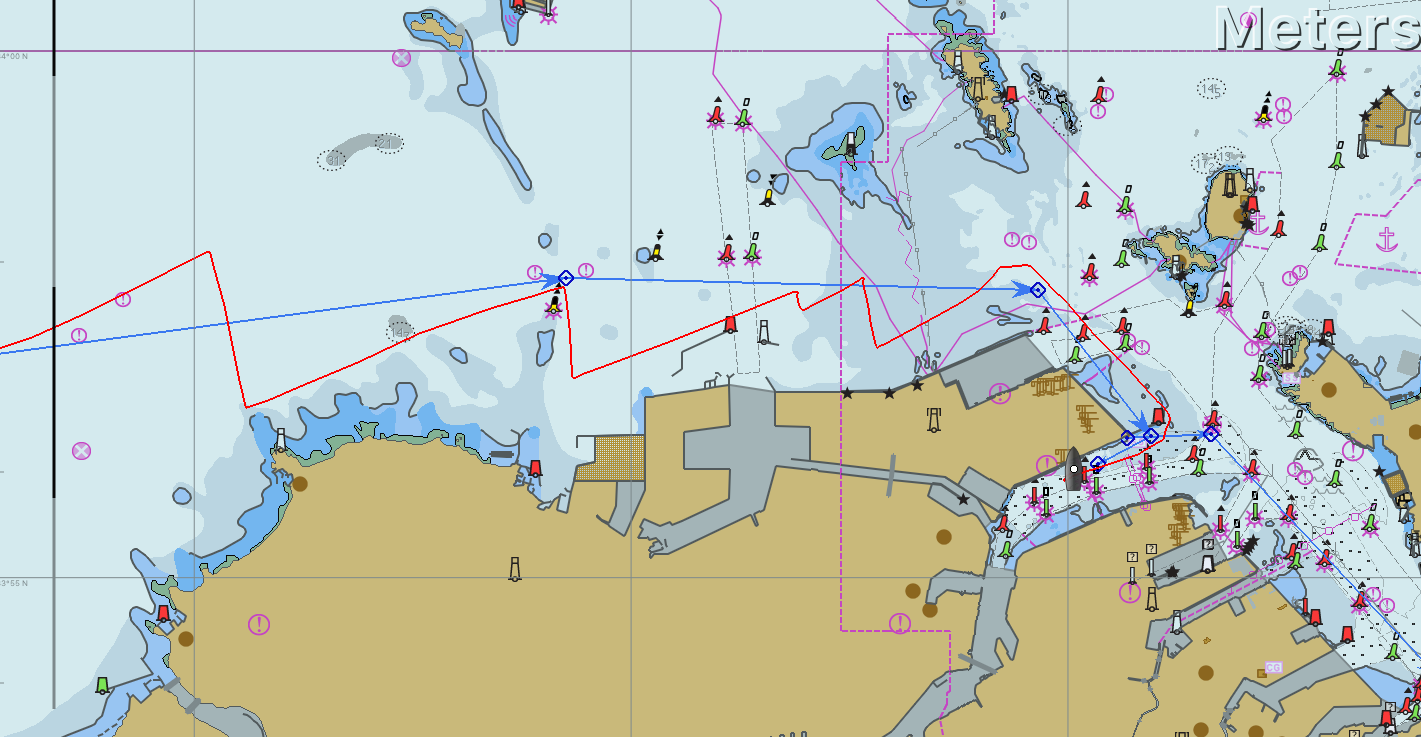 The area was becoming more and more industrialised, and looked like a giant version of Ellesmere port/Stanlow oil refinery where I come from.
The area was becoming more and more industrialised, and looked like a giant version of Ellesmere port/Stanlow oil refinery where I come from. 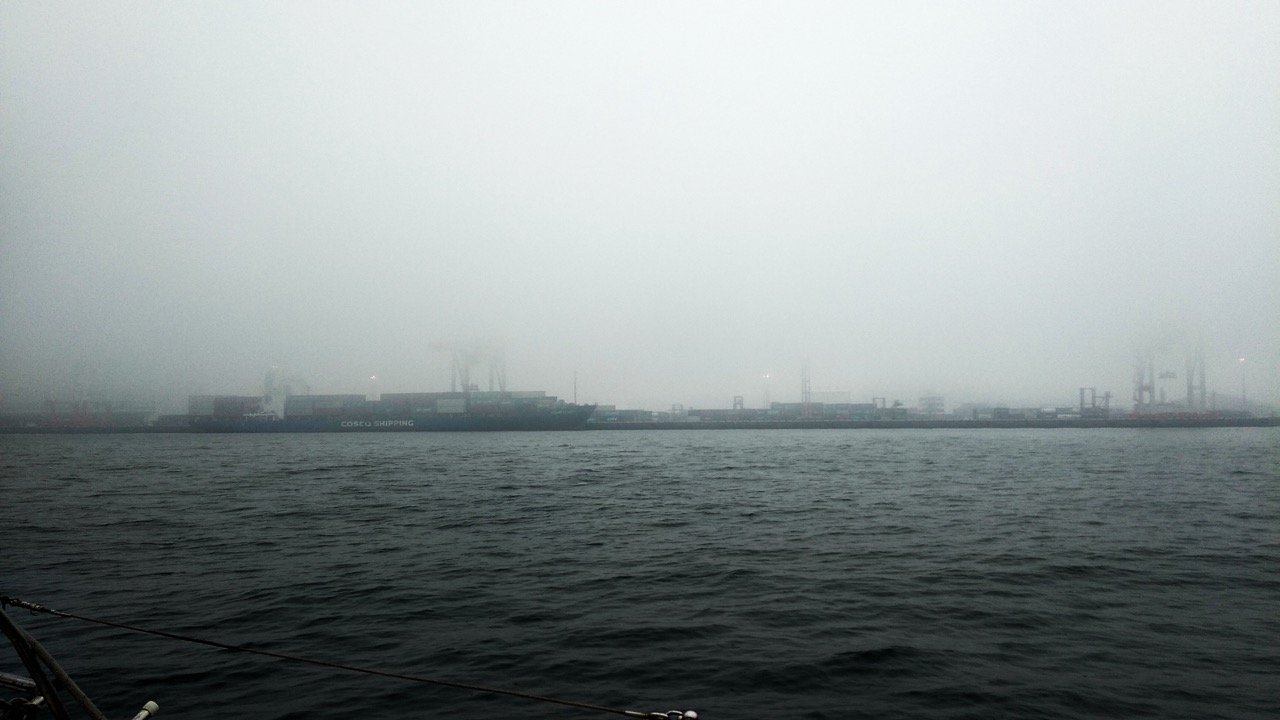 The air was full of sulphurous smoke from the power station on the shore front. I sailed between wind turbines, and while trying to understand what this huge pylon was that I was sailing towards, about 0.2 nm from shore
The air was full of sulphurous smoke from the power station on the shore front. I sailed between wind turbines, and while trying to understand what this huge pylon was that I was sailing towards, about 0.2 nm from shore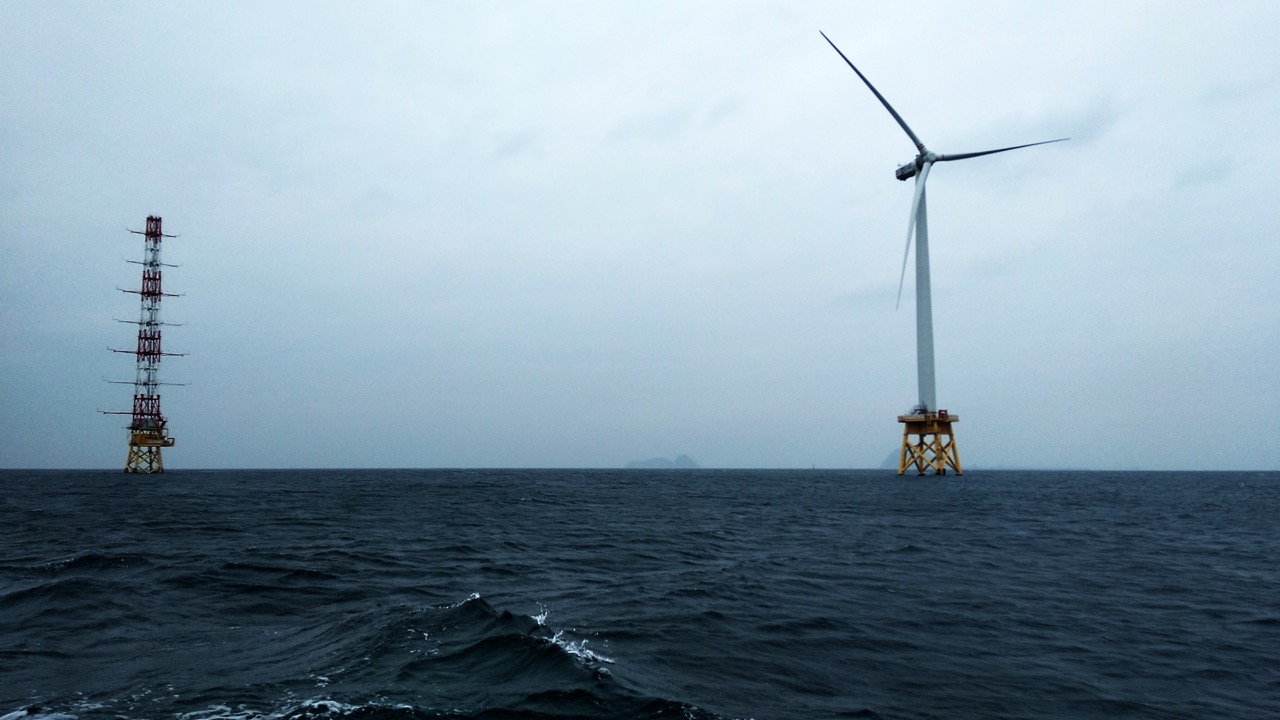 I noticed the chart had printed on it OVERHEAD POWER CABLES, crikey I thought, we’re about to be frizzled, or at best, get the electric toaster working for free. The thing was the pylon didn’t seem to have any wires on it, just a mass of aerials, and looking closer to the shore I could see the aforesaid cables going out to some big round structure off to starboard. so false alarm.
I noticed the chart had printed on it OVERHEAD POWER CABLES, crikey I thought, we’re about to be frizzled, or at best, get the electric toaster working for free. The thing was the pylon didn’t seem to have any wires on it, just a mass of aerials, and looking closer to the shore I could see the aforesaid cables going out to some big round structure off to starboard. so false alarm.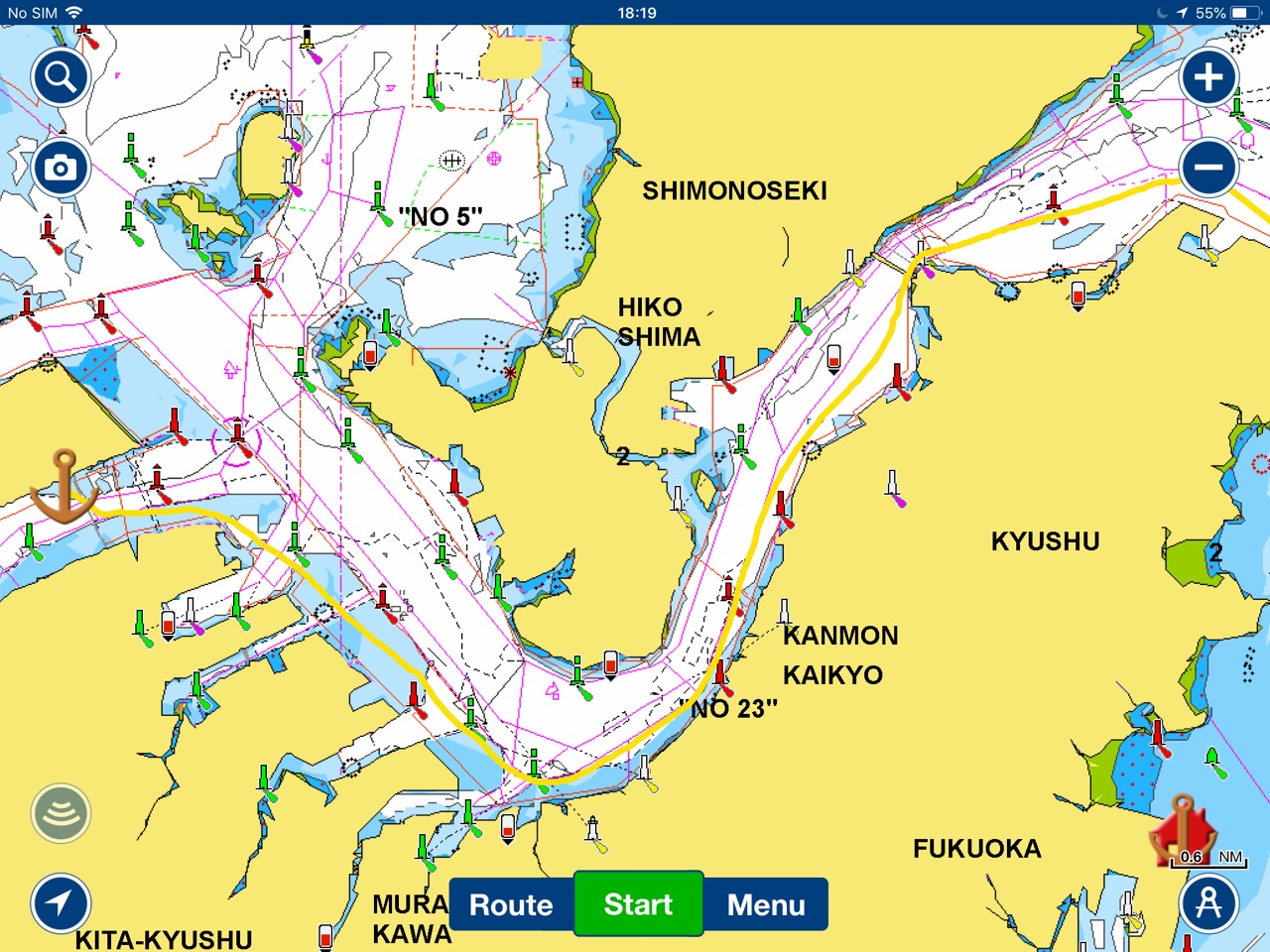 It seemed too rough there to stay, the wind was making the sea quite choppy, but I noticed a coastal cargo ship and a tug attached to a barge both at anchor where I had my waypoint. I went beyond them, turned into the wind, slowed the boat and decided it wasn’t that rough at all, we sleep through much worse on night watches, and the forecast was for an improvement anyway, so down went the hook in 10 metres of water. Kathy came to help with the anchoring, she couldn’t believe me that I was going to anchor in such a rough sea, but once the anchor was set, and we went below, shut the hatches and removed our soaking wet-weather gear, everything was just fine. We both slept very well, the new duvet we bought in Fukuoka, along with the three blankets works well, how very different from just a month ago.
It seemed too rough there to stay, the wind was making the sea quite choppy, but I noticed a coastal cargo ship and a tug attached to a barge both at anchor where I had my waypoint. I went beyond them, turned into the wind, slowed the boat and decided it wasn’t that rough at all, we sleep through much worse on night watches, and the forecast was for an improvement anyway, so down went the hook in 10 metres of water. Kathy came to help with the anchoring, she couldn’t believe me that I was going to anchor in such a rough sea, but once the anchor was set, and we went below, shut the hatches and removed our soaking wet-weather gear, everything was just fine. We both slept very well, the new duvet we bought in Fukuoka, along with the three blankets works well, how very different from just a month ago.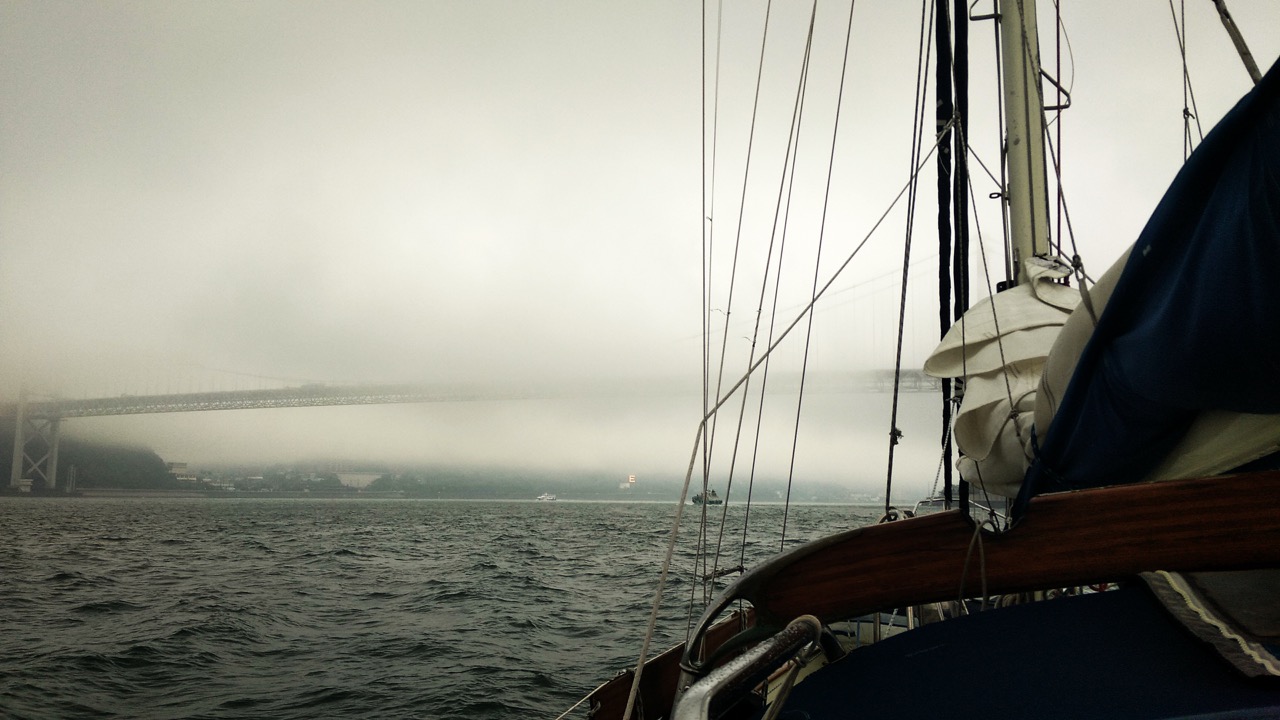
 then 15 minutes later we were in the inland sea proper. A place I had wanted to see for many years.
then 15 minutes later we were in the inland sea proper. A place I had wanted to see for many years. 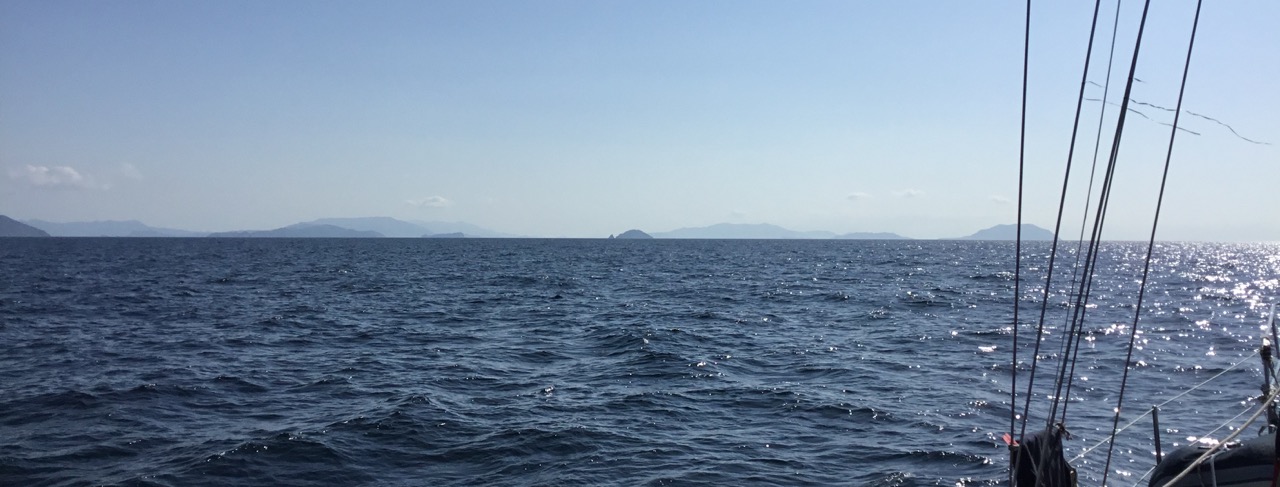 Unfortunately during our passage along the strait, the fog and rain returned, this is normal in Japan at this time of year, and so I wasn’t seeing much at all, Kathy maintained AIS watch, and I looked out for small boats from the helm. What disappointed me was the huge amount of fishing buoys/flags we encountered, I presume they have nets strung between them. They are everywhere, and although they don’t present much of a problem to us, due to the underwater shape of our hull with an enclosed propeller, it’s still a fear we might snag one, or have to deal with a fisherman who insists we go around them. Our charts show lots of Fish Havens,
Unfortunately during our passage along the strait, the fog and rain returned, this is normal in Japan at this time of year, and so I wasn’t seeing much at all, Kathy maintained AIS watch, and I looked out for small boats from the helm. What disappointed me was the huge amount of fishing buoys/flags we encountered, I presume they have nets strung between them. They are everywhere, and although they don’t present much of a problem to us, due to the underwater shape of our hull with an enclosed propeller, it’s still a fear we might snag one, or have to deal with a fisherman who insists we go around them. Our charts show lots of Fish Havens, 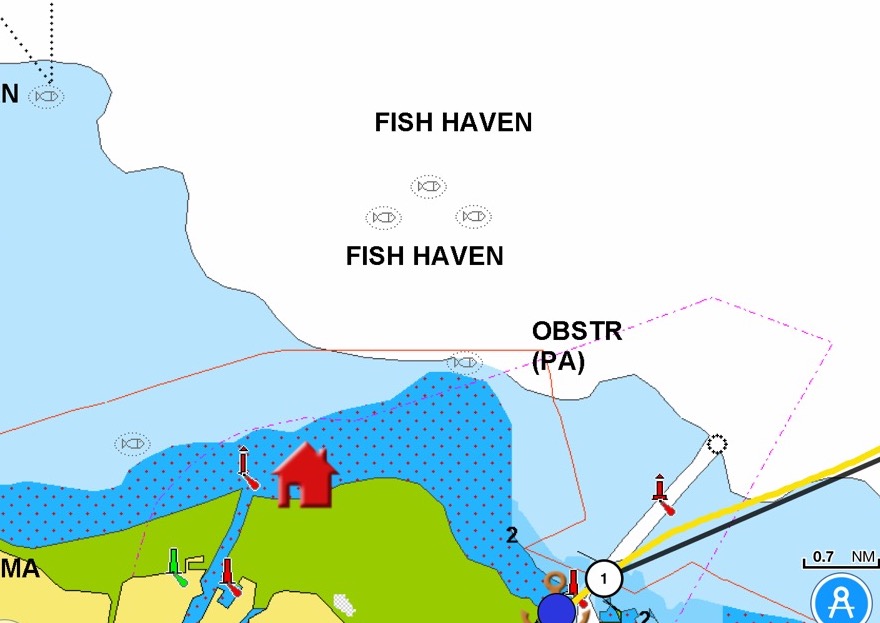 which back home usually is a place where fishing is strictly banned, I presume to allow stocks to recover. Here it seems to be a place where you can fish and string out loads of nets. Interestingly our charts also shows Fish Heavens
which back home usually is a place where fishing is strictly banned, I presume to allow stocks to recover. Here it seems to be a place where you can fish and string out loads of nets. Interestingly our charts also shows Fish Heavens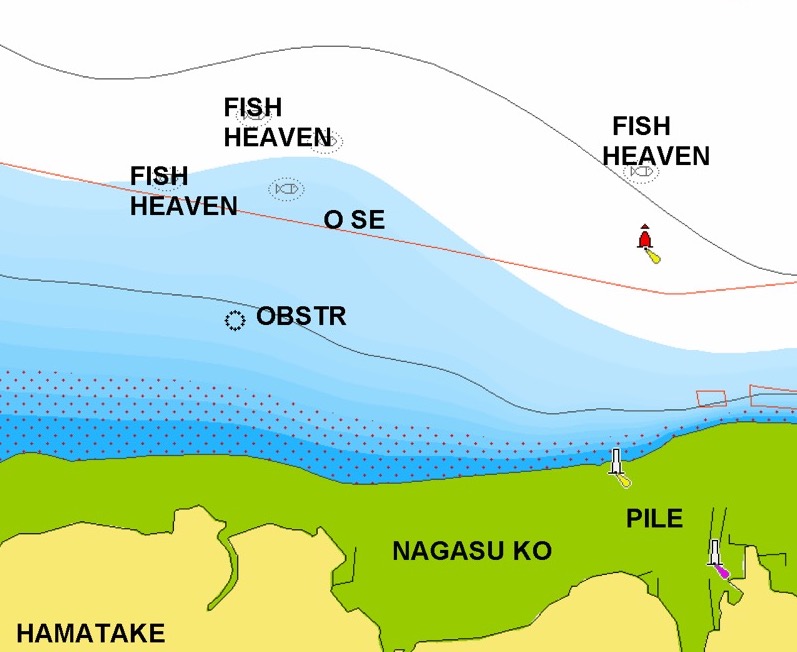
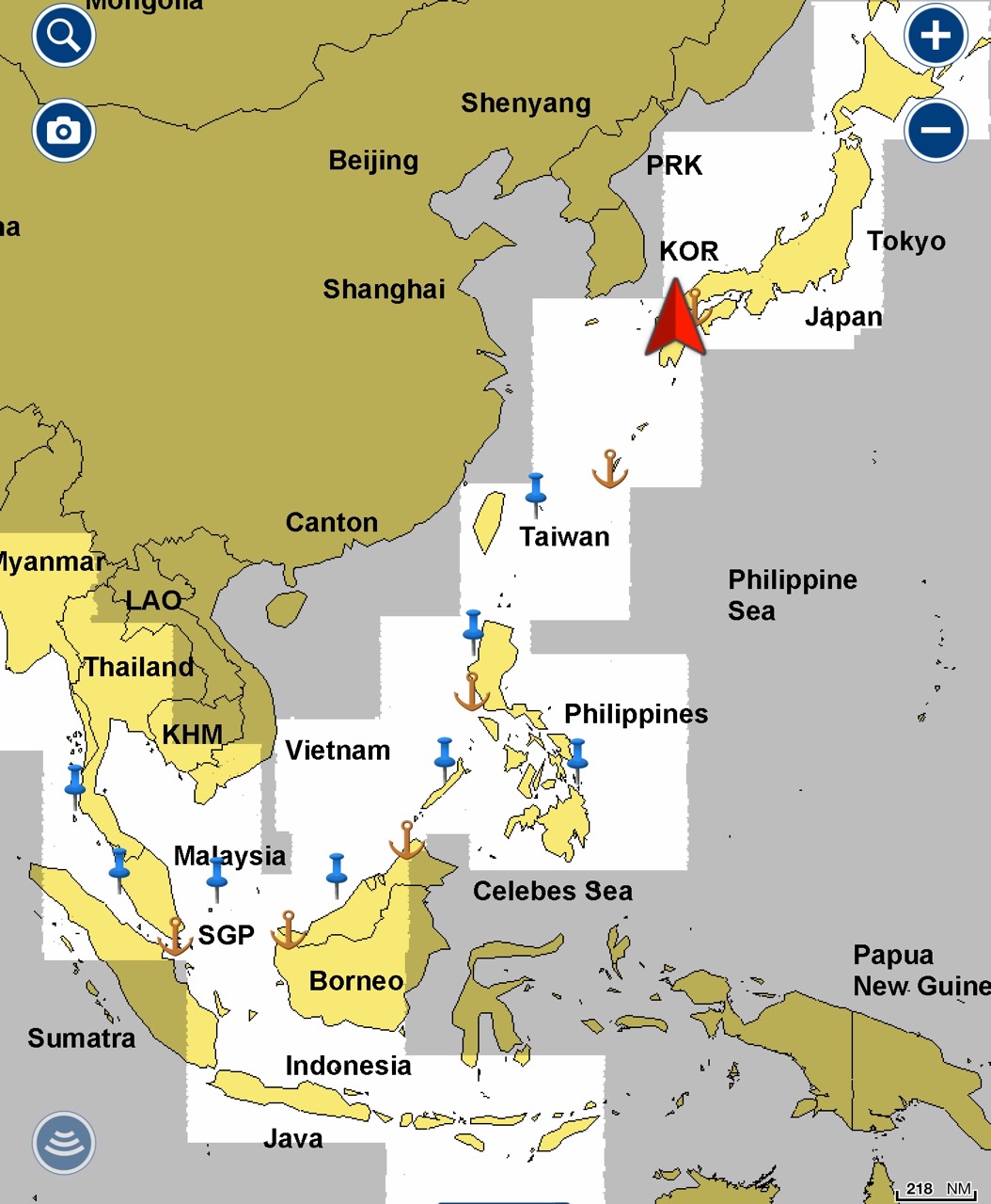
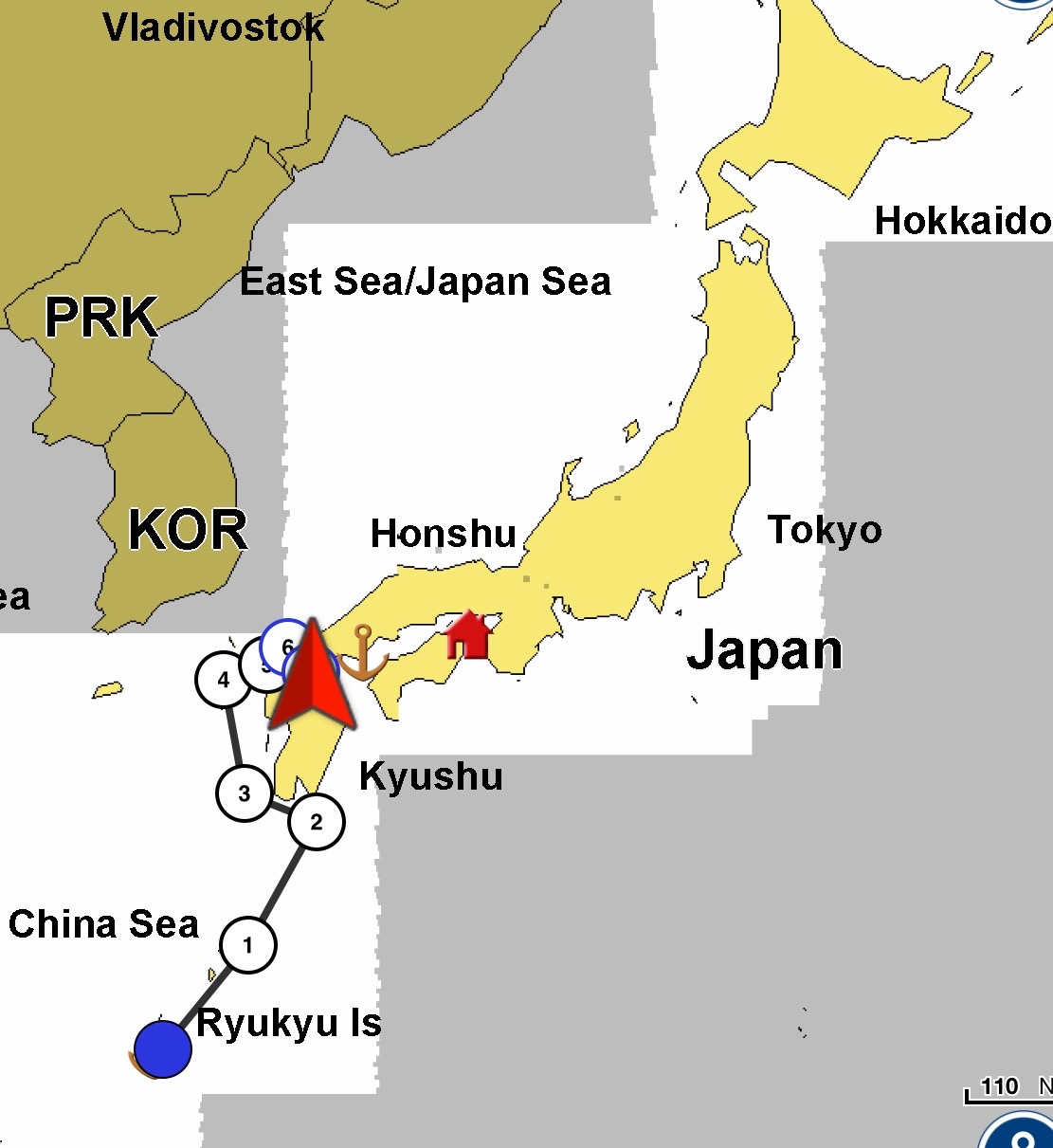
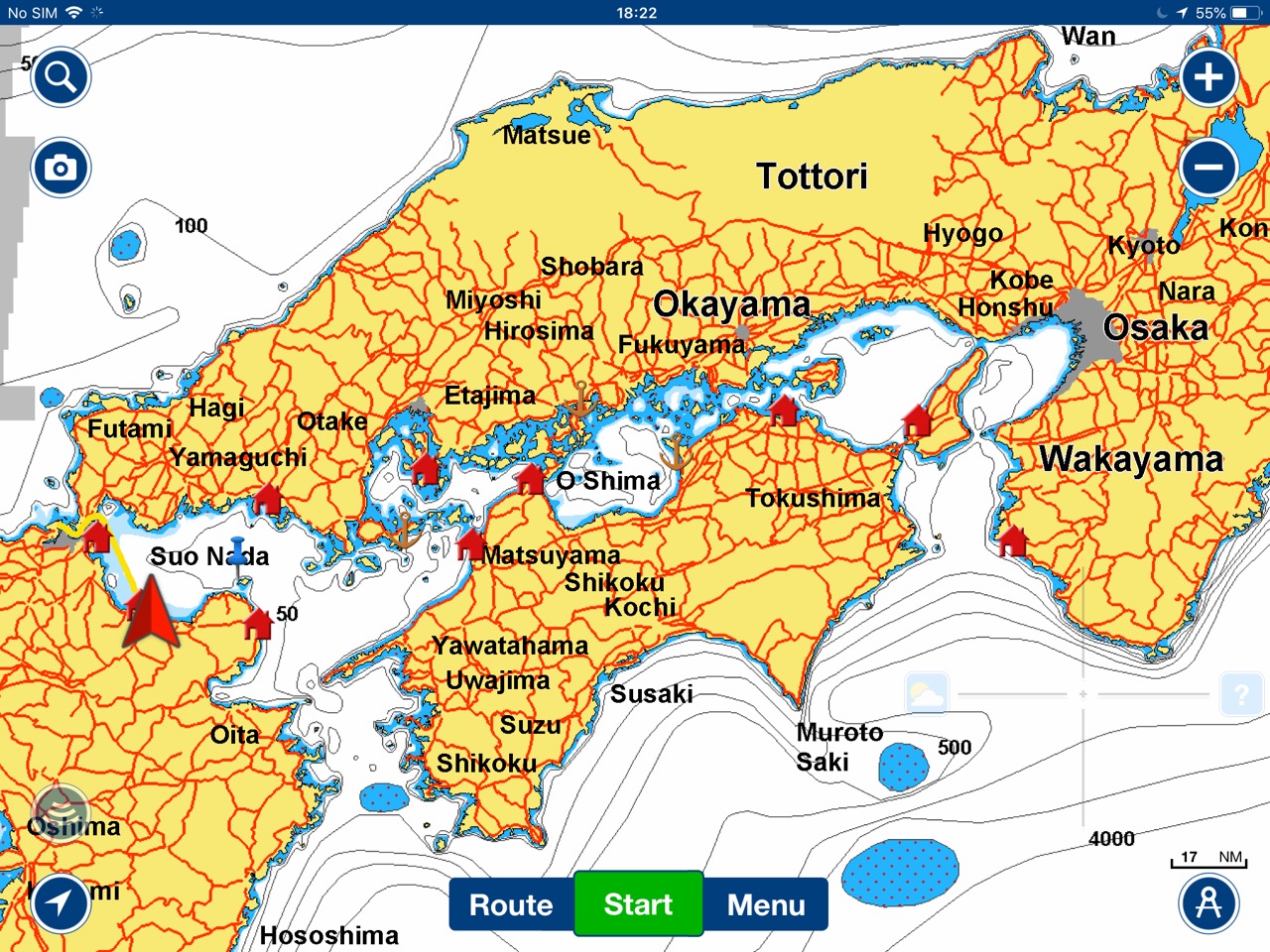
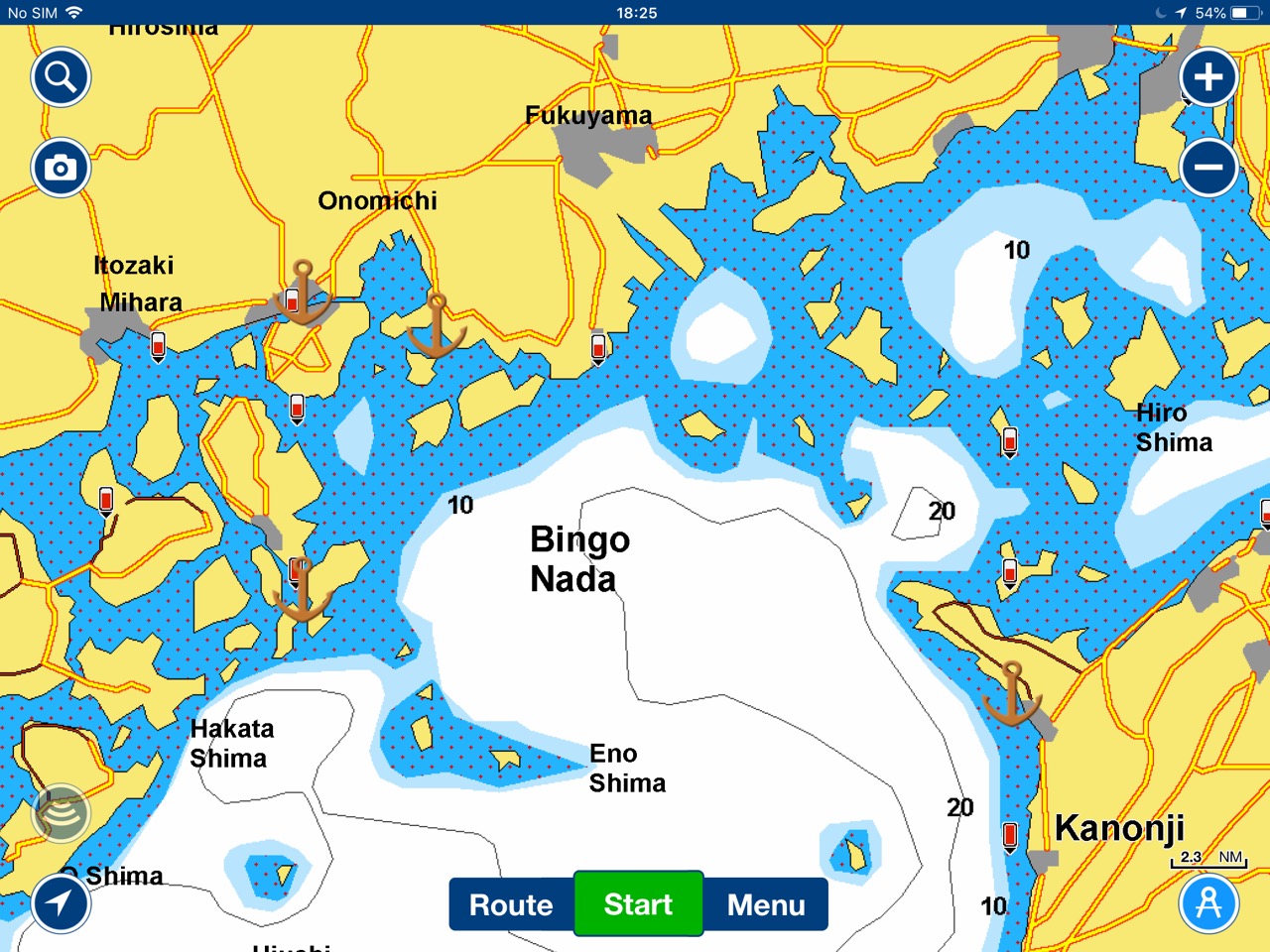
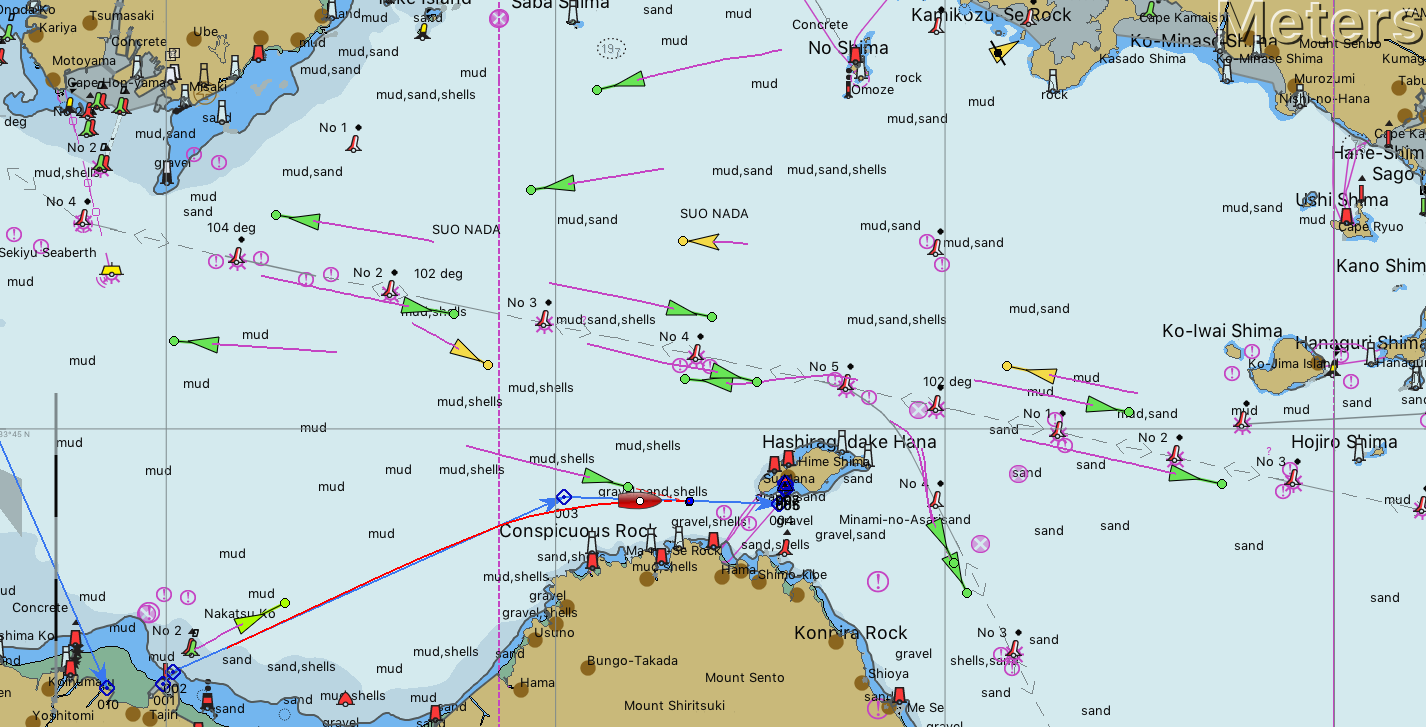
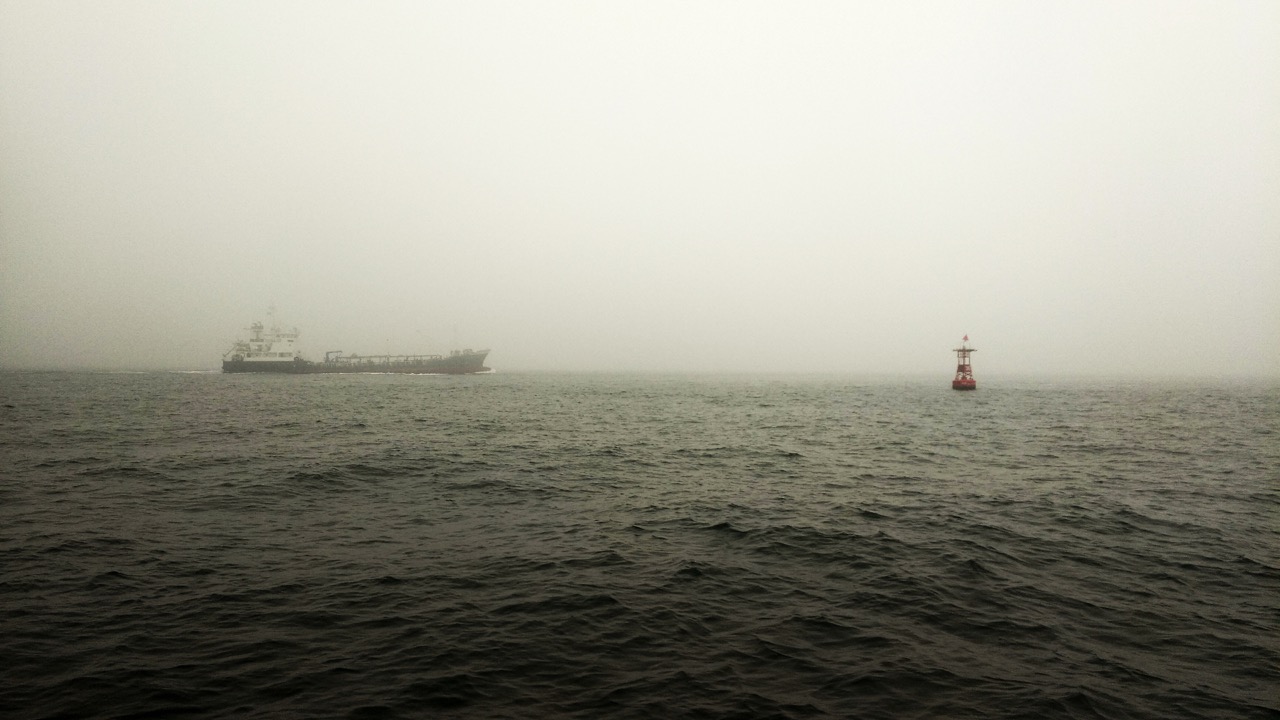
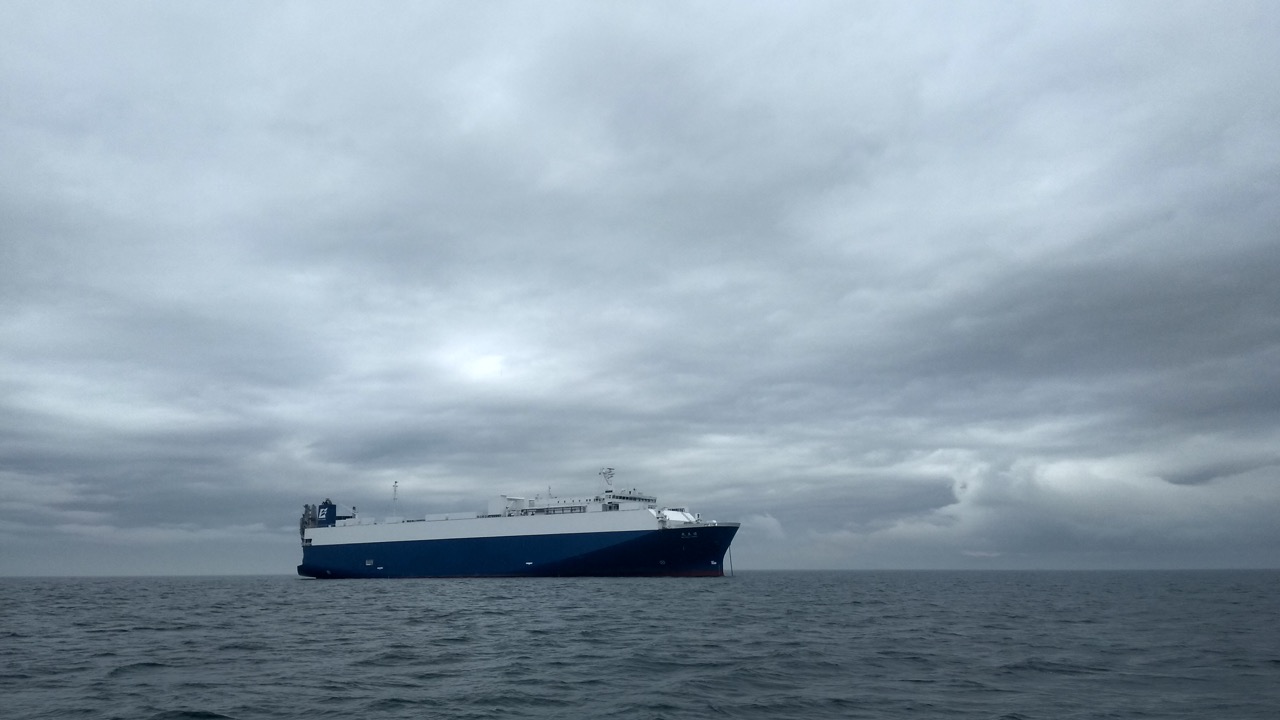
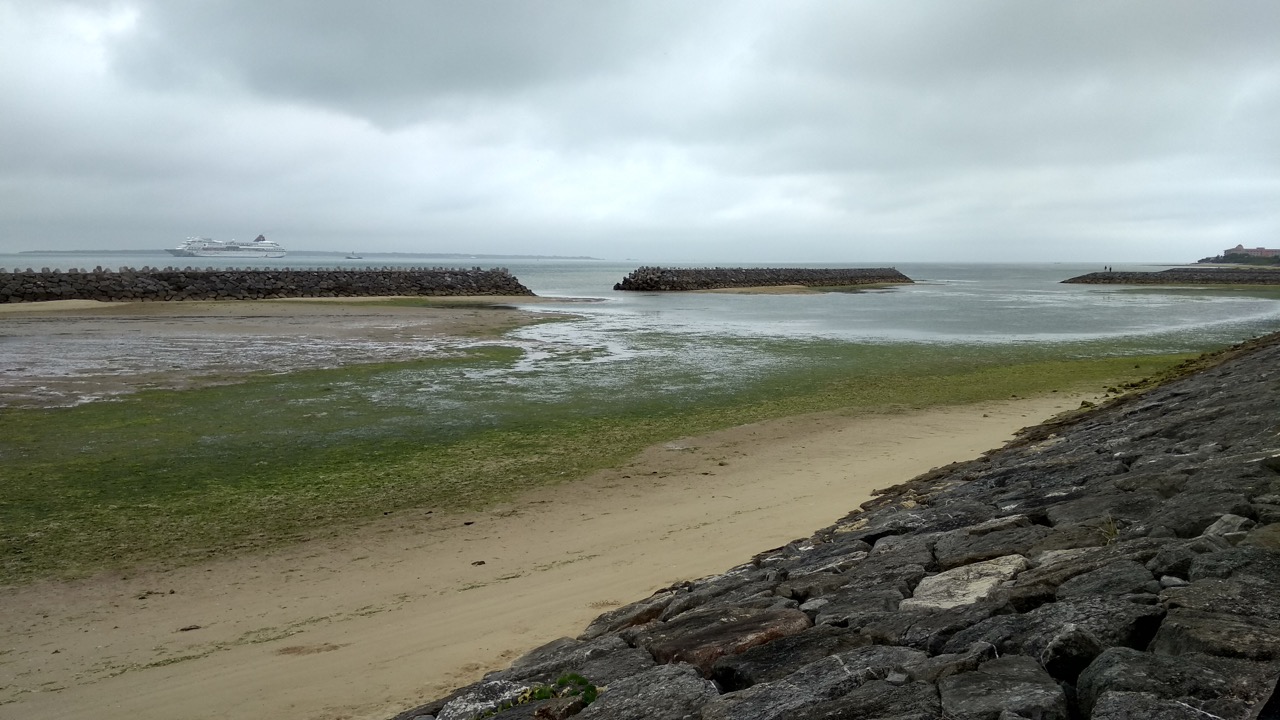
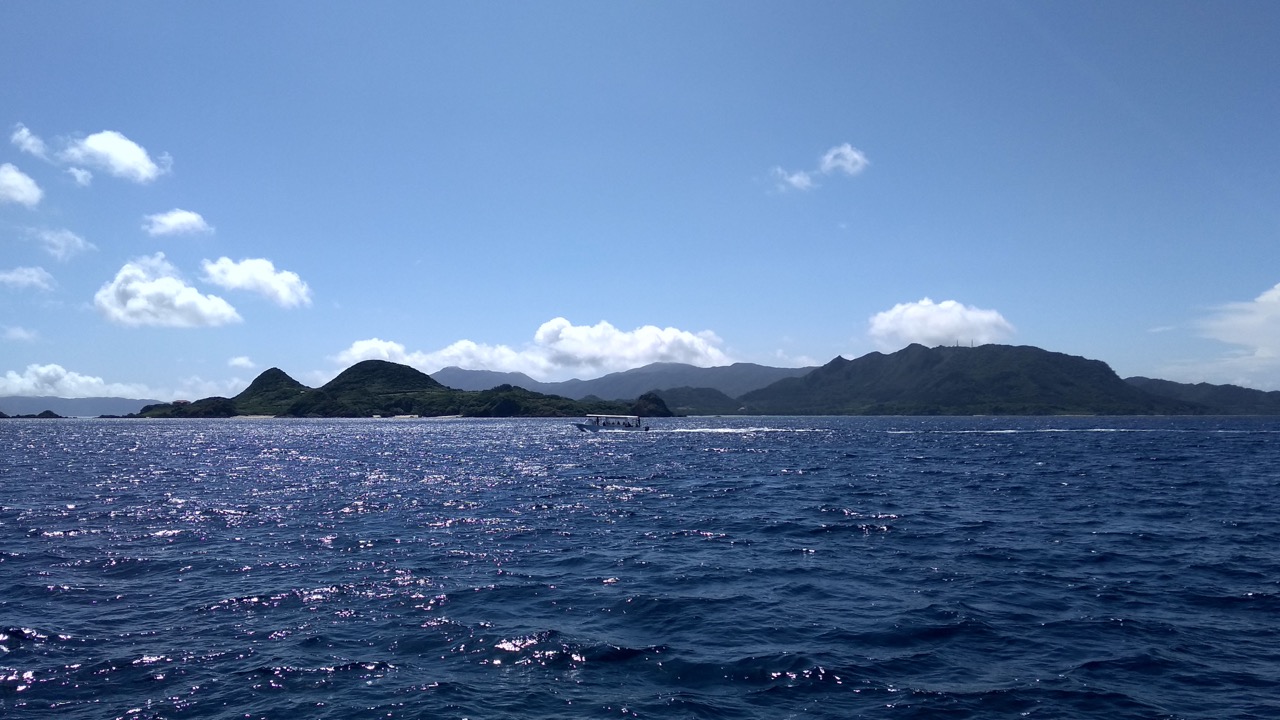
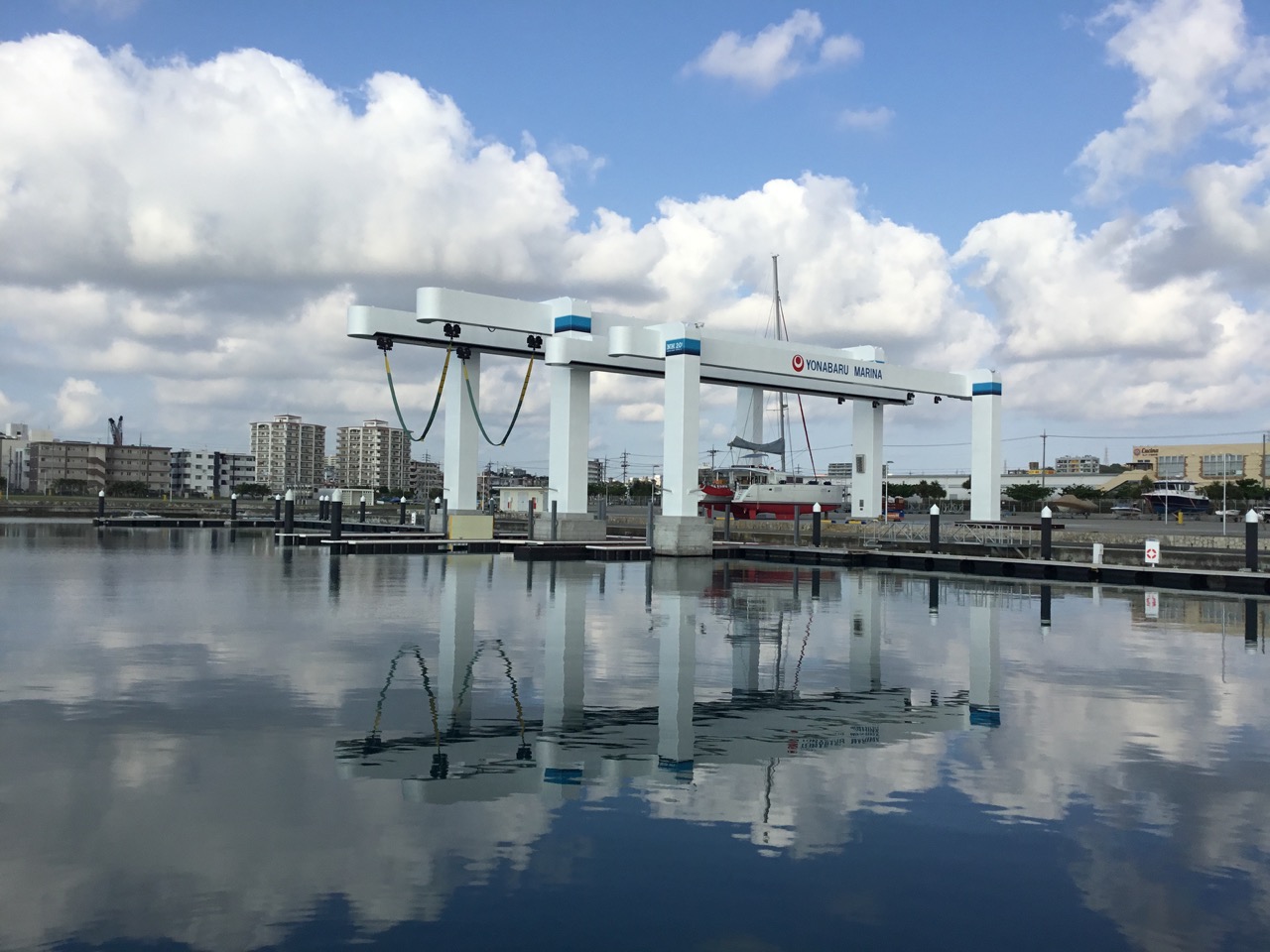
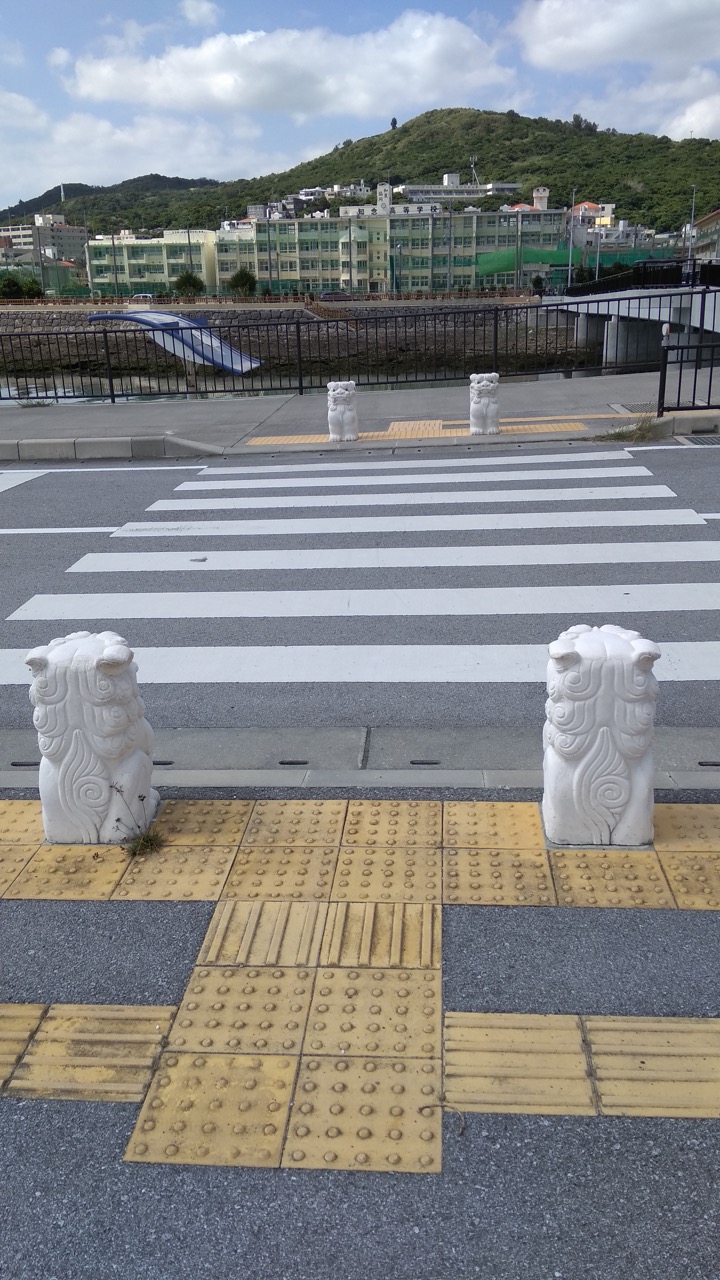
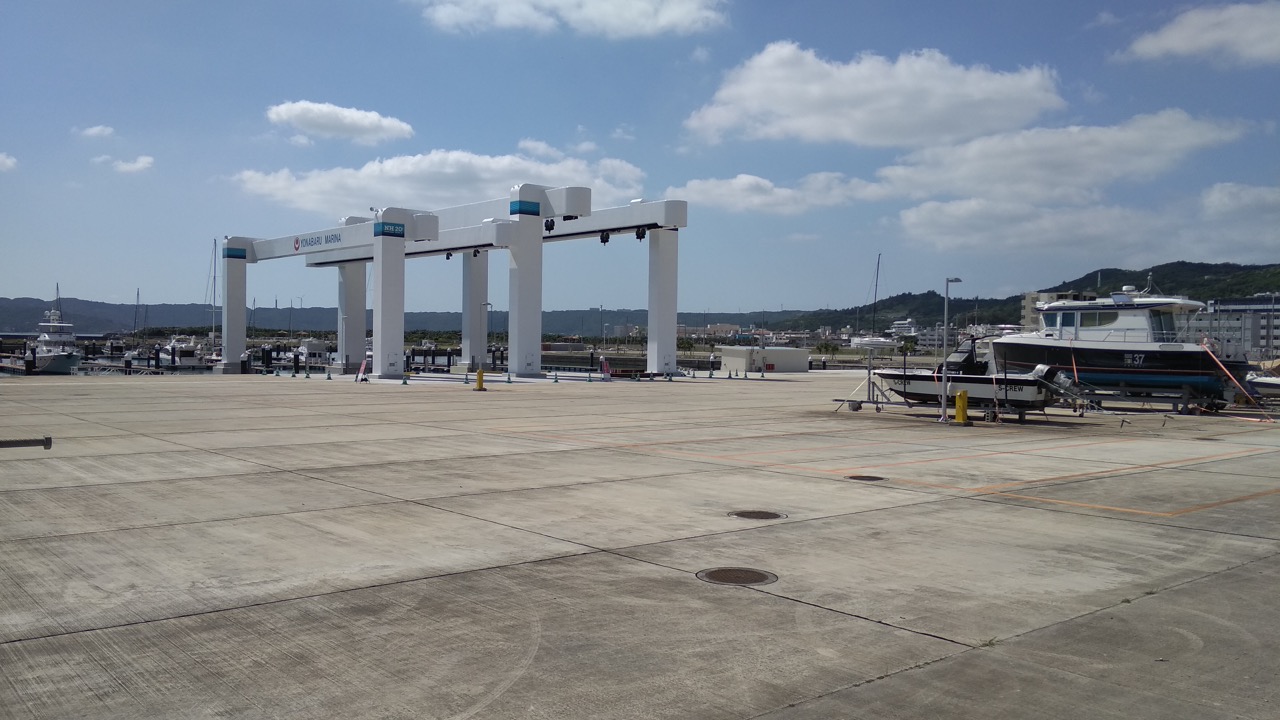
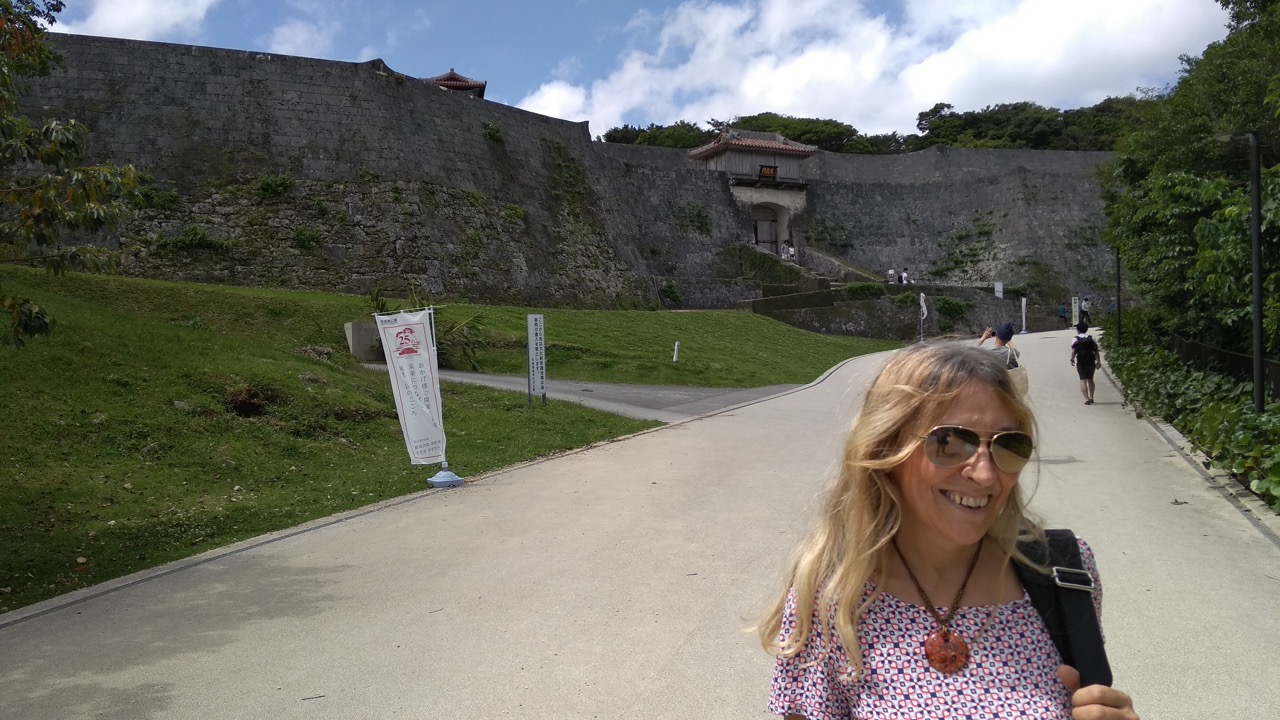
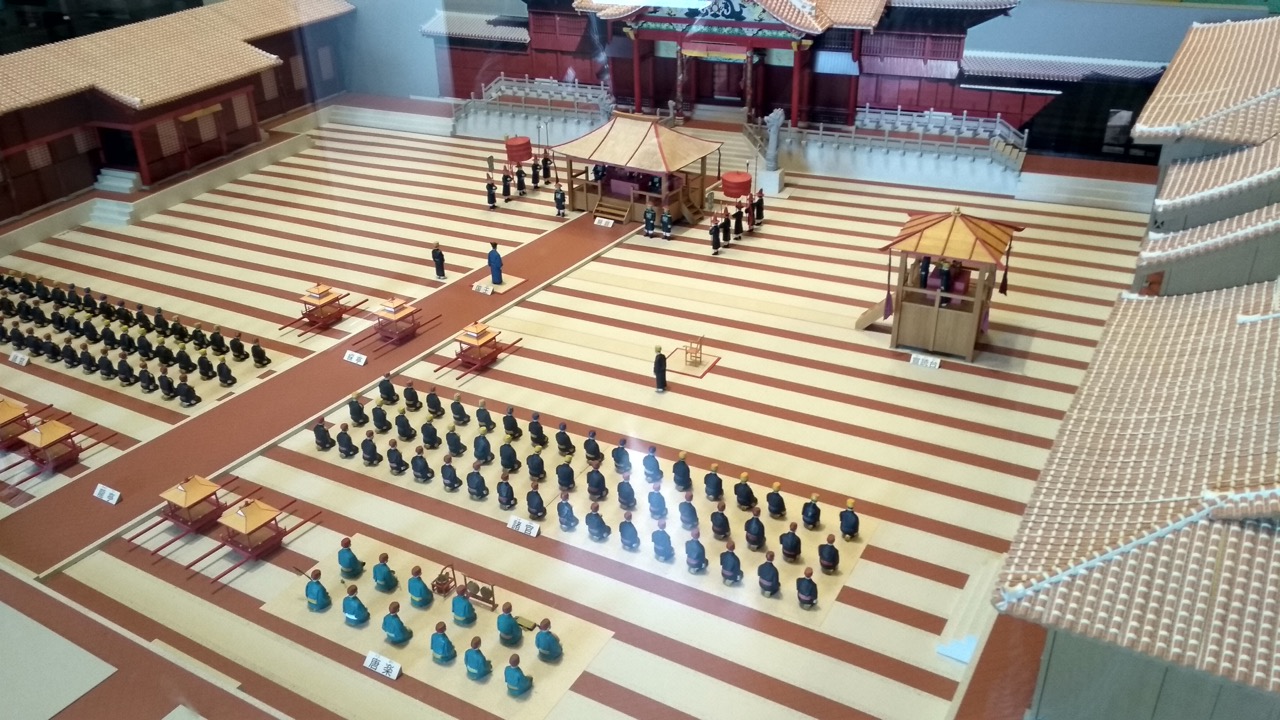 Some nice architecture, disguising the fact that most buildings here on the islands are made of chunky concrete, and tend to be very boxy, designed for earthquakes and tsunamis
Some nice architecture, disguising the fact that most buildings here on the islands are made of chunky concrete, and tend to be very boxy, designed for earthquakes and tsunamis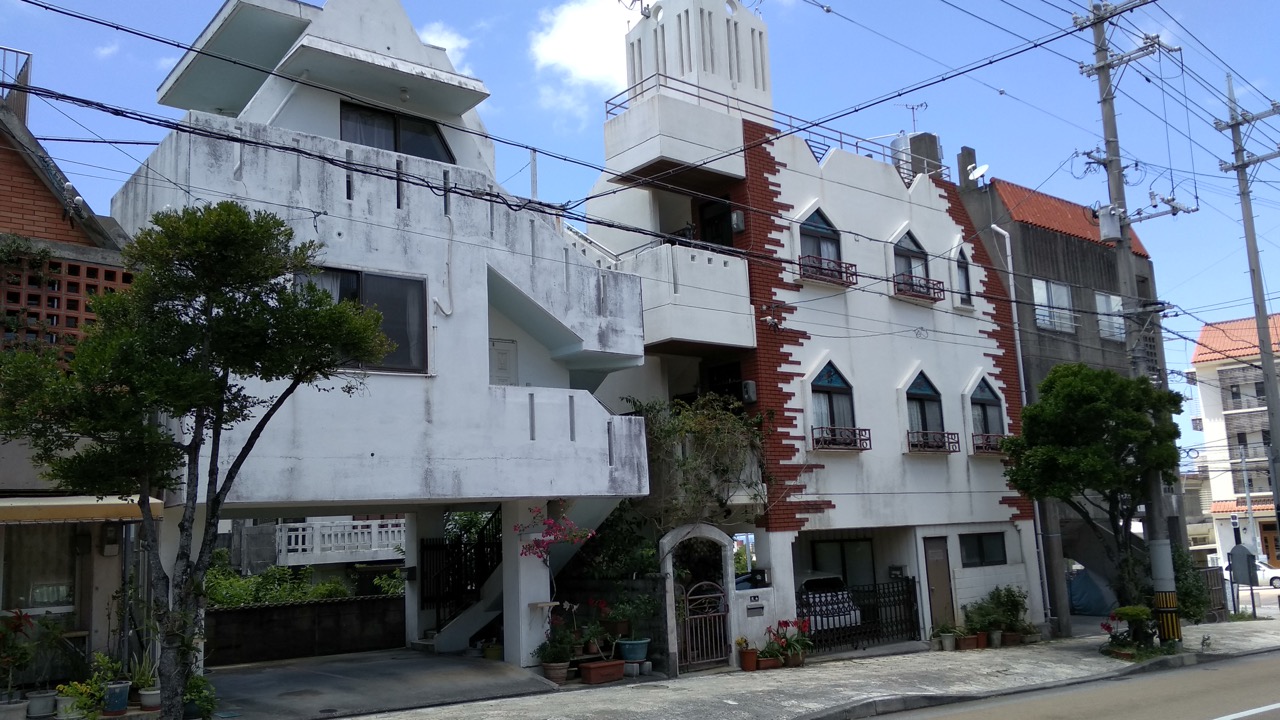
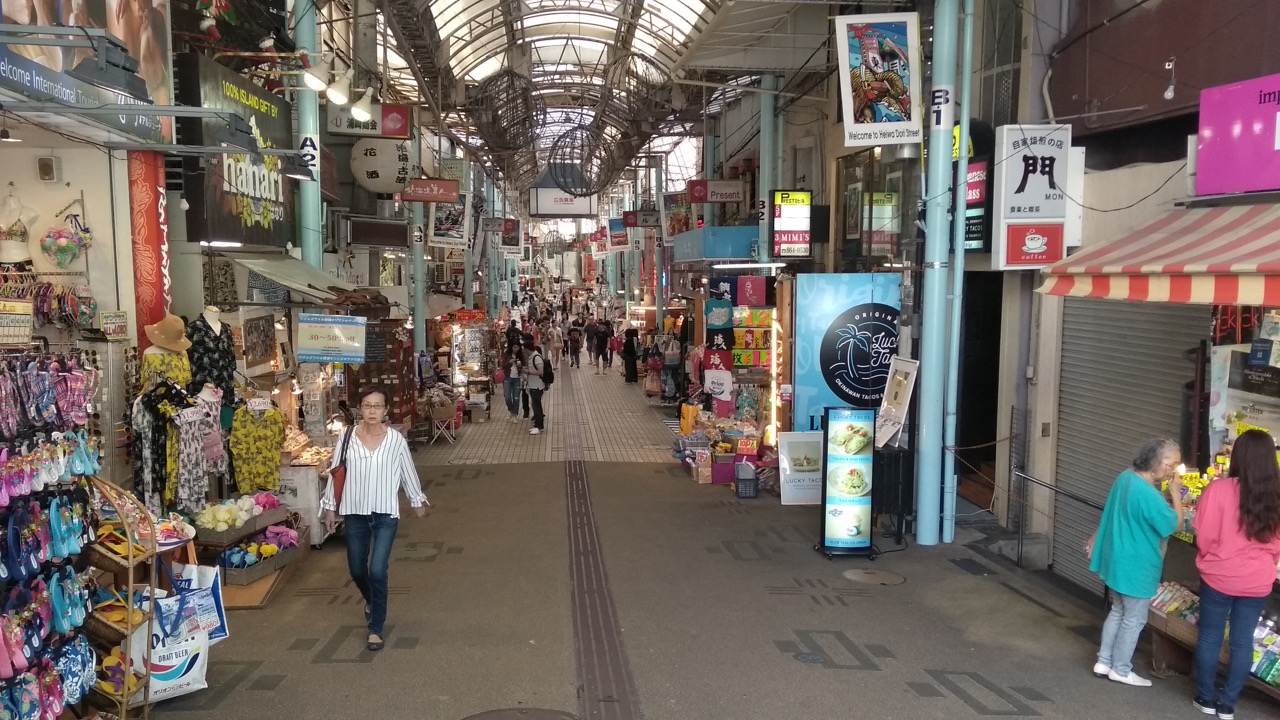
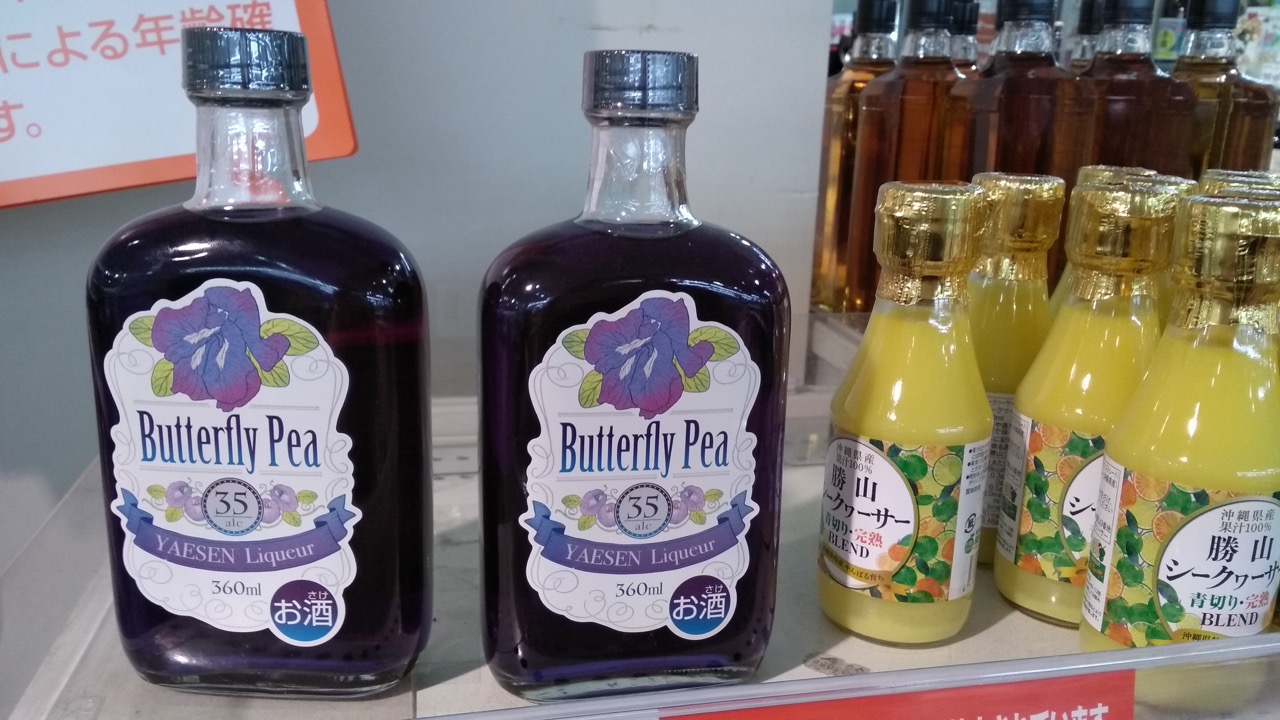
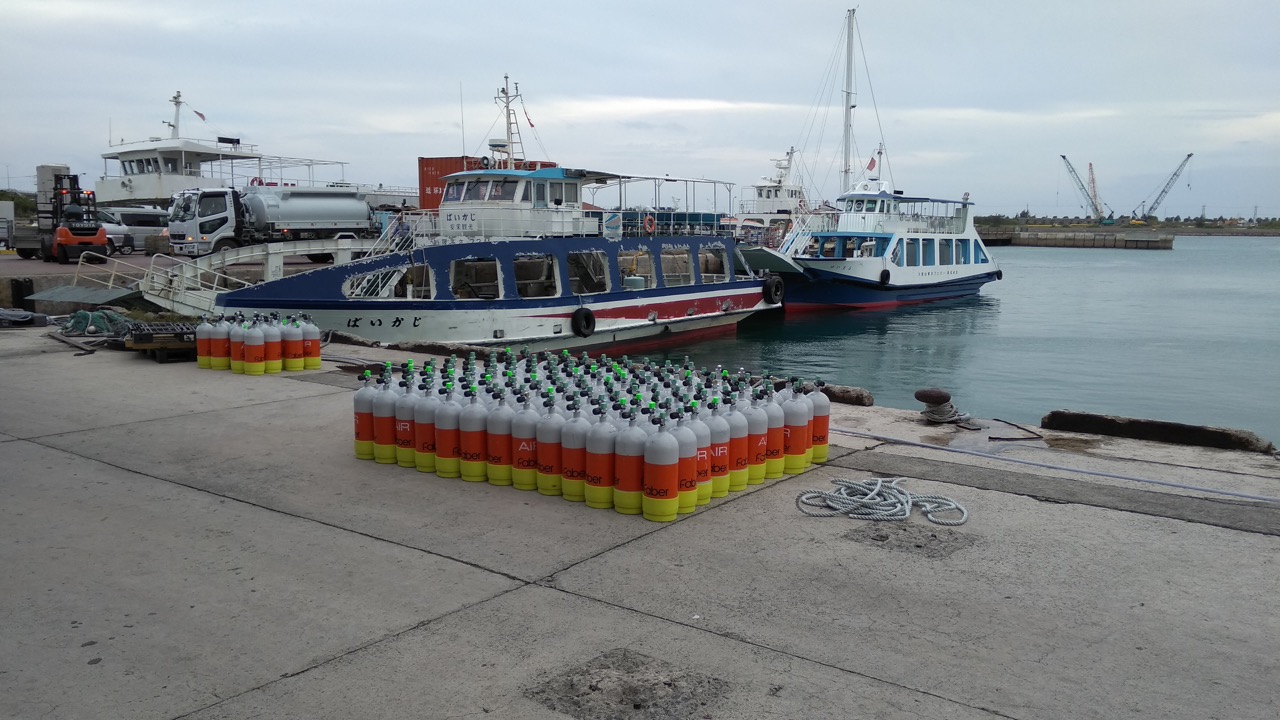 From Okinawa we headed up to Miyanoura, a nice port on the island of Yaku-shima, This is a gorgeous island full of wonderful mountains, forests, hot springs, wildlife etc etc. We were running a day late because the previous marina here couldn’t accept us when we planned, due to being closed on Tuesdays! When we arrived we tied up to the only wall we could find, but it was very rough and high, and had a lip that the boat would slip under at low water, so I tied up, took another hit on the cap rail, fortunately on the section I need to replace, but I also lost the bow light (port) when a wave threw us onto the wall. I headed off to explore the port for a better berth and was directed to an inner harbour I hadn’t even seen when we entered by a local fisherman. You can see us on the wall below. We need 6 feet of water to stay afloat, the local fisherman looked worried when I said 2 m water, he shrugged and indicated ‘maybe’. The tide was going to drop by another metre so I took out the lead-line and measured around the boat, on the quay side we had 1.5 metres, on the offshore side we had 3.5 metres, so I figured we might just make it. In the end we didnt touch bottom, but must have been close.
From Okinawa we headed up to Miyanoura, a nice port on the island of Yaku-shima, This is a gorgeous island full of wonderful mountains, forests, hot springs, wildlife etc etc. We were running a day late because the previous marina here couldn’t accept us when we planned, due to being closed on Tuesdays! When we arrived we tied up to the only wall we could find, but it was very rough and high, and had a lip that the boat would slip under at low water, so I tied up, took another hit on the cap rail, fortunately on the section I need to replace, but I also lost the bow light (port) when a wave threw us onto the wall. I headed off to explore the port for a better berth and was directed to an inner harbour I hadn’t even seen when we entered by a local fisherman. You can see us on the wall below. We need 6 feet of water to stay afloat, the local fisherman looked worried when I said 2 m water, he shrugged and indicated ‘maybe’. The tide was going to drop by another metre so I took out the lead-line and measured around the boat, on the quay side we had 1.5 metres, on the offshore side we had 3.5 metres, so I figured we might just make it. In the end we didnt touch bottom, but must have been close.
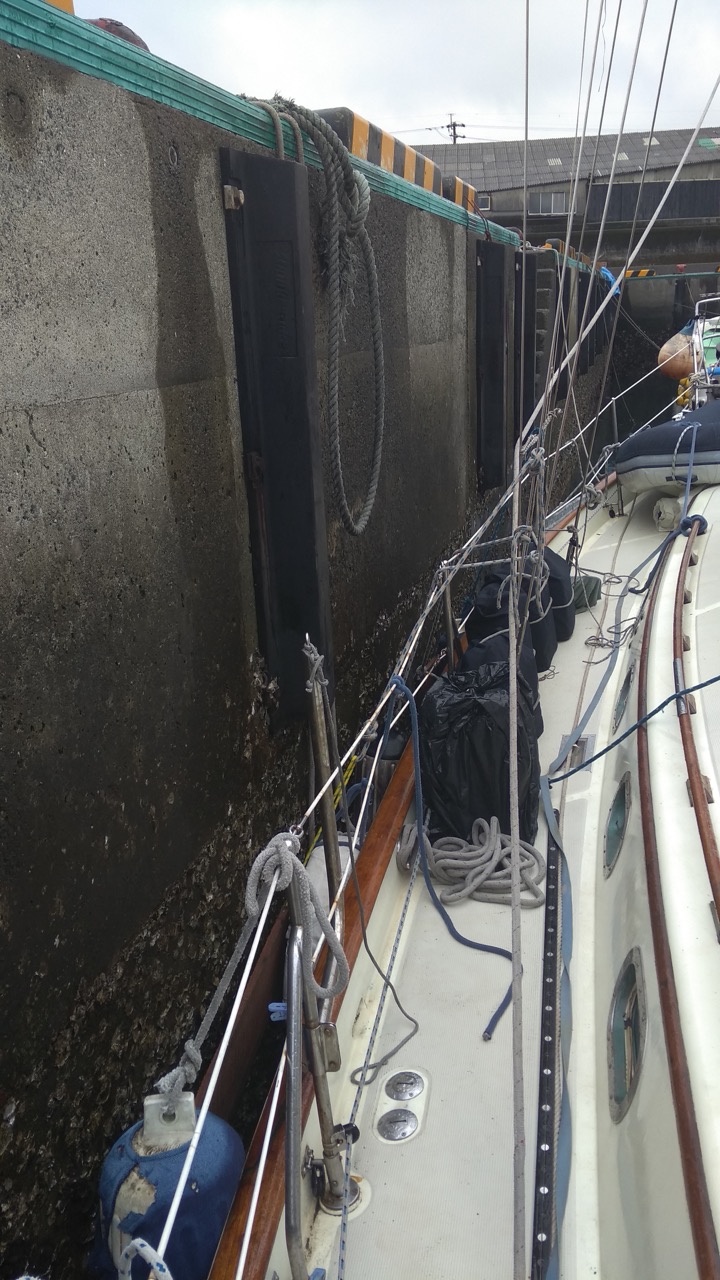 The wall we were now on was much kinder, and you can see below how we rig up the fender boards to protect the boat and fenders
The wall we were now on was much kinder, and you can see below how we rig up the fender boards to protect the boat and fenders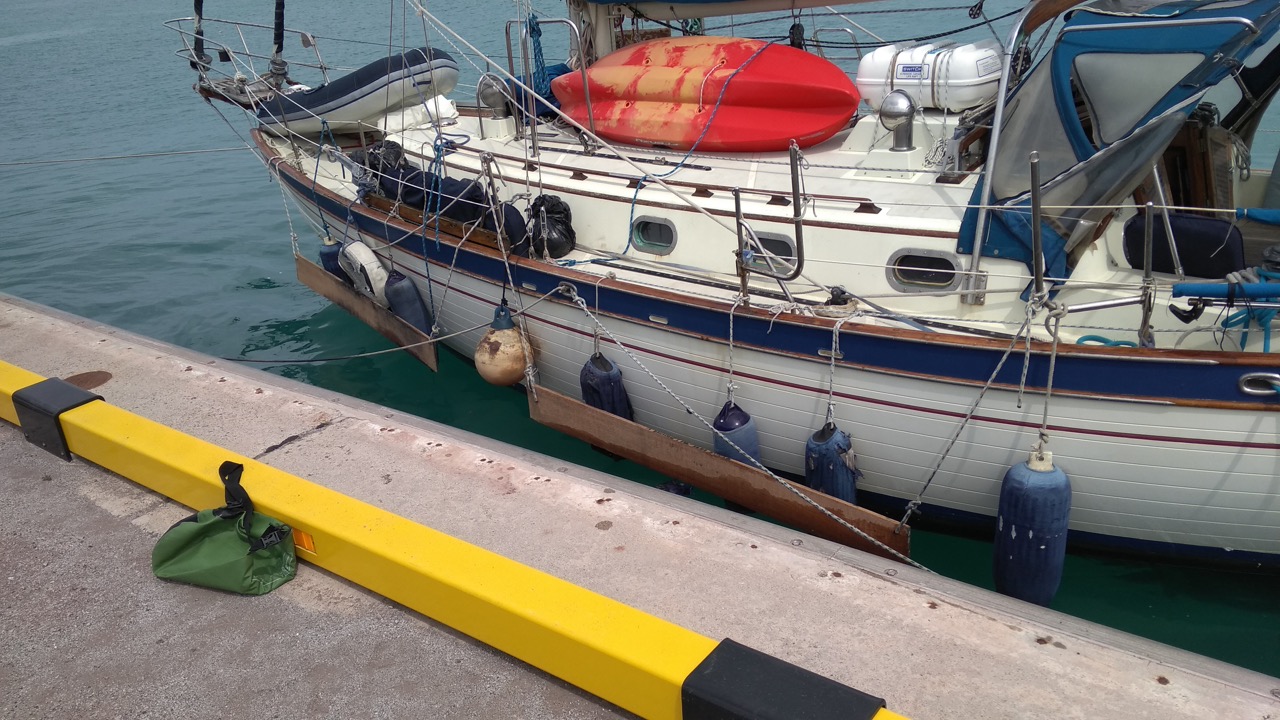
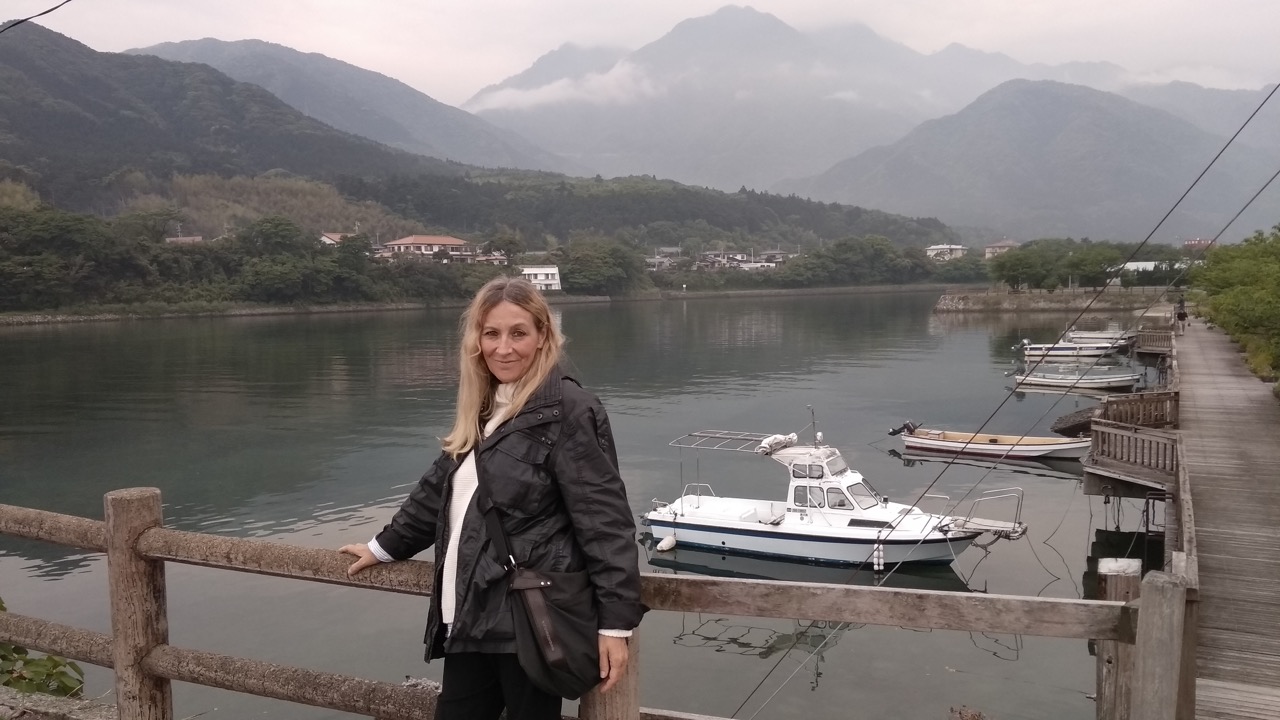
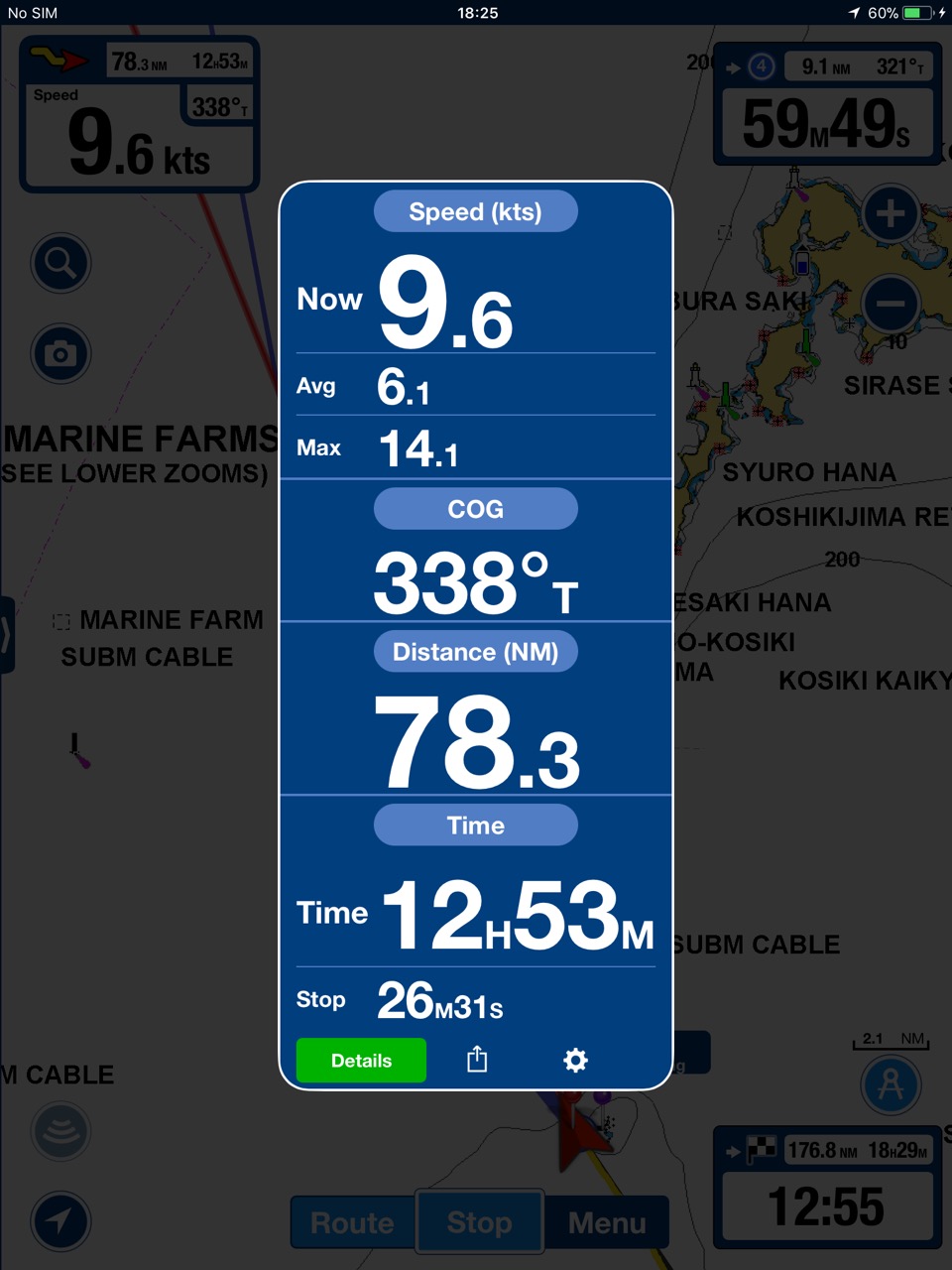
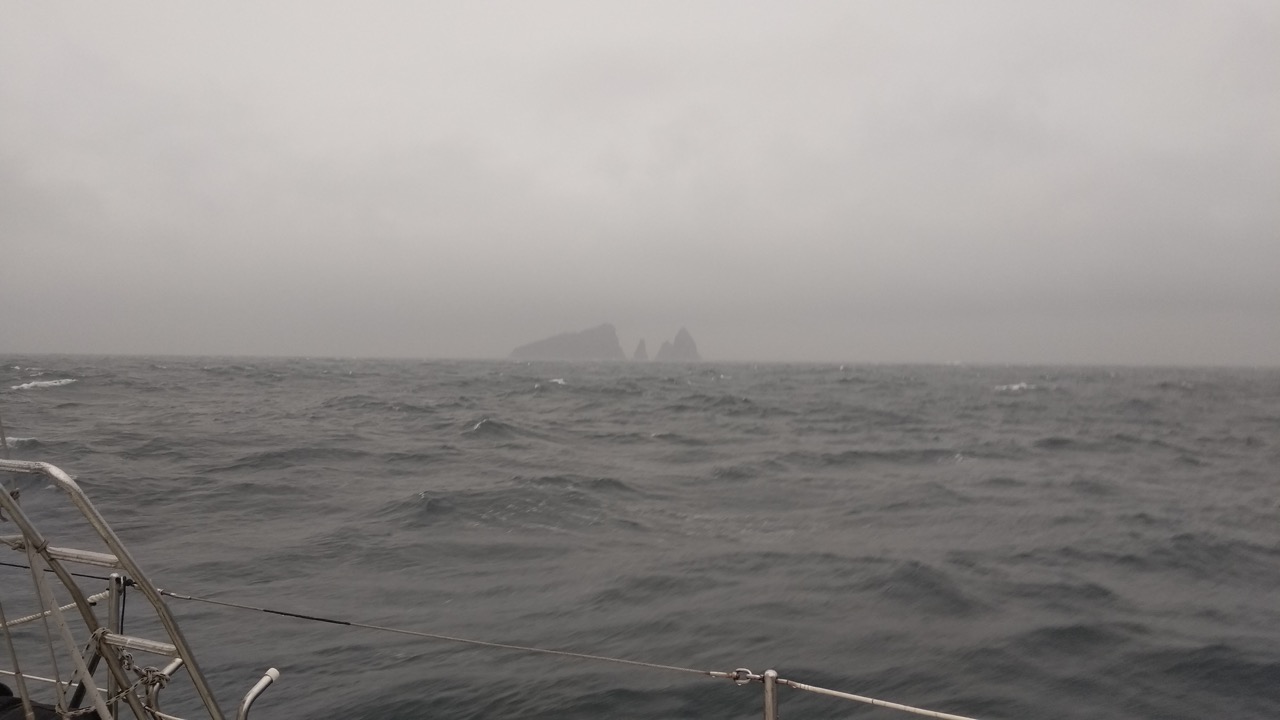
 We passed many islands, often uninhabited, but this one stank of sulphur, so I presume it’s still an active volcano.
We passed many islands, often uninhabited, but this one stank of sulphur, so I presume it’s still an active volcano.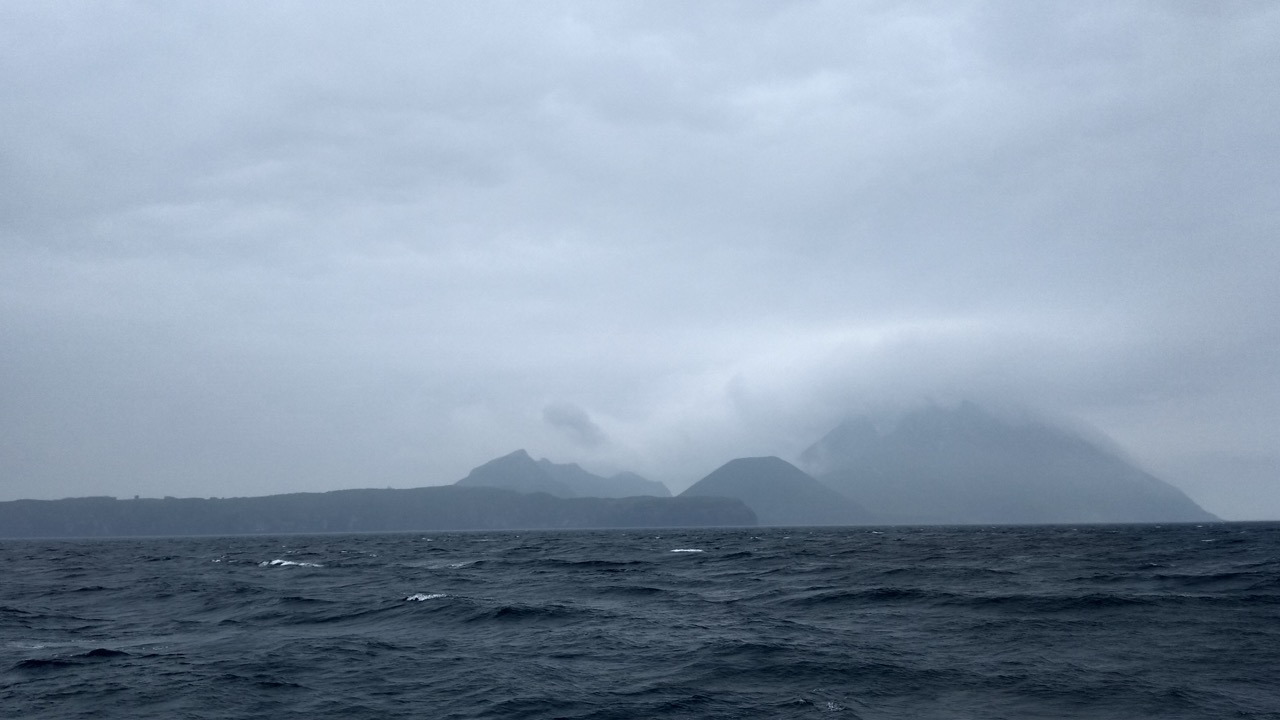
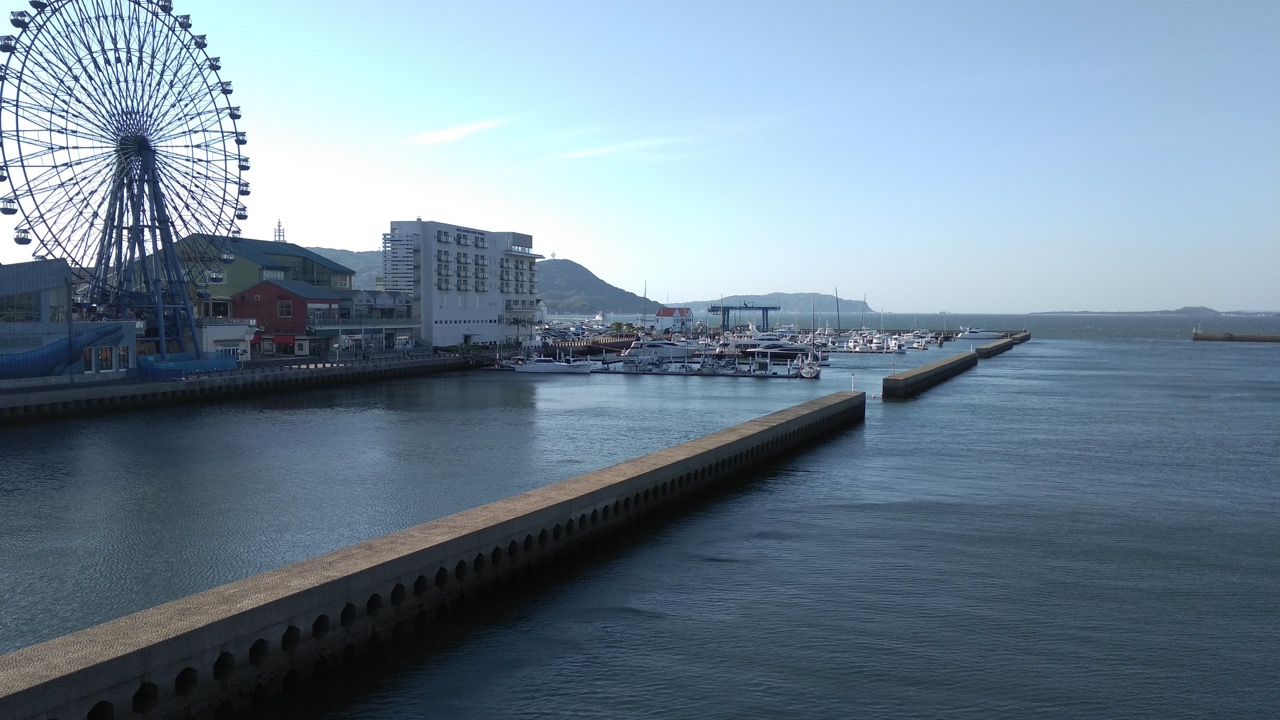 The marina above is next to a big wheel, which is part of a huge outlet mall.
The marina above is next to a big wheel, which is part of a huge outlet mall.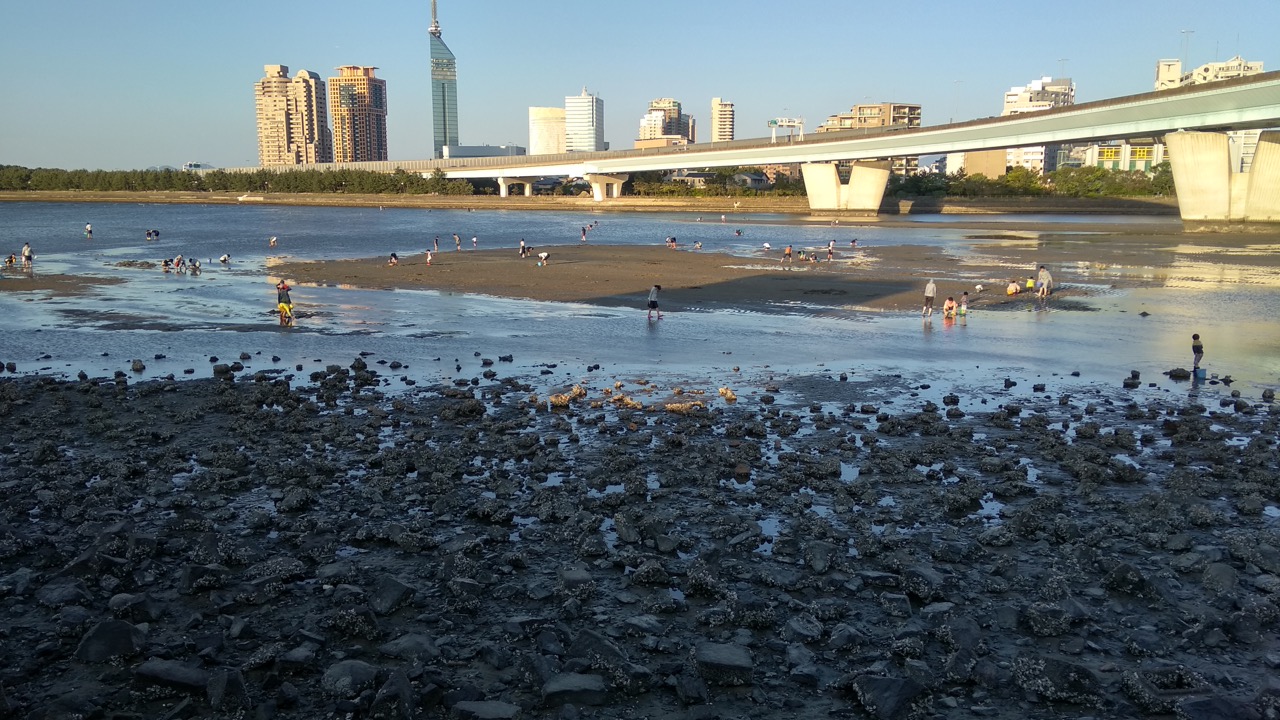
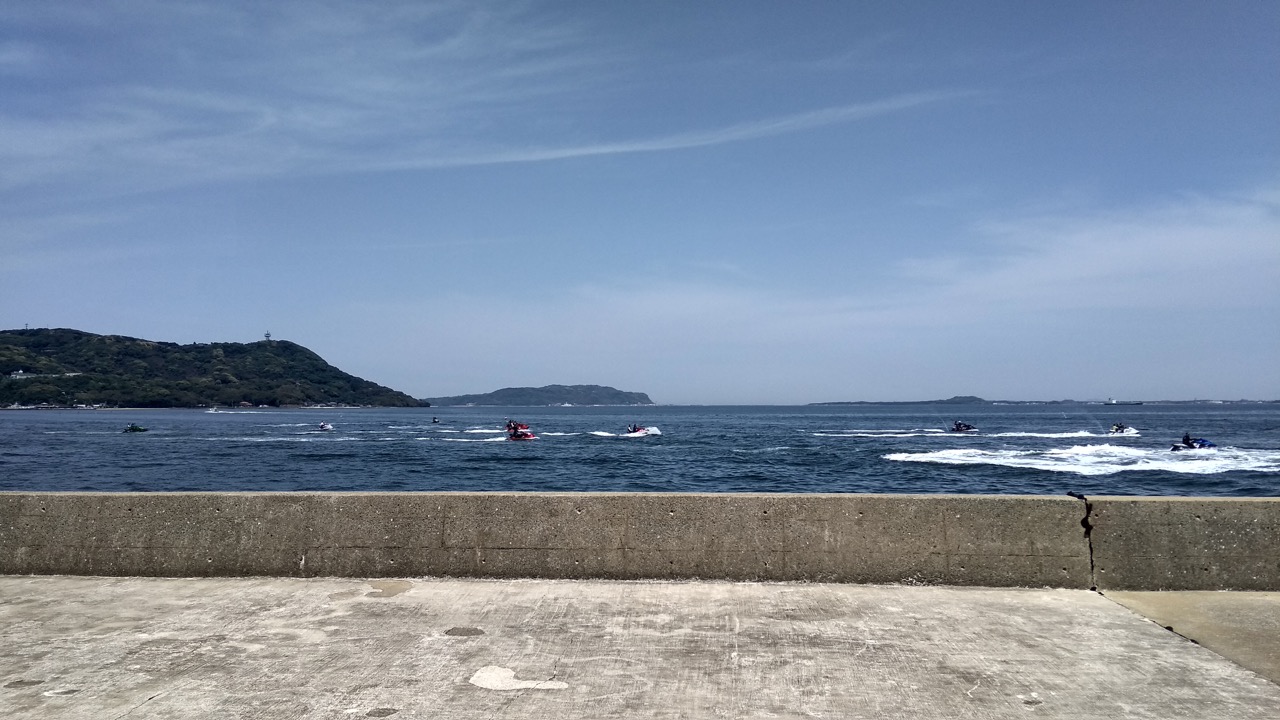 Kathy ponders the instructions for the fender covers we make from a kit of tubing and cable ties.
Kathy ponders the instructions for the fender covers we make from a kit of tubing and cable ties.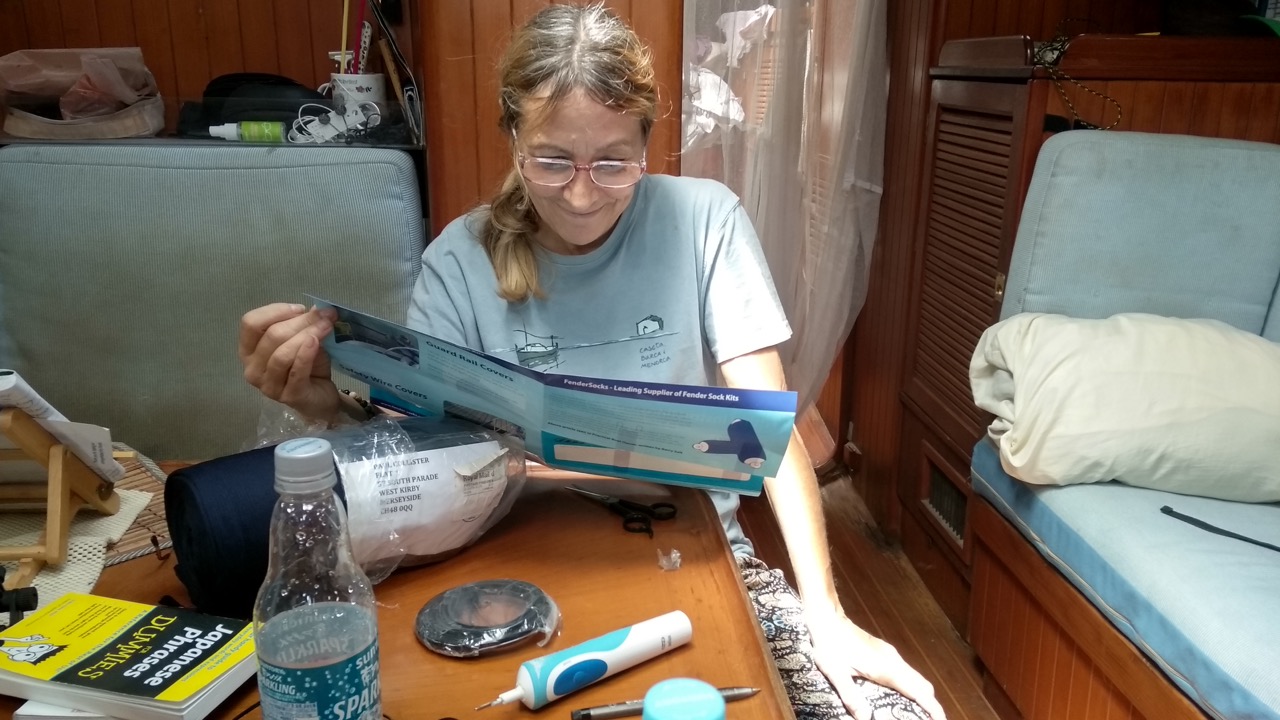
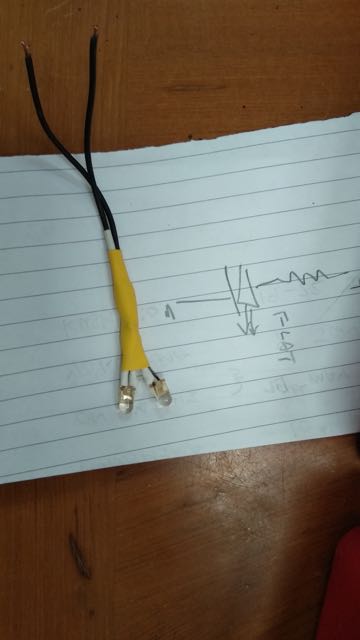 Yet new things break at a pace, the sump pump switch for the shower has failed, both of our toothbrush charges packed in, why?
Yet new things break at a pace, the sump pump switch for the shower has failed, both of our toothbrush charges packed in, why?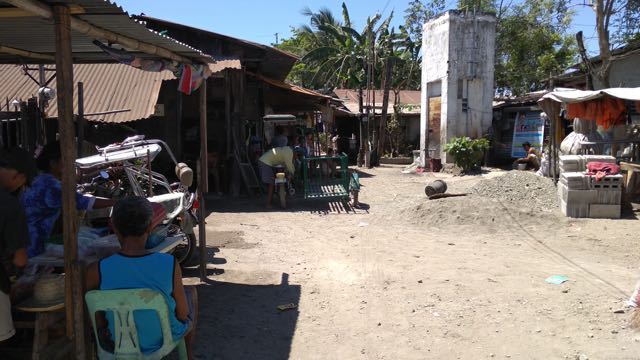 The people there were very poor, they lived in a small shanty like town on the edge of the beach, and although very basic, the people there seemed happy.
The people there were very poor, they lived in a small shanty like town on the edge of the beach, and although very basic, the people there seemed happy.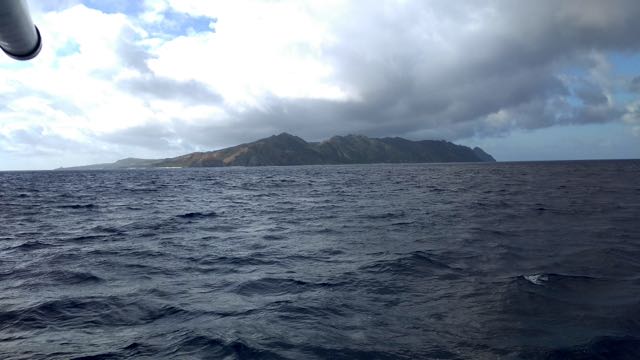
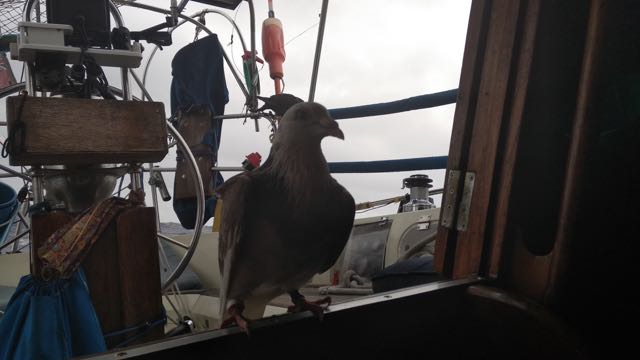 They were all ringed, so presumably they were on their way home.
They were all ringed, so presumably they were on their way home.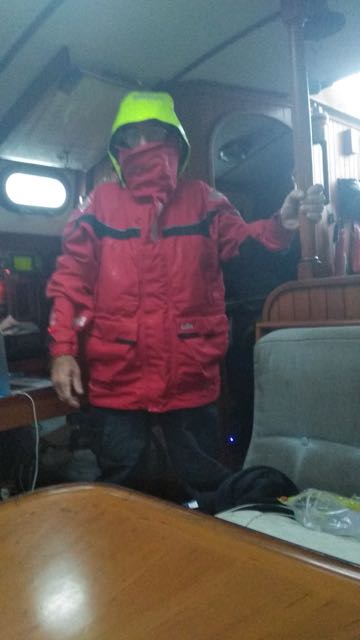 I began to wonder what madness had driven me from Malaysia. Of course all was fixed with the help of a torch and a few resets on the wind sensor.
I began to wonder what madness had driven me from Malaysia. Of course all was fixed with the help of a torch and a few resets on the wind sensor.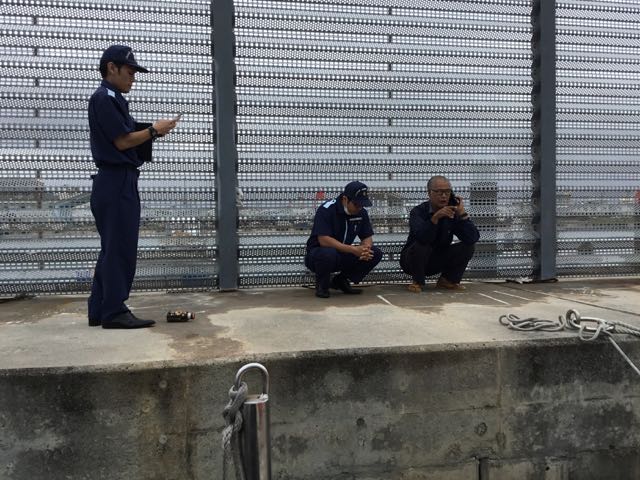 One was the official I had been in email contact with to notify them of our arrival. Pre arrival notification, along with the 7 page forms you have to send is just the start of a prolonged check in process that takes a day or two. The CG was very polite but also vert very keen that we stay on the boat until formalities had been completed, he even seemed upset that kathy put a hand on the wall. We waited an hour while the CG made phone calls and chatted amongst themselves before we were told we had to move to another berth. Then they arranged for one of the big (200ft) CG vessels to launch a RIB to guide us to the dock next to us, something we could have found ourselves by them pointing to the spot.
One was the official I had been in email contact with to notify them of our arrival. Pre arrival notification, along with the 7 page forms you have to send is just the start of a prolonged check in process that takes a day or two. The CG was very polite but also vert very keen that we stay on the boat until formalities had been completed, he even seemed upset that kathy put a hand on the wall. We waited an hour while the CG made phone calls and chatted amongst themselves before we were told we had to move to another berth. Then they arranged for one of the big (200ft) CG vessels to launch a RIB to guide us to the dock next to us, something we could have found ourselves by them pointing to the spot. 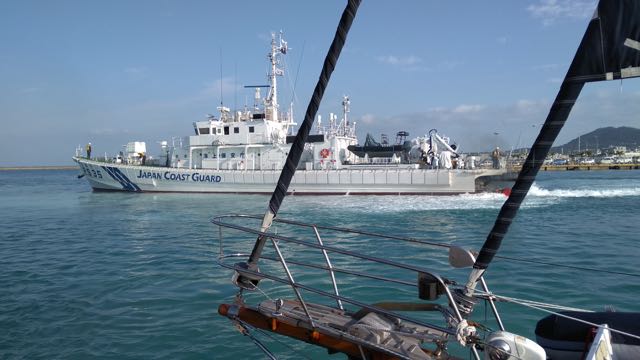 When we were in the new dock, much more foreboding in terms of concrete covered in barnacles, and also 6ft higher up than the decks on our little boat, the CG men reappeared, they were joined by several more CG staff. A regular occurrence over the next 2 days as we started the check in process. We were told to stay on the boat and Quarantine, customs and Immigration would be along soon. Sure enough they all duly turned up and I had 8 people in the cockpit taking turns to get me to fill in forms, customs, Quarantine and Coastguard. Immigration would be done later at the immigration office. While I was dealing with all of this the tide was dropping. I wasn’t allowed ashore to adjust the lines, and they had tied me off with little slack, I hadn’t noticed at first, but the boat was close to the wall, and some passing wake from a powerboat pushed us hard onto a big rubber fender bolted to the wall and smashed a chunk of caprail off, this is the very pretty wood that goes around the edge of the boat.
When we were in the new dock, much more foreboding in terms of concrete covered in barnacles, and also 6ft higher up than the decks on our little boat, the CG men reappeared, they were joined by several more CG staff. A regular occurrence over the next 2 days as we started the check in process. We were told to stay on the boat and Quarantine, customs and Immigration would be along soon. Sure enough they all duly turned up and I had 8 people in the cockpit taking turns to get me to fill in forms, customs, Quarantine and Coastguard. Immigration would be done later at the immigration office. While I was dealing with all of this the tide was dropping. I wasn’t allowed ashore to adjust the lines, and they had tied me off with little slack, I hadn’t noticed at first, but the boat was close to the wall, and some passing wake from a powerboat pushed us hard onto a big rubber fender bolted to the wall and smashed a chunk of caprail off, this is the very pretty wood that goes around the edge of the boat.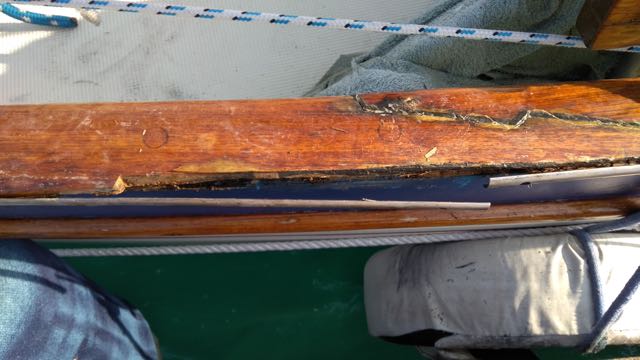 I pointed this out to Kathy and she went and had a look and came back and told me the bowsprit was smashed up. Fortunately it was only the platform,
I pointed this out to Kathy and she went and had a look and came back and told me the bowsprit was smashed up. Fortunately it was only the platform,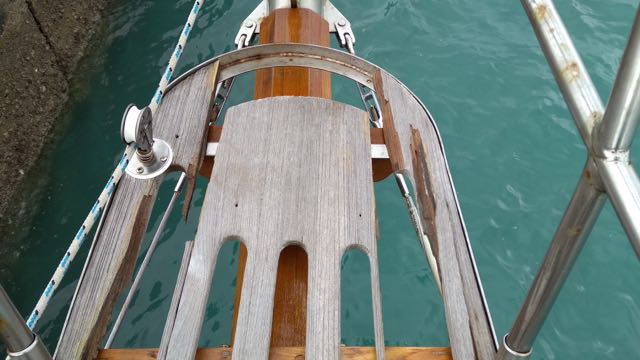 This was on the replacement list anyway, but I expect it smashed when we slammed down into a wave on the passage. I have sellotaped it back together and hope it will get us to America. I may have to screw some wooden slats over it to make it more secure.
This was on the replacement list anyway, but I expect it smashed when we slammed down into a wave on the passage. I have sellotaped it back together and hope it will get us to America. I may have to screw some wooden slats over it to make it more secure.